John Lennon, a cornerstone of The Beatles, didn’t just write and sing history; he played it on a series of iconic guitars. For fans and guitar enthusiasts alike, the instruments Lennon wielded are as legendary as the music itself. This article explores the fascinating history of John Lennon’s guitars, from his early days with The Quarrymen to his solo career, detailing the instruments that shaped the sound of a generation.
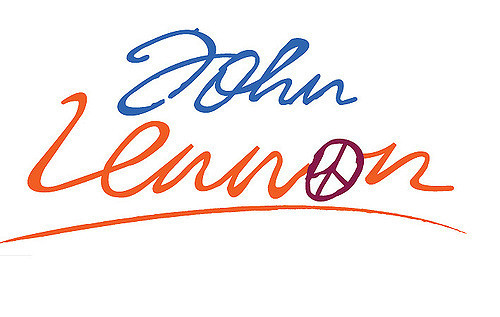 john-logo
john-logo
The Early Days: From Gallotone to Hofner
Lennon’s musical journey began humbly, with instruments that reflected his early aspirations and the burgeoning rock and roll scene in Liverpool.
Gallotone Champion: The First Guitar
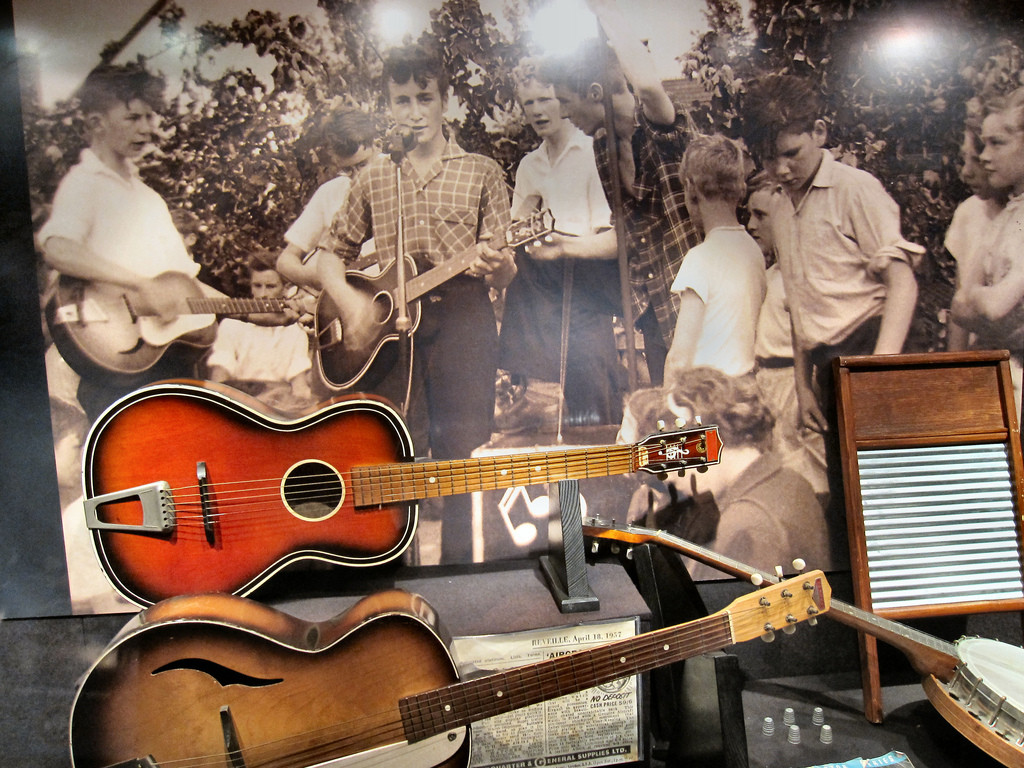 imageslike.com-large-music-the-quarrymen-plus-their-instruments
imageslike.com-large-music-the-quarrymen-plus-their-instruments
His first guitar was a Gallotone Champion, purchased through a mail-order advertisement in Reveille magazine for approximately £10. This affordable South African-made guitar, humorously advertised as “Guaranteed Not to Split,” marked the beginning of Lennon’s guitar playing journey. Legend has it that to avoid his Aunt Mimi’s disapproval, the guitar was delivered to his supportive mother, Julia Lennon’s house. Another account suggests Julia might have even bought it for him in 1957 as he lacked the funds himself. Julia, a banjo player, taught John some basic five-string banjo chords. Initially, Lennon played the Gallotone with the sixth string loosened, adapting banjo chords to the guitar.
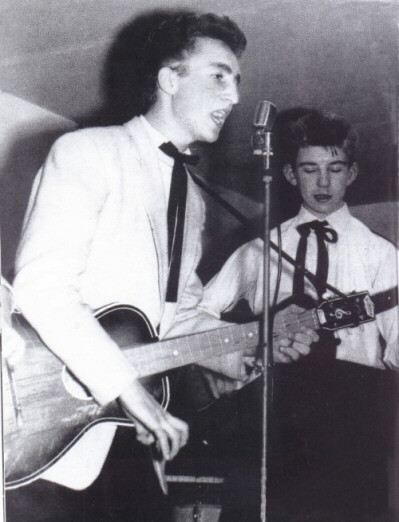 gally1
gally1
This Gallotone became the instrument with which Lennon formed his first band, The Black Jacks, alongside Pete Shotton. As the band evolved and grew, they became The Quarrymen. It was with this very guitar that Lennon played at the St. Peter’s Parish Fete in Woolton, Liverpool, on July 6, 1957, the day Paul McCartney joined the group, a pivotal moment in music history.
There are varying stories about the purchase of this guitar. Some accounts point to Jim Gretty, a salesman at Hessy’s music store, as the person who sold the guitar to Aunt Mimi for John. Gretty, who also worked as a local entertainer, was known for giving free guitar lessons at Hessy’s, a clever sales tactic he suggested to the store owner, Frank Hessy.
The Gallotone’s whereabouts remained unknown for years after The Beatles’ rise to fame. Time of London reported that Lennon left the guitar with Aunt Mimi when The Beatles achieved success.
 john-lennon-j-160e-gibson-acoustic-guitar-auction-761.jpg
john-lennon-j-160e-gibson-acoustic-guitar-auction-761.jpg
 gallotone-student-4__93024.1377473152.1280.1280
gallotone-student-4__93024.1377473152.1280.1280
Sotheby’s auction catalogue noted that proceeds from its sale were partially donated to the Olive Mount Learning Disabilities Directorate in Liverpool, adding a charitable dimension to its historical value. Mimi Smith’s donation letter, included in the catalogue, offered a poignant glimpse into her complex relationship with Lennon’s music:
“With regards to the request for items in support of your Liverpool handicapped musicians appeal, most requests I have to refuse, however, in this case I feel able to make an exception . . . The poor old guitar was in such a state when I found it I had it professionally repaired . . . I hope that through you, John’s possessions can bring pleasure . . .”
A brass plaque, a testament to Mimi’s pragmatic nature and perhaps a touch of irony, was mounted on the headstock, bearing her now-famous words of caution to a young Lennon: “Remember, you’ll never earn your living by it.”
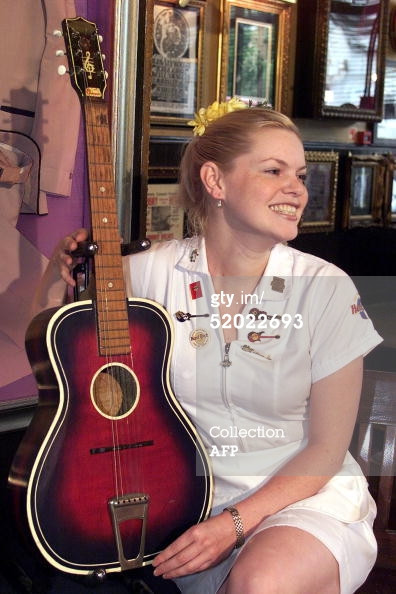 Gallotone
Gallotone
In 1999, this mythic instrument was auctioned for £155,000 ($244,384) to an anonymous bidder, later revealed to be collector Adam Sender. In 2000, the Gallotone went on display at Boston’s Museum of Fine Art, cementing its place in music history.
1958 Dallas Tuxedo: The “Manchester Mystery Guitar”
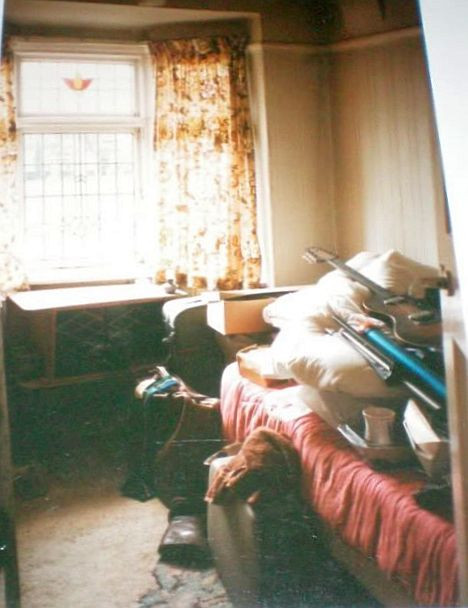 tuxedo06
tuxedo06
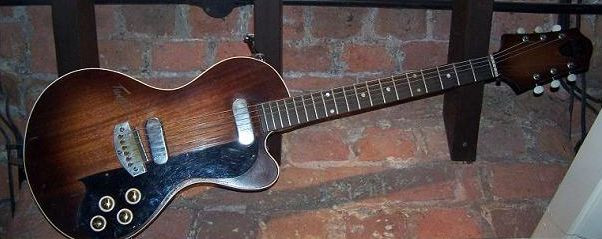 tuxedo2
tuxedo2
The 1958 Dallas Tuxedo, a tobacco-sunburst solid body electric guitar of unknown vintage, is shrouded in mystery. On November 24, 1958, Johnny and the Moondogs, Lennon’s band at the time, competed in a Carroll Levis talent show in Manchester. They had to leave early to catch the last train back to Liverpool. Adding to the hasty departure, Lennon, who arrived guitar-less, suddenly acquired one. Paul McCartney and George Harrison have both suggested Lennon may have stolen a guitar that night from another act. This “Manchester Mystery Guitar” is rumored to be the Dallas Tuxedo.
This Dallas Tuxedo, one of Britain’s earliest electric guitar models, was allegedly hidden in the loft of Mendips, Lennon’s Liverpool home. He was never seen photographed with it. It remained unseen until 1996 when workmen discovered it in the loft along with banjo magazines. Ernie Burkey, the new owner of Mendips, showed the guitar to Beatles enthusiasts Johnny “Guitar” Byrne and Larry Wassgren, who believed it to be the “Manchester Mystery Guitar.” Wassgren passed the guitar to Alan Stratton, and it was later auctioned by Bonhams in 2012.
While circumstantial, the Dallas Tuxedo remains a strong candidate for the “Manchester Mystery Guitar.” However, Beatles archivist Mark Lewisohn casts doubt, citing a witness who described the guitar Lennon acquired that night as “a complete piece of rubbish.” The true identity of the “Manchester Mystery Guitar” remains, for now, unsolved. Notably, research by Tim Fletcher suggests the Manchester talent show appearance was in 1958, not 1959 as commonly believed.
1958 Hofner Senator (Compensator) SN 4697: Hamburg Hearsay
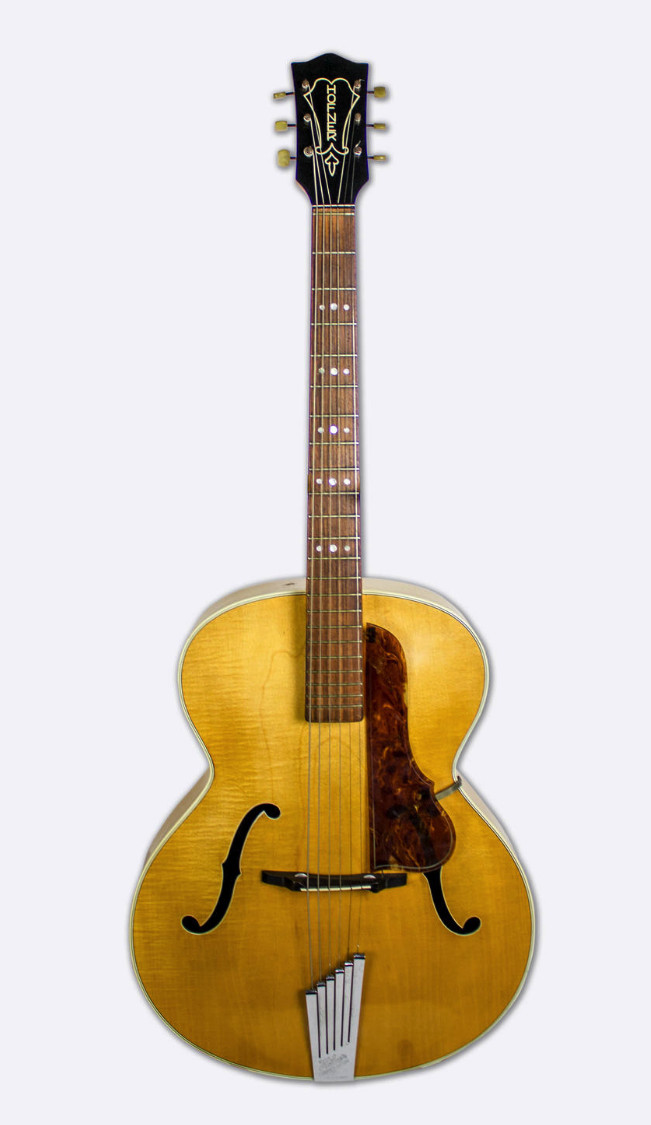 snip20171225_2
snip20171225_2
The 1958 Hofner Senator (Compensator) SN 4697 is linked to Lennon’s Hamburg days, although its ownership is debated. No photographs exist of Lennon playing this guitar, and he never mentioned owning a Hofner Senator. An “authenticating” photo provided to a purchaser actually shows Lennon with a different guitar, his Epiphone Casino.
Ken Brown, a former Quarryman who owned a Senator, stated, “I do not recall John actually owning one during the time I knew him. He may of course have acquired one at some later stage. I of course did own such a guitar.” Brown hinted at further details in his autobiography.
Despite the lack of direct evidence, a letter from George Harrison authenticating the guitar’s provenance for a previous purchaser, Lily Evans, adds credibility. Harrison’s guitar expertise and memory are highlighted, with Pete Shotton corroborating Harrison’s attention to detail regarding Beatles’ instruments.
Purchased at a Christie’s auction in July 2009 for $337,226, the Hofner Senator was displayed in the lobby of AEI Music in Seattle, Washington, and later loaned to the Rock and Roll Hall of Fame in December 2017, highlighting its collectible status.
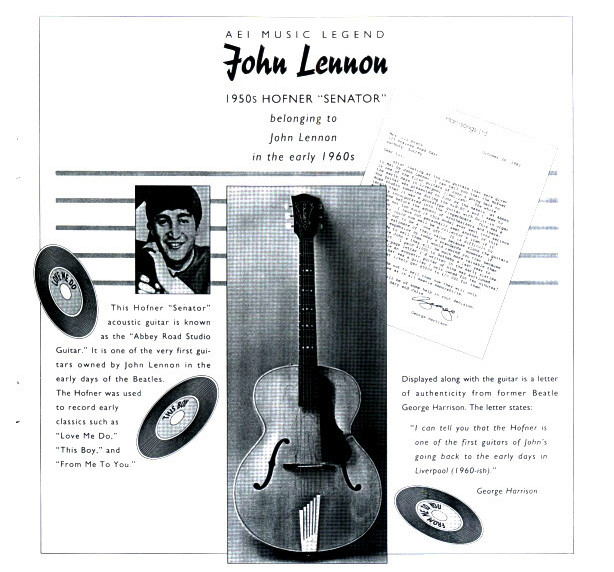 snip20170330_1
snip20170330_1
1959 Hofner Club 40 126/B: Casbah Club Days
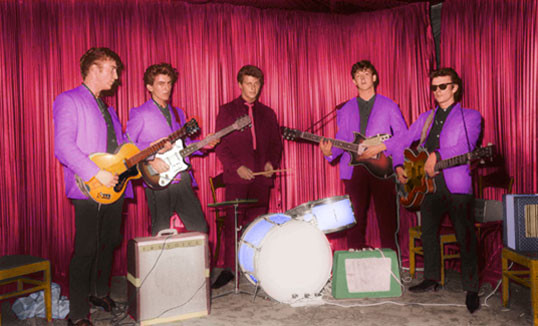 indracolour
indracolour
Lennon acquired his Hofner Club 40 126/B just before The Quarrymen’s first performance at the Casbah Coffee Club. A hire-purchase receipt from Hessy’s Music shop dated August 28, 1959, details the sale of a “Club 40 Hofner guitar” to John Lennon, described as a “student.” Aunt Mimi acted as guarantor, placing a £17 deposit on the guitar, which had a total cash price of £28/7/-, but hire-purchase increased it to £30/9/- (£30.45, approximately $85 then, around £400 or $560 today). This receipt disproves the long-standing story that Mimi bought Lennon his “first guitar” for £17.
 SilverBeatles
SilverBeatles
This Hofner Club 40 was played at The Casbah Coffee Club, an important early venue for The Beatles. To commemorate Hofner’s 120th Anniversary in 2007, they released the Hofner “John Lennon” Club 40 Limited Edition Guitar, with only 120 produced worldwide, celebrating this significant instrument in Lennon’s early career.
 snip20190216_10
snip20190216_10
Another view of the Hofner “John Lennon” Club 40 Limited Edition Guitar, emphasizing its craftsmanship and limited edition status.
The Rickenbacker Era: An Enduring Sound
Lennon’s association with Rickenbacker guitars is perhaps one of his most defining instrumental choices, shaping the iconic sound of The Beatles during their rise to global fame.
1958 Rickenbacker Capri 325 Serial Number V81: The “Holy Grail”
 The Holy Grail 1960 325 Capri
The Holy Grail 1960 325 Capri
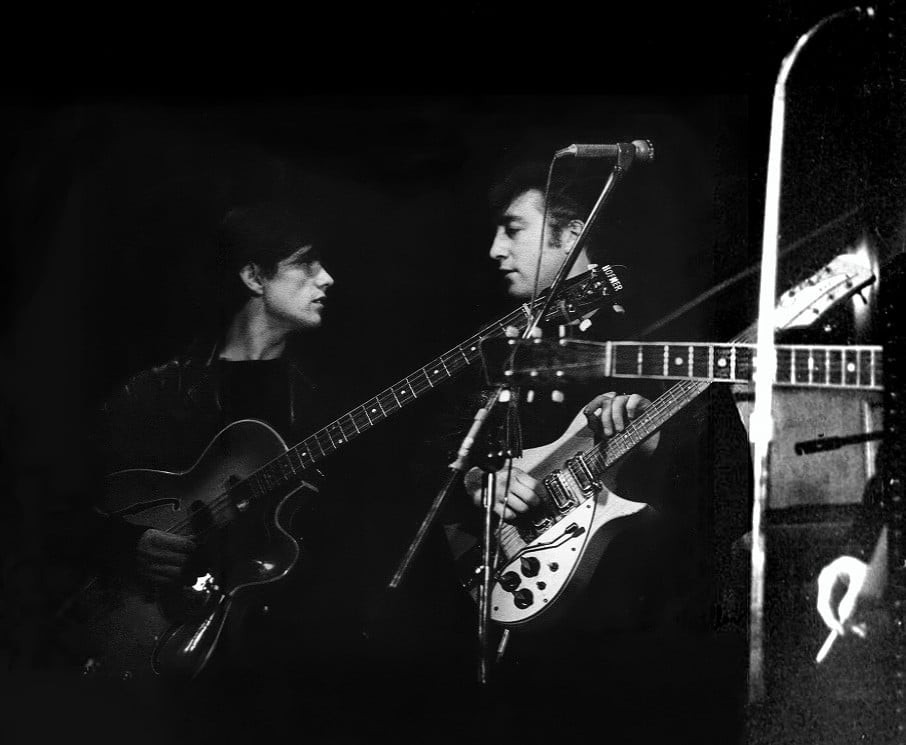 126213599_3413629892083409_3578830943514906415_n.jpg
126213599_3413629892083409_3578830943514906415_n.jpg
The 1958 Rickenbacker Capri 325 Serial Number V81 is considered a “Holy Grail” for Beatles fans. George Harrison recalled Lennon’s purchase in Hamburg in 1960: “We went into this shop … in Hamburg. John bought that little Rickenbacker that became very well known through the Beatle concerts, with a scaled-down neck. I think he’d just seen an album by Jean Thielemans, who used to be the guitar player in the George Shearing Quintet and had one of those Rickenbackers. You have to imagine that in those days, when we were first out of Liverpool, any good American guitar looked sensational to us. We only had beat up, crummy guitars at that stage. We still didn’t really have any money to buy them, but I remember that John got that Rickenbacker … what they call ‘on a knocker’, you know? [Money] down and the rest when they catch you. I don’t know if he ever really paid them off”.
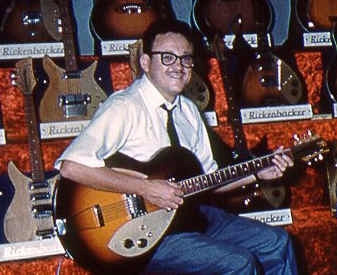 toots
toots
 new-2
new-2
This 1958 Rickenbacker Capri 325, serial number V81, was one of only 28 produced in 1958, and one of eight with a natural (mapleglo) finish. Pete Best also remembered the purchase: “John was looking around, he had his old Hofner Club 40, and we went into this music shop. We were all there together – we used to hunt around in packs, discovering what was available. Just mooching in general, as musicians do. John saw this Rickenbacker, and what actually knocked him out was the short scale of the fingerboard. Whereas before he had to stretch, John found that he could do the same riffs and everything without hardly moving his fingers. He just fell in love with it. He liked the sound. The Rickenbacker was his guitar!” Around the same time, Lennon also acquired a Fender Tremolux amp. Astrid Kirchherr took the first photos of Lennon with his Rickenbacker at the Hamburg Dom Funfair in late 1960.
 20914463_1829656520381992_7442899893336556145_n.jpg
20914463_1829656520381992_7442899893336556145_n.jpg
The “Hamburg” Rickenbacker 325 is unique due to its configuration, modifications, and history. It lacks a sound hole and elevated pickguard, features uncommon in later models. Early 1958 Capri models had a single lucite control plate. By late 1958, elevated pickguards were introduced. Lennon’s 325 also unusually has four controls. Early 325s had two rotary controls and a pickup selector. Rickenbacker retrofitted unsold 325s with two tone and two volume controls, explaining the skewed control placement on Lennon’s guitar.
Documents indicate that four 325s were sent to Hamburg. Mr. F. C. Hall of Rickenbacker recalled one sold to Walter Hofner at a Chicago trade show in 1959, and three maple finish 325s, including Lennon’s, shipped to Framus Werke in Germany in October 1958.
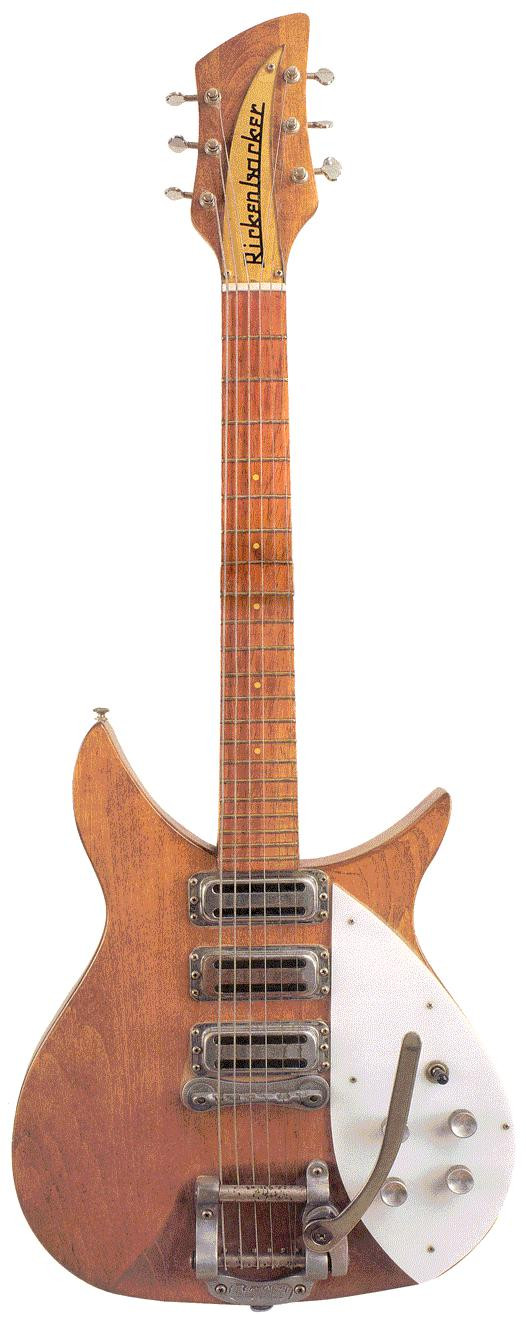 v81
v81
Serial number V81 confirms Lennon’s guitar was the second Capri produced. Two other 1958 Rickenbacker Capri 325s, serial numbers V82 and V93, are also notable.
1958 Rickenbacker Capri 325 Serial Number V82 & V93
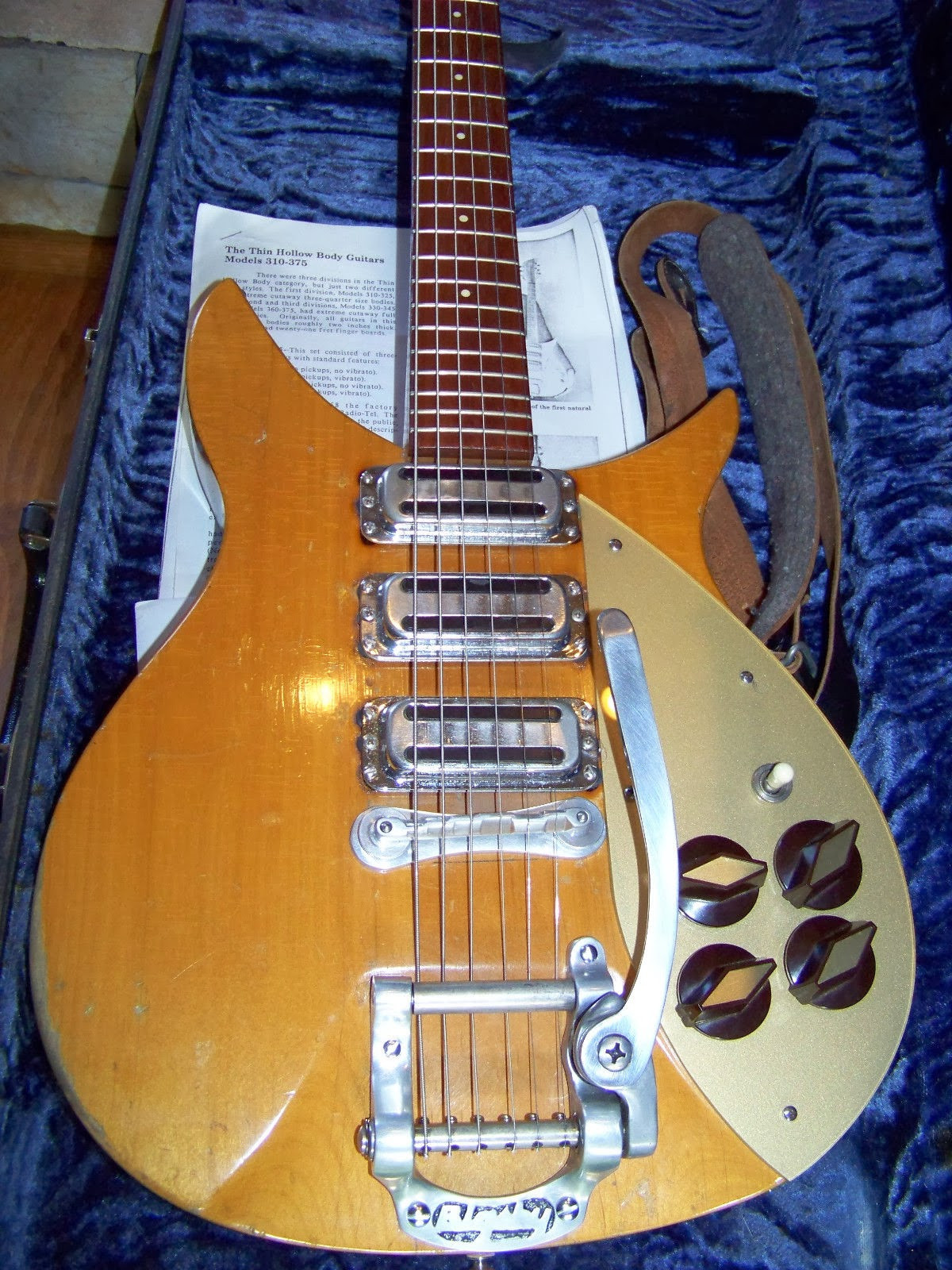 V82
V82
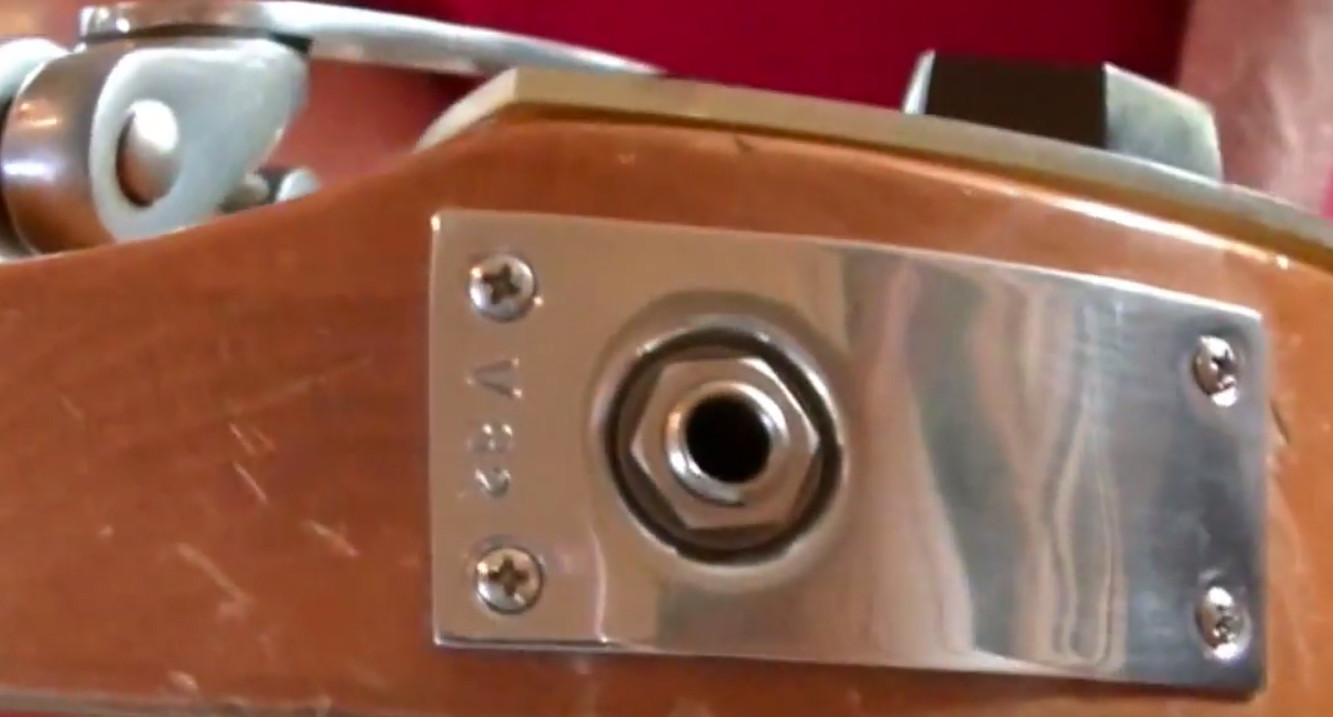 V82b
V82b
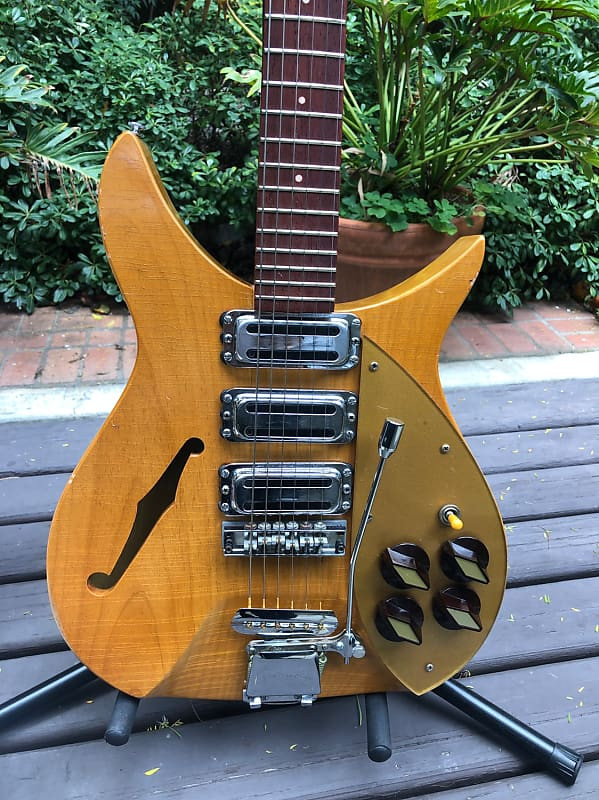 v93
v93
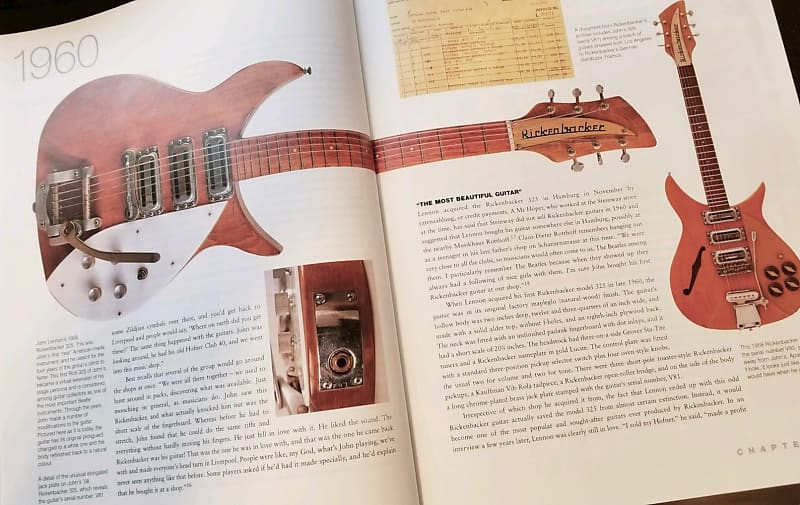 v933
v933
These guitars, along with Lennon’s V81, are exceptionally rare. Only eight natural finish 325s were made in 1958, and Lennon’s, like V82, has no ‘f’ sound hole, unlike most 325 Capris. Both V81 and V82 have elongated jack plates, a feature of early models before smaller plates were introduced around serial number V90.
Lennon’s V81, being the second Capri produced and remaining in stock, may have been used as a trade show model before being ordered for Germany. Its unique features make it exceptionally valuable, possibly the most valuable guitar globally. Only 28 of this model were made in 1958, with unsold units reconfigured from 2 to 4 knobs. Lennon’s 325 body and neck are alder, not maple as initially thought. Some believe Musikhaus Rotthoff in Hamburg acquired the prototype from the New York trade show, which Lennon purchased. Close inspection supports this, noting identical pickguard, screws, wood grain, and vibrato arm.
The Black Rickenbacker: A Transformation
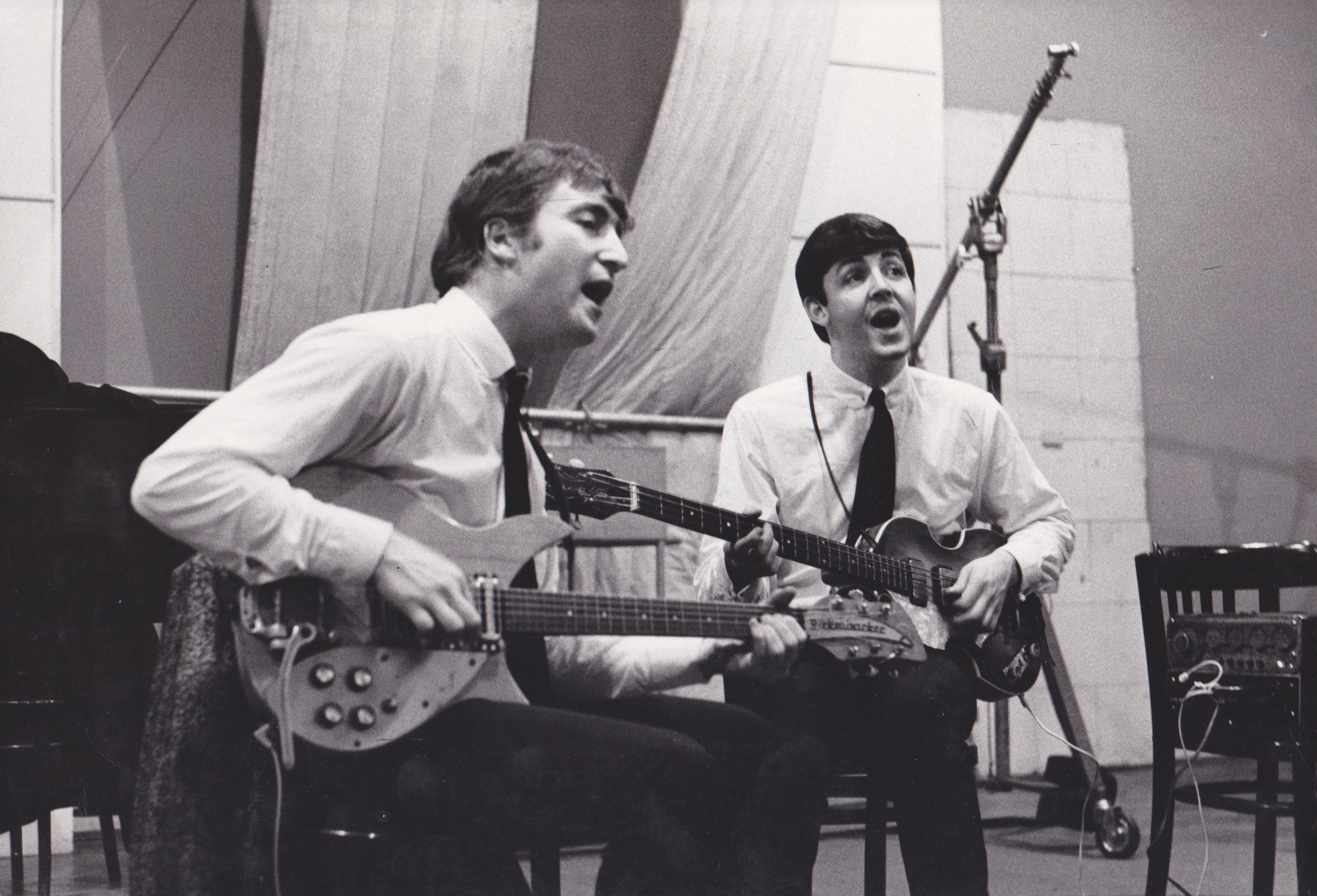 scan-4861.jpeg
scan-4861.jpeg
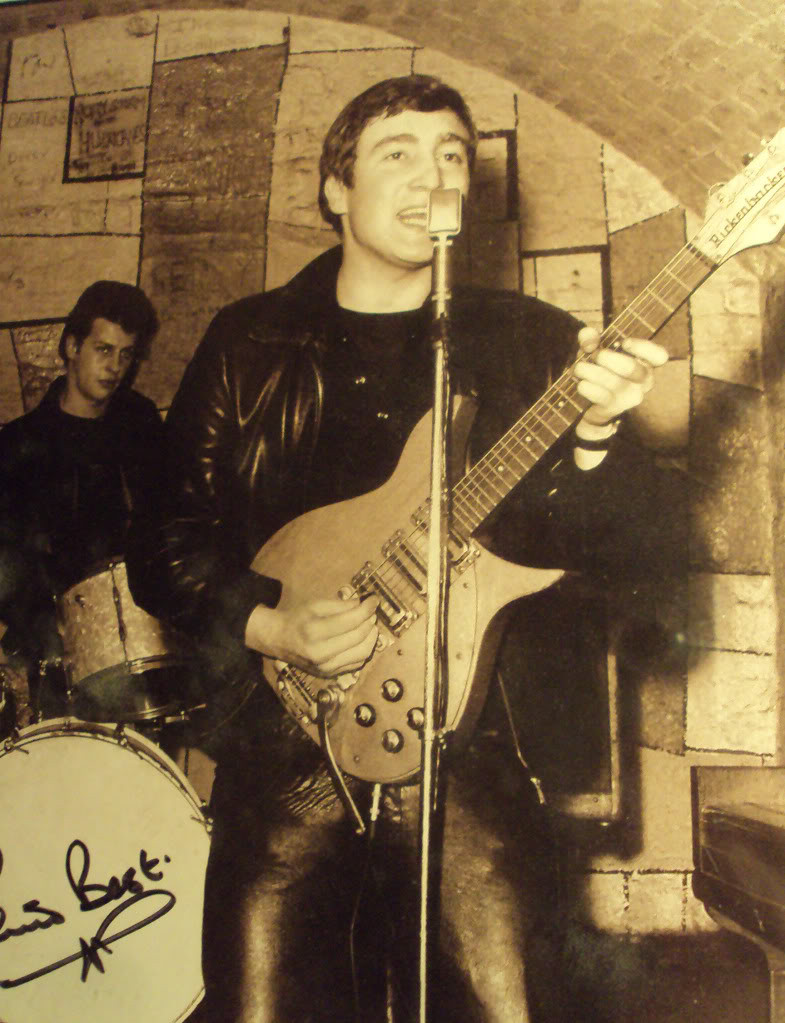 DSC06023
DSC06023
 37794306_10155414348707077_4812385029806096384_n.jpg
37794306_10155414348707077_4812385029806096384_n.jpg
 Sullivan Rehearsals
Sullivan Rehearsals
Lennon famously painted his 1958 Rickenbacker Capri 325 black. Chris Wharton, a friend of The Beatles, recounted the story: John asked Chris to get his guitar painted black, possibly just for a change. Chris’s father’s haulage business used Charlie Bantam, a perfectionist coach painter. Charlie reluctantly agreed to paint it with black Tecaloid enamel, used on Albion wagons. It took days and several coats. The control panel remained gold, possibly repainted. When returned, Lennon joked it was “back the wrong way around.” Billy Kinsley of The Mersey Beats confirmed this event, likely around September 1962.
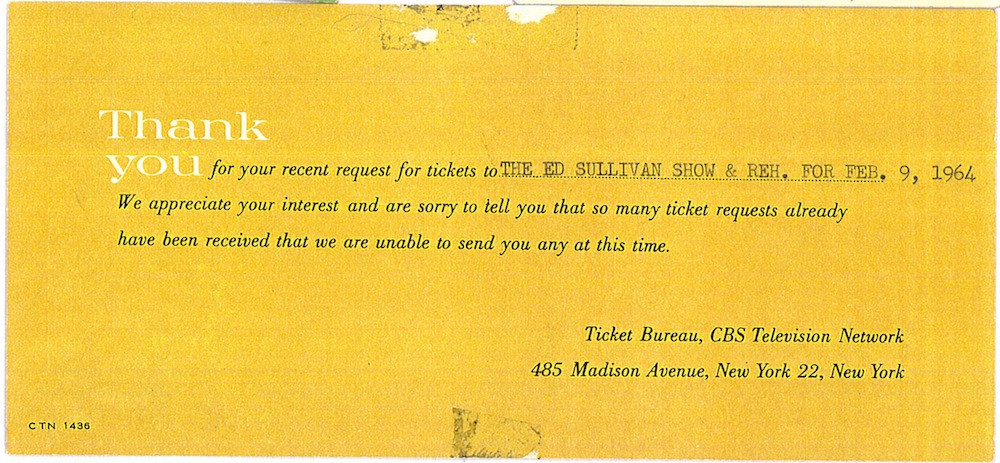 edsullivan.jpg
edsullivan.jpg
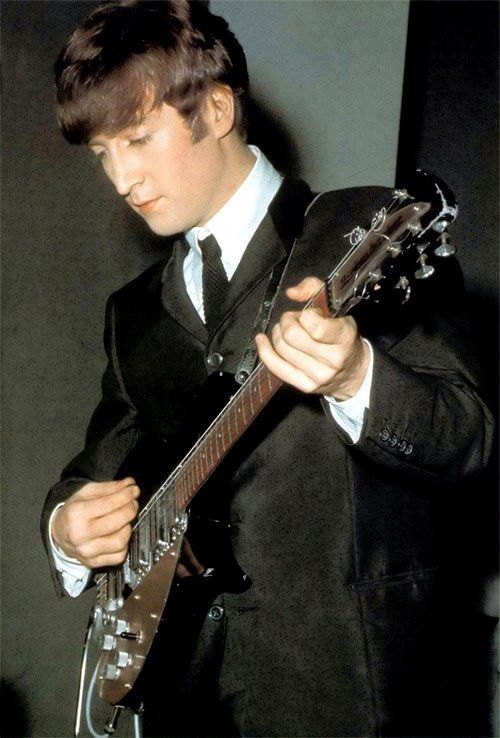 Jo0hn-Lennon-the-beatles-7095228-500-738.jpg
Jo0hn-Lennon-the-beatles-7095228-500-738.jpg
By 1972, the Capri 325’s electronics were failing due to Lennon’s rough handling. Ron DeMarino restored it, discovering wiring issues from the black paint job, with one pickup disconnected. Lennon often played with the switch in the middle position, using the neck and bridge pickups, as the middle pickup was faulty. Some speculate Lennon disconnected it to prevent “clicking” during recordings.
 snip20161106_4
snip20161106_4
The last public performance with the ’58 Rickenbacker 325 was at Carnegie Hall in 1964. After the first Ed Sullivan Show on February 9, 1964, The Beatles played in Washington D.C. on February 11th and Carnegie Hall on February 12th. They then went to Miami for the second Ed Sullivan show, where Lennon received his 1964 Rickenbacker 325.
Original Parts Auctioned
 V81
V81
Ron DeMarino later auctioned original parts from the 1958 Rickenbacker 325, including Grover machine heads and the gold pickguard, at Tracks Auction in England. DeMarino received these parts from Lennon in August 1972, who said he no longer needed them.
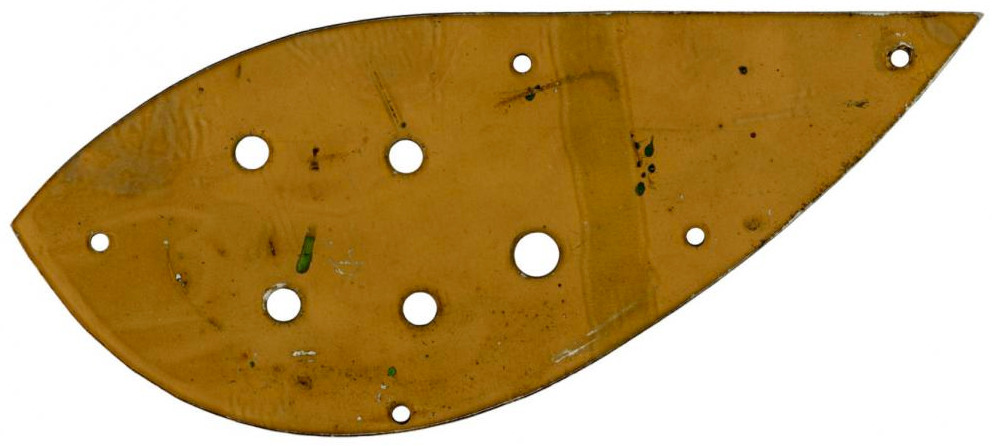 Pickguard
Pickguard
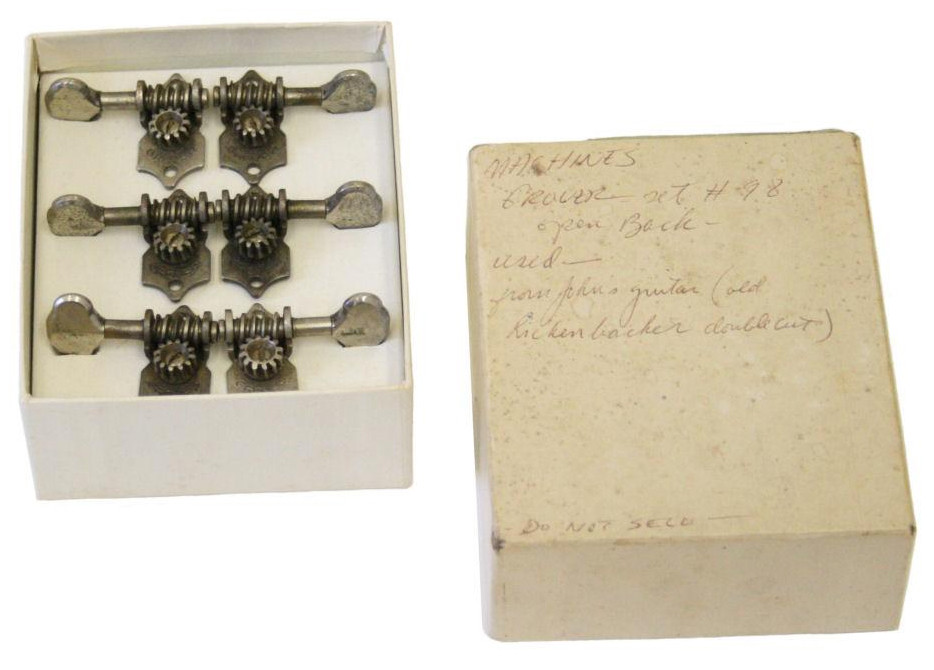 Grovers
Grovers
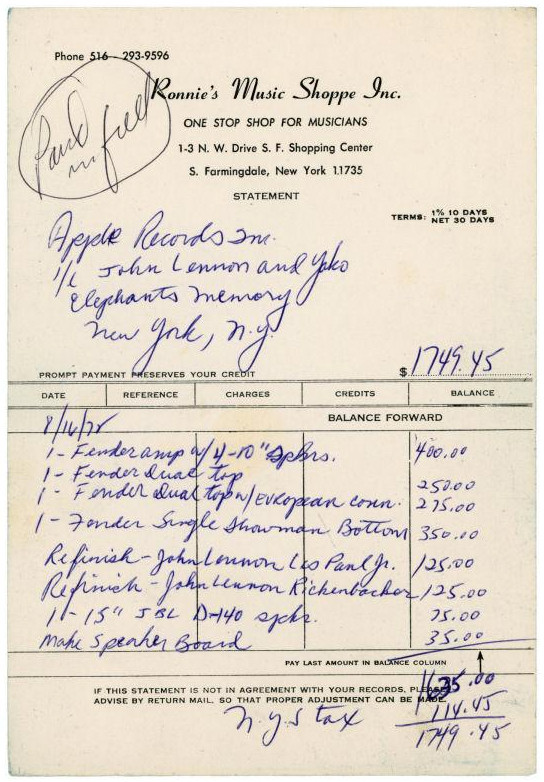 Receipt2
Receipt2
1964 Rickenbacker 325 c64 “Miami” SN DB-122: The Replacement
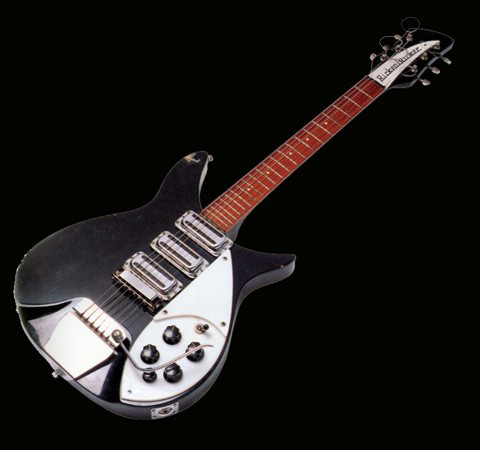 1964 Rickenbacker 325
1964 Rickenbacker 325
The 1964 Rickenbacker 325 c64 “Miami” SN DB-122 replaced the 1958 Capri 325. It was delivered to Lennon at the Deauville Hotel during The Beatles’ 1964 visit to America. The new black model 325 was sent directly from the Rickenbacker factory in California. Lennon first played this guitar with The Beatles during rehearsals for The Ed Sullivan Show.
 gengh.png
gengh.png
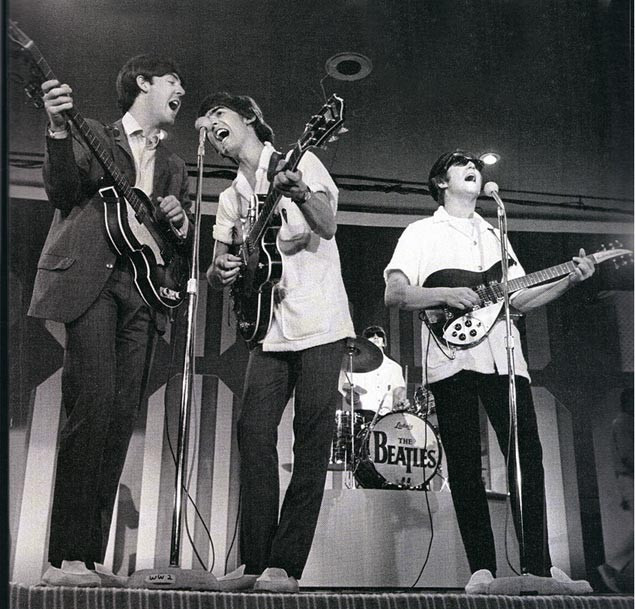 V64MiamiSullivan
V64MiamiSullivan
 5.jpg
5.jpg
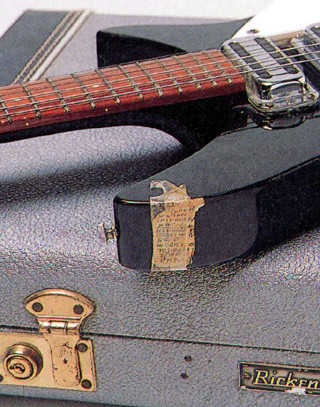 325miamilist
325miamilist
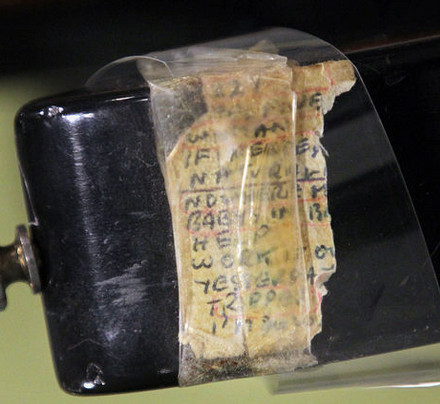 Setlist
Setlist
During the 1964 Hammersmith Christmas show, Lennon dropped the guitar, cracking the headstock.
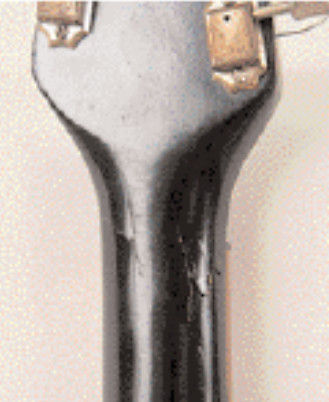 neck.png
neck.png
 130274527_946124949250098_8713538084047149300_n.jpg
130274527_946124949250098_8713538084047149300_n.jpg
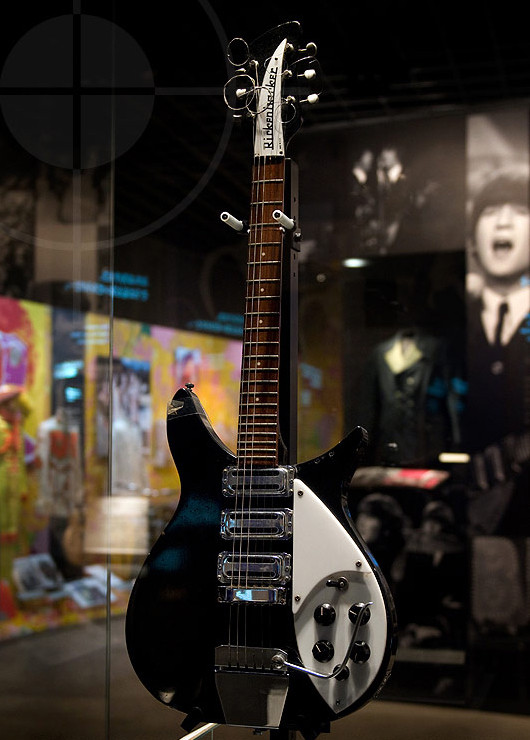 Rickenbacker325JetGlo
Rickenbacker325JetGlo
The 1964 Rickenbacker 325 was displayed at the John Lennon Museum in Tokyo, Japan, until its closure in 2010.
Dorothy “Dotty” Tandle: The Builder of Lennon’s “Miami” Rickenbacker
A fascinating story emerged about the creation of Lennon’s 1964 325 c64 “Miami” Rickenbacker. Mark Raymond from Hartwick, New York, shared that his mother, Dorothy “Dotty” Tandle, assembled and finished this custom-order guitar at Rickenbacker in February 1964.
Dotty sanded the body, worked on the neck and fretboard, and assembled the guitar after finishing. She performed all tasks except woodworking and painting. She also worked on other famous guitars of that era, including George Harrison’s first 360/12 production model, the first Rickenbacker with a fifth tone knob (John’s 325 c64 Miami), the first RIC 325/12 (custom for John), and the first left-handed bass (for Paul McCartney).
After assembling Lennon’s guitar, the tuner/inspector asked Dotty what song she wanted to hear played on it. She requested “Peanut Butter And Jelly,” a song she wrote about her son Mark’s childhood messes. The tuner played, and Dotty sang, marking the first song played on Lennon’s famous 325, which also has a “GREEN” check mark inside.
 dotty.jpg
dotty.jpg
Dotty’s meticulous work was praised by Ward Deaton, GM at Rickenbacker. Dotty, now 89 and living in Southern California, is proud of her contributions to music history. Her son Mark also built a Fender Rhodes Electric Piano for John Lennon in the seventies.
1964 Rickenbacker 325-12 String: A Rare 12-String
 12string.png
12string.png
 16807147_1465639210115512_5401335774528253570_n.jpg
16807147_1465639210115512_5401335774528253570_n.jpg
 16649561_1465638866782213_4913637083481582339_n.jpg
16649561_1465638866782213_4913637083481582339_n.jpg
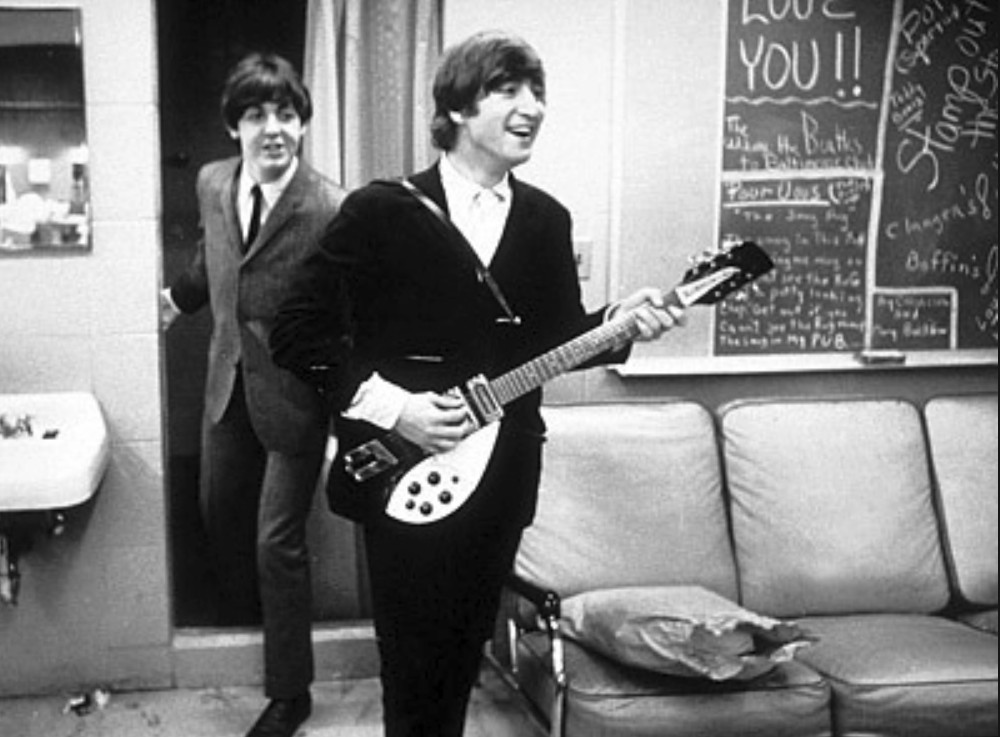 12stringmaybe.png
12stringmaybe.png
The 1964 Rickenbacker 325-12 String was used sparingly by Lennon in live performances. “Beatles Gear” notes Lennon used it in concert at the Boston Gardens on September 12, 1964, one of the few times he was photographed playing it live. It was usually a spare on tour.
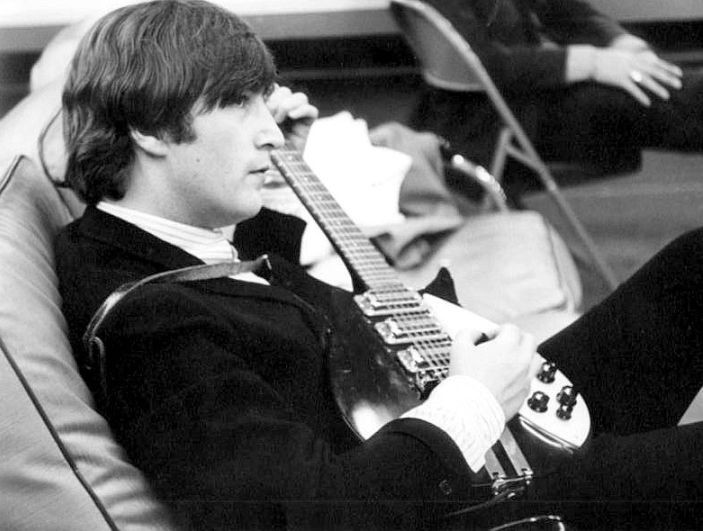 jlric122
jlric122
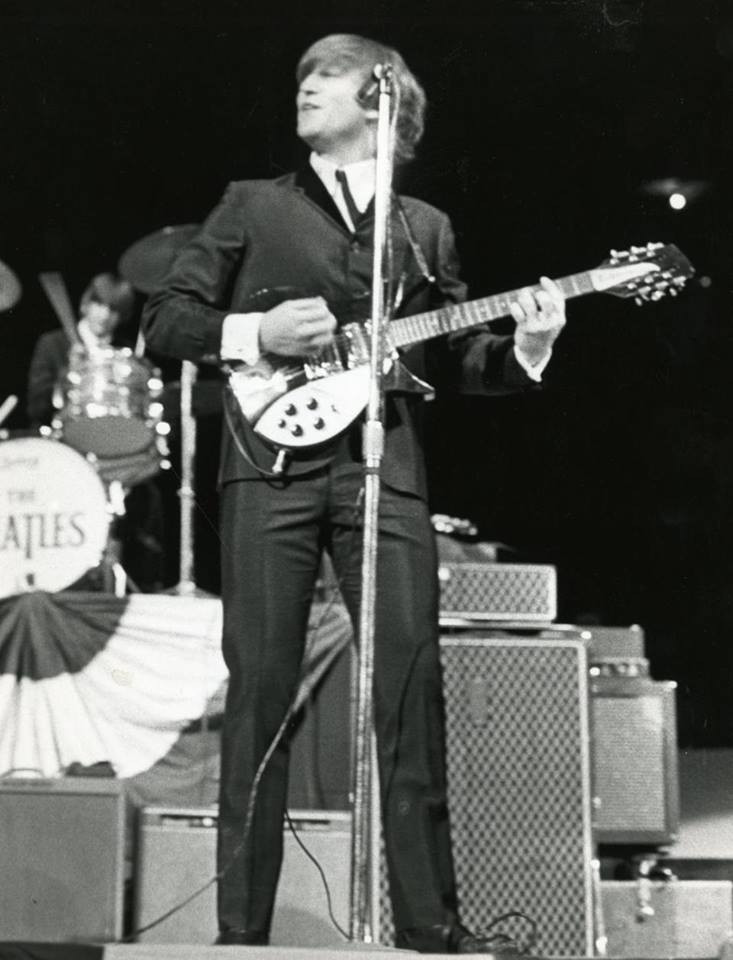 john12
john12
 12string
12string
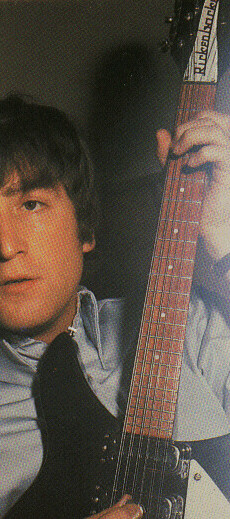 snip20170330_2.png
snip20170330_2.png
Lennon also played the 325-12 string on a Dutch TV show in 1964, lip-syncing to a recording, with Jimmy Nichols on drums as Ringo Starr was ill.
 jimmy.png
jimmy.png
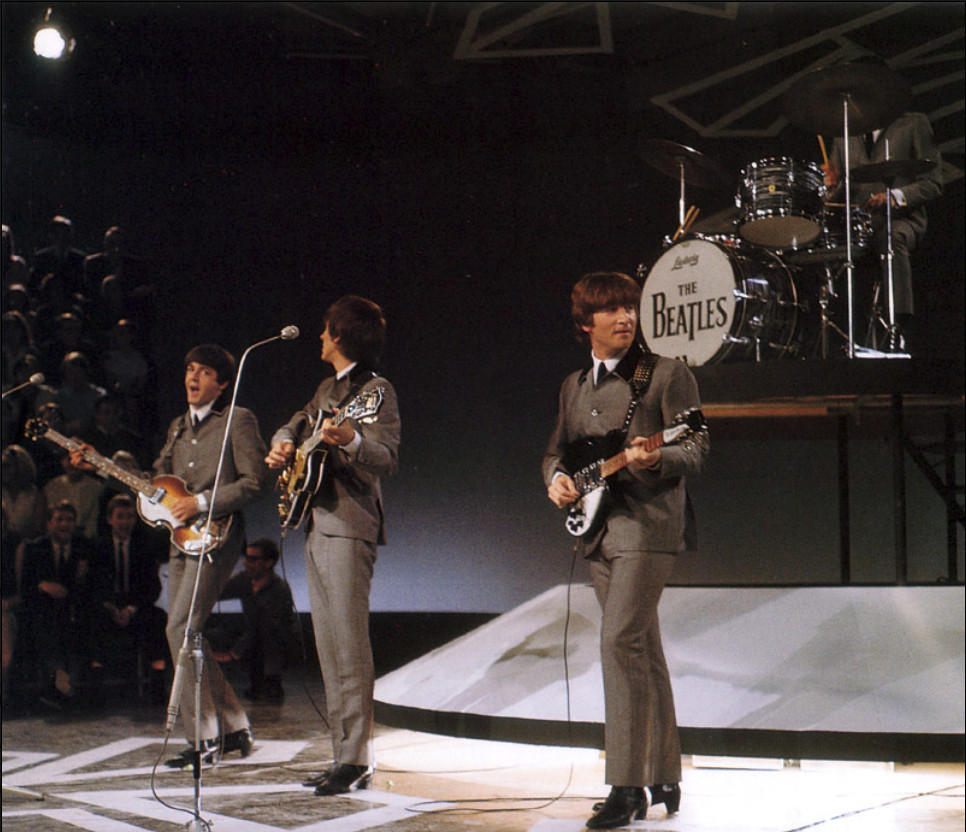 john12stringclear.png
john12stringclear.png
1964 Rickenbacker 325 Model 1996 “Beatle Backer” SN DE519: The Export Model
 John-Lennon-Rickenbacker
John-Lennon-Rickenbacker
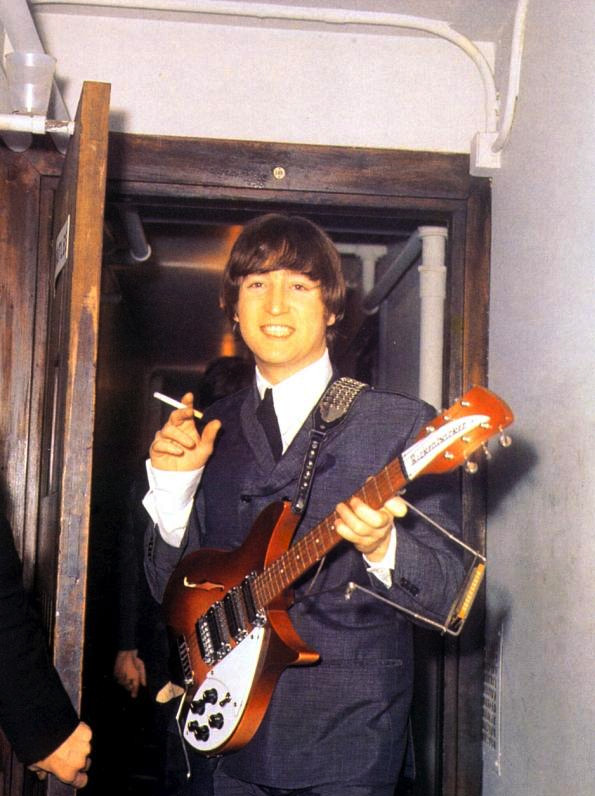 Snip20151113_10
Snip20151113_10
The 1964 Rickenbacker 325 Rose-Morris Model 1996 “Beatle Backer” SN DE519 was an export version that replaced Lennon’s damaged 1964 Rickenbacker 325 Jet-glo. After Lennon cracked the headstock of his Jet-glo at the 1964 Hammersmith Christmas show, he used this Rose-Morris Model 1996 as a home studio guitar, eventually giving it to Ringo Starr.
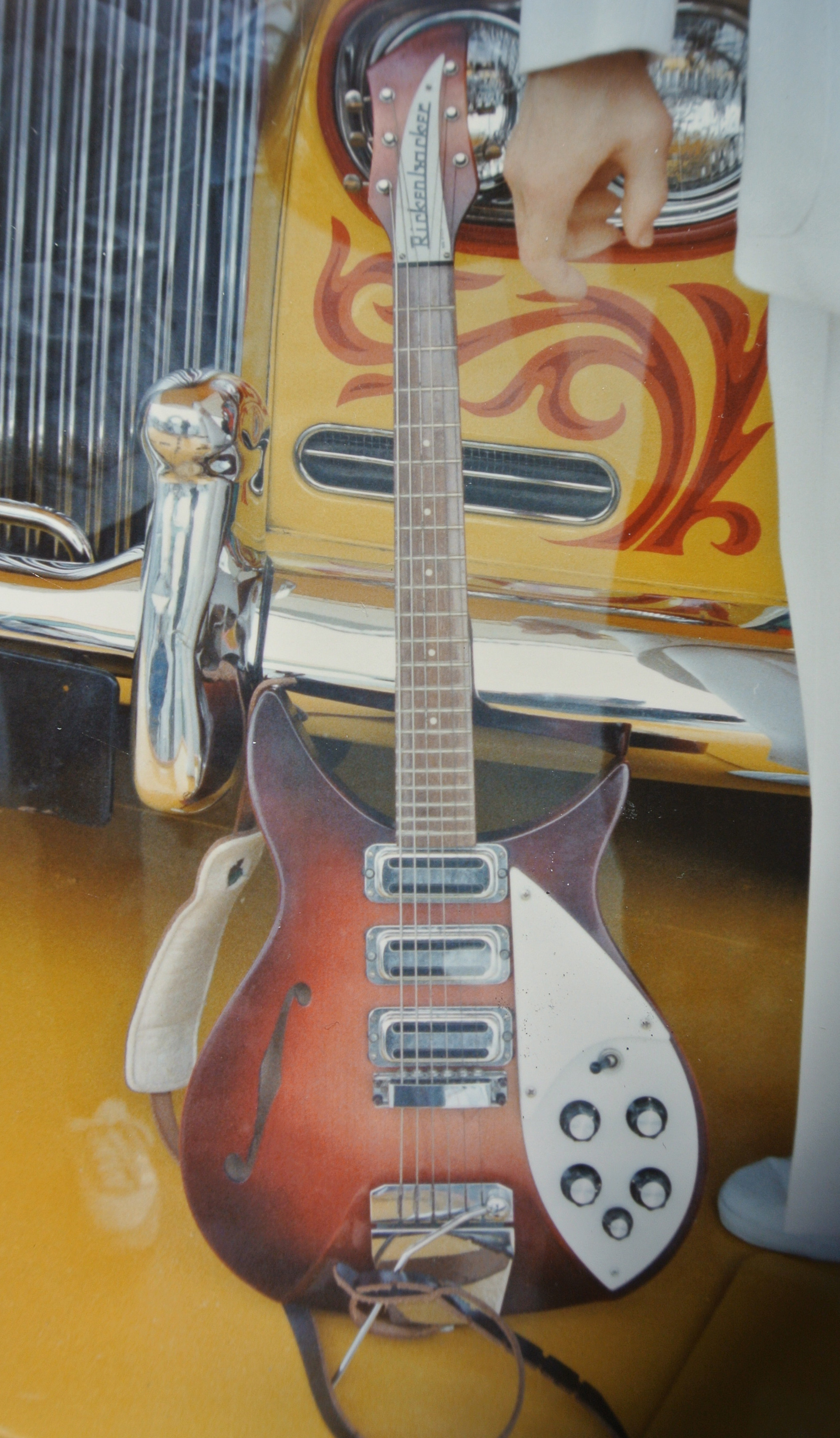 Johns1964_1966
Johns1964_1966
This 1964 Rickenbacker 325 Rose-Morris Model 1996 was displayed at EXPO 86 in Vancouver, BC. Ringo Starr later auctioned it and George Harrison’s 1962 Gretsch Tennessean.
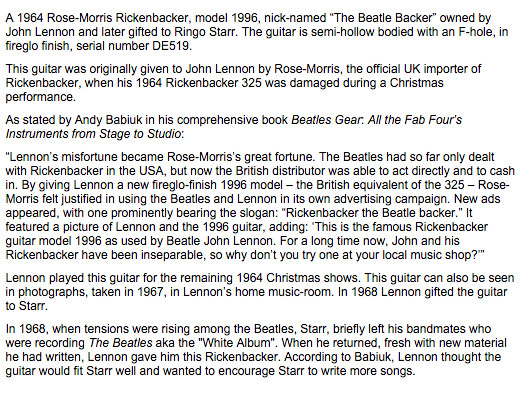 Snip20151113_11
Snip20151113_11
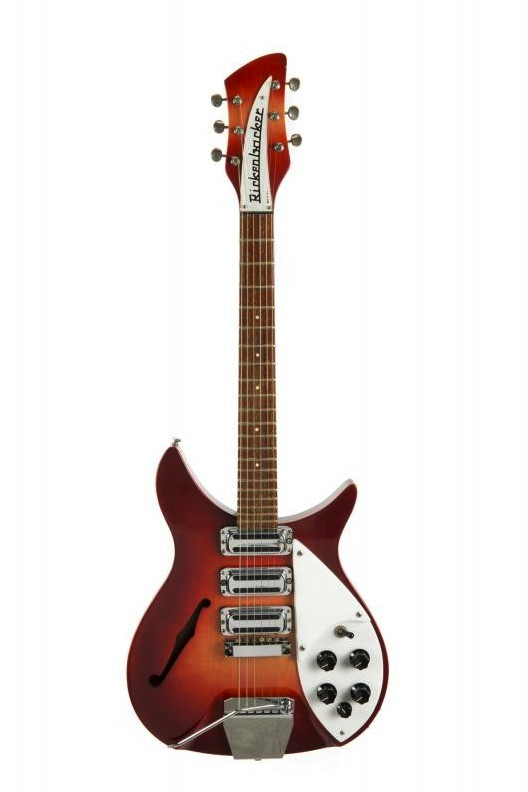 Snip20151113_12
Snip20151113_12
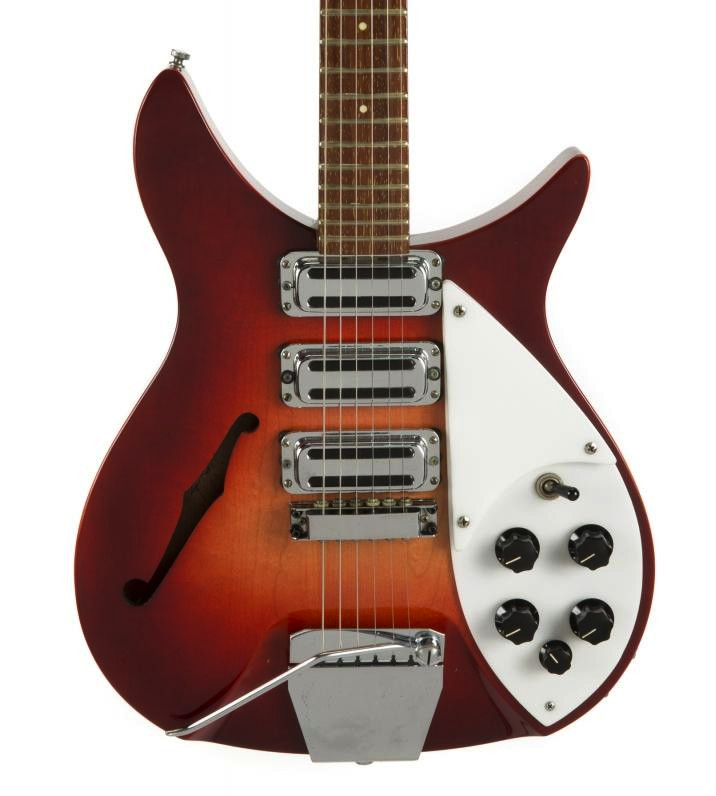 Snip20151113_9
Snip20151113_9
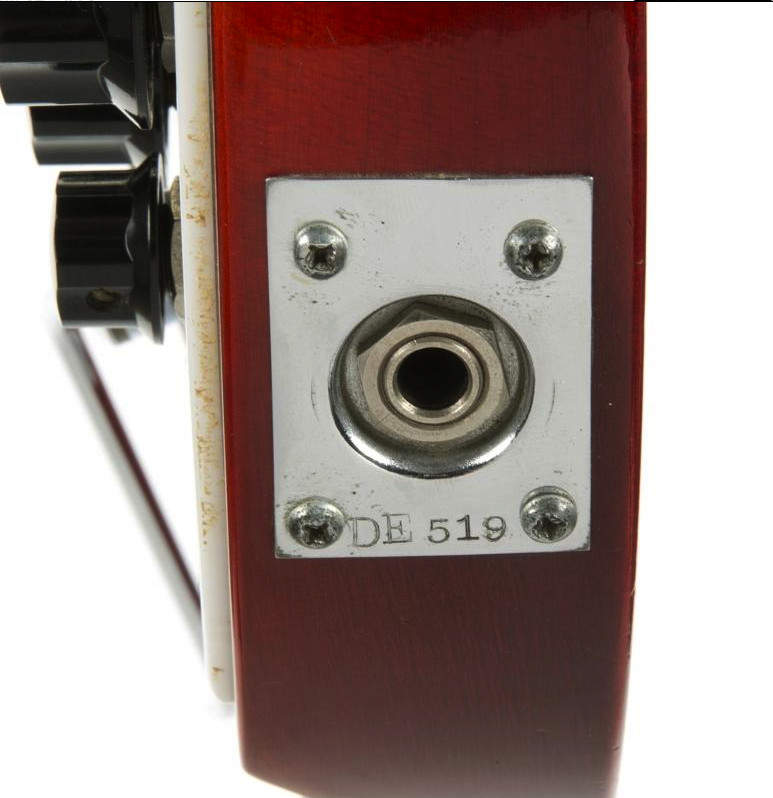 Snip20151113_13
Snip20151113_13
The guitar sold at Julien’s Auctions for $910,000. Jim Irsay, owner of the Indianapolis Colts, purchased it as part of his extensive Beatles gear collection.
Jim Irsay’s Beatles Collection
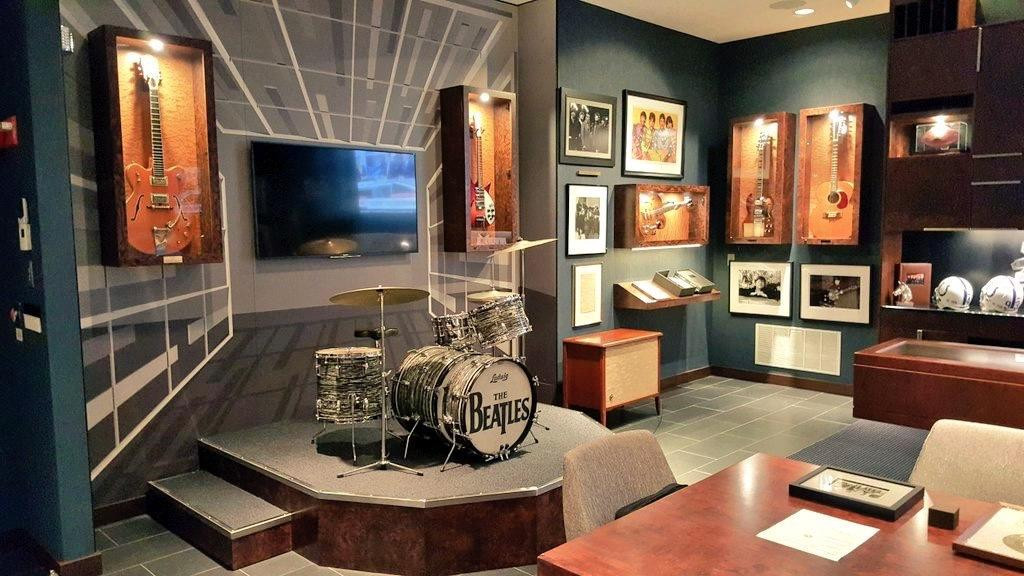 beatles.jpg
beatles.jpg
Irsay’s Beatles collection includes:
- 1964 Rickenbacker 325 Model 1996 “Beatle Backer”: Purchased for $910,000.
- 1964 Gretsch G6120DC (Nashville): Purchased for $530,000.
- 1964 Gibson SG Standard guitar: Purchased for $567,500.
- 1966 VOX Kensington: Purchased for $418,000.
- Ringo’s #1 Ludwig Drum set and Beatles Ed Sullivan Drum head: Purchased for $2.5 million.
- George’s Harptone 12 String from Concert for Bangladesh.
Gibson Acoustics and Electrics: Diversifying the Sound
While Rickenbacker guitars are strongly associated with Lennon, he also utilized Gibson guitars extensively, both acoustic and electric, contributing to the diverse sonic landscape of The Beatles and his solo work.
1962 and 1964 Gibson J-160E Acoustic Guitars: “Love Me Do” and Beyond
The story of Lennon and Harrison’s Gibson J-160E Acoustic Guitars begins at Rushworths Music House in Liverpool in September 1962. Intending to order guitars like Tony Sheridan’s “electric jumbo,” they ended up with J-160Es, mistaking them for the desired model. Despite their initial disappointment, these guitars became signature instruments. As Tony Sheridan recounted, the guitars were “technically a real crappy guitar. It sounds horrible.” However, they became iconic.
 04.jpg
04.jpg
 06.jpg
06.jpg
 11000531_1149475838400067_2064192949726669588_n.jpg
11000531_1149475838400067_2064192949726669588_n.jpg
 LostOne
LostOne
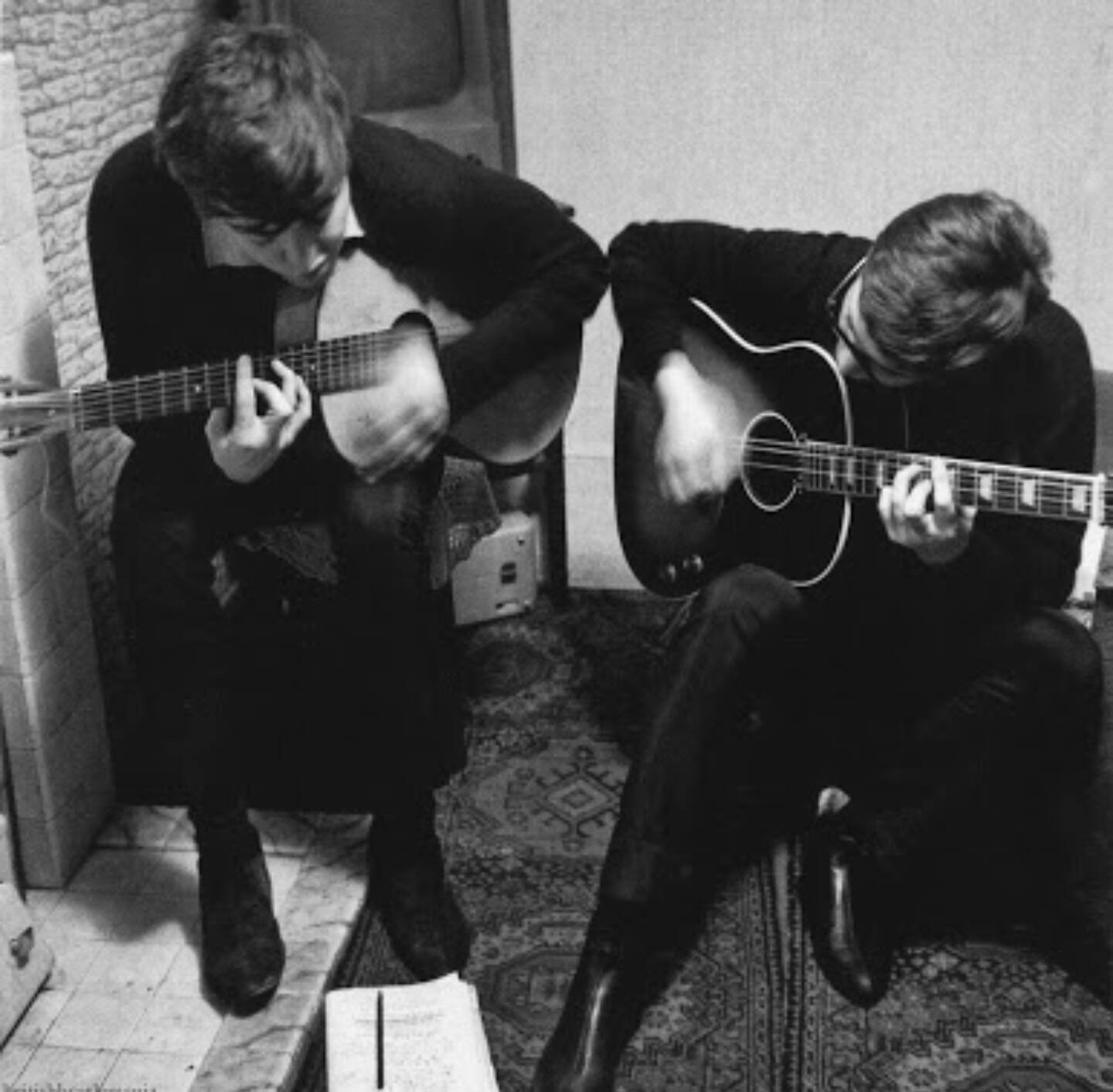 ISawHer
ISawHer
Purchased on September 10, 1962, from Rushworth’s Music House, Liverpool, for £161 each, the identical guitars were soon mixed up. George’s J-160E was stolen at the 1963 Finsbury Park Xmas show, though initially John thought his was stolen. Lennon later ordered two more J-160Es, giving one away and keeping one, which he sanded down to its natural state and used extensively throughout his career.
 2020/09/119236092_327793861637256_7176821798924720261_n.jpg
2020/09/119236092_327793861637256_7176821798924720261_n.jpg
 155
155
In 1964, Lennon acquired a replacement Gibson J-160E with double white rings around the soundhole. This was the guitar he brought on The Beatles’ historic 1964 visit to America, marking the start of the British Invasion.
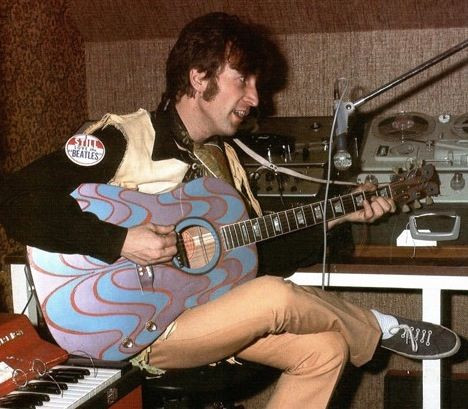 Fool
Fool
This 1964 Gibson J-160E was painted psychedelic by The Fool in 1967, then sanded back to its natural finish in 1968. Blue paint remnants are still visible inside the sound hole at the Rock and Roll Hall of Fame.
 44707066_2213089112294876_7298669132772278272_n.jpg
44707066_2213089112294876_7298669132772278272_n.jpg
 40021492_10216882193344681_6908614548140326912_o.jpg
40021492_10216882193344681_6908614548140326912_o.jpg
Lennon carved characters of himself and Yoko into the top, commemorating their “Bed-Ins” in Amsterdam and Montreal in 1969, coloring them with black marker.
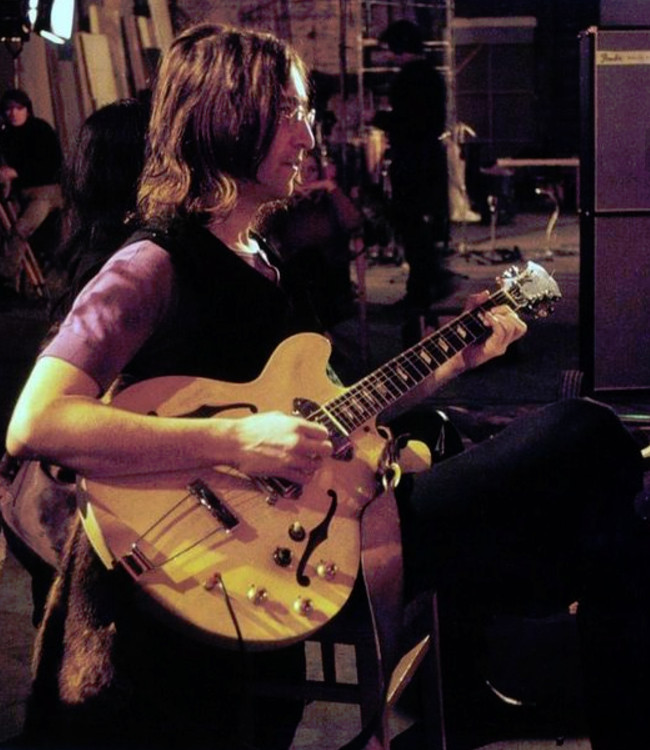 John
John
 John4
John4
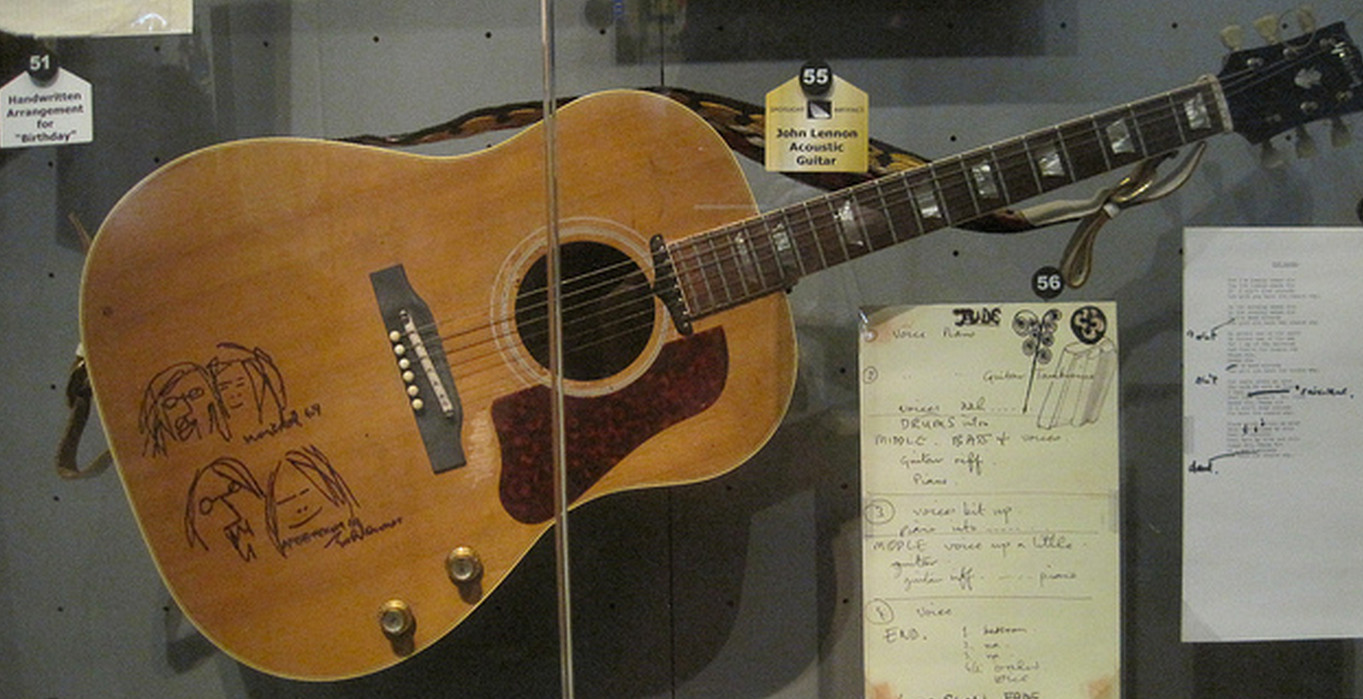 Johns guitar
Johns guitar
Gibson J-160E Gift to Bob Dylan
Around Christmas 1968, Lennon gifted Bob Dylan a 1966 J-160E sunburst, bought specifically for him. After Lennon’s death, Dylan, reportedly feeling “bad vibes,” gave it to guitar tech Cesar Diaz, displayed at the Hard Rock Cafe in NYC since 1994.
 sdut-this-guitar-given-by-john-lenn-20160823.jpg
sdut-this-guitar-given-by-john-lenn-20160823.jpg
Cesar Diaz’s signed statement confirmed Dylan gave him the guitar after Lennon’s 1980 assassination, no longer wanting to play it.
The Lost and Found 1962 Gibson J-160E SN 73157
The “long-lost” 1962 Gibson guitar, SN 73157, initially thought to be Lennon’s, was actually George Harrison’s. It went missing in 1963 and resurfaced 50 years later, potentially breaking auction records. Julien’s Auctions estimated it could fetch $600,000-$800,000, potentially surpassing Bob Dylan’s guitar record of $965,000. Darren Julien called it “one of biggest finds in music history.”
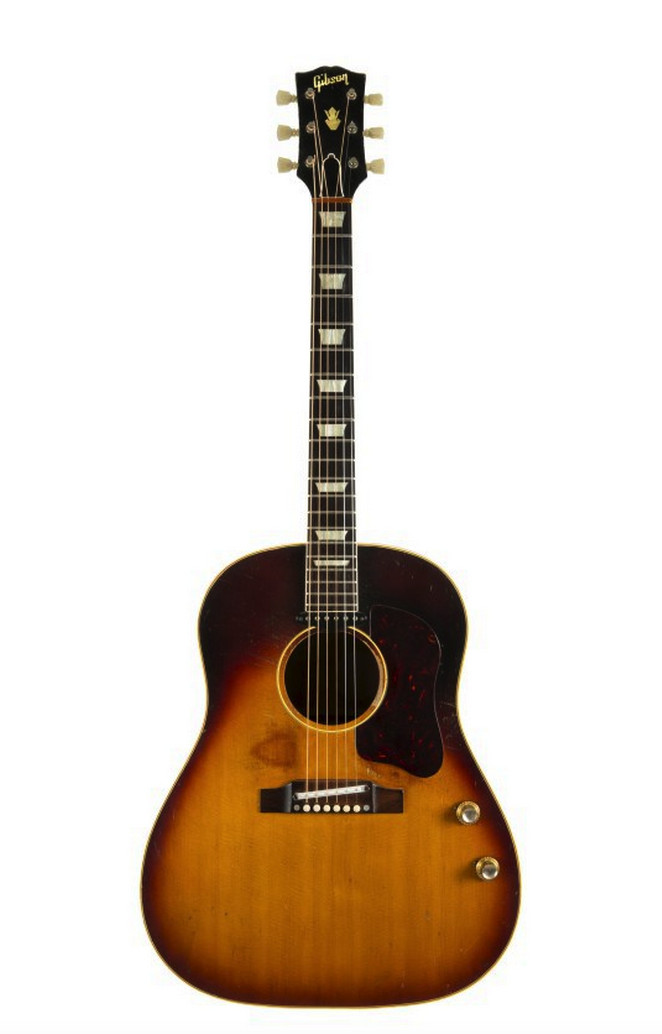 Snip20150604_5
Snip20150604_5
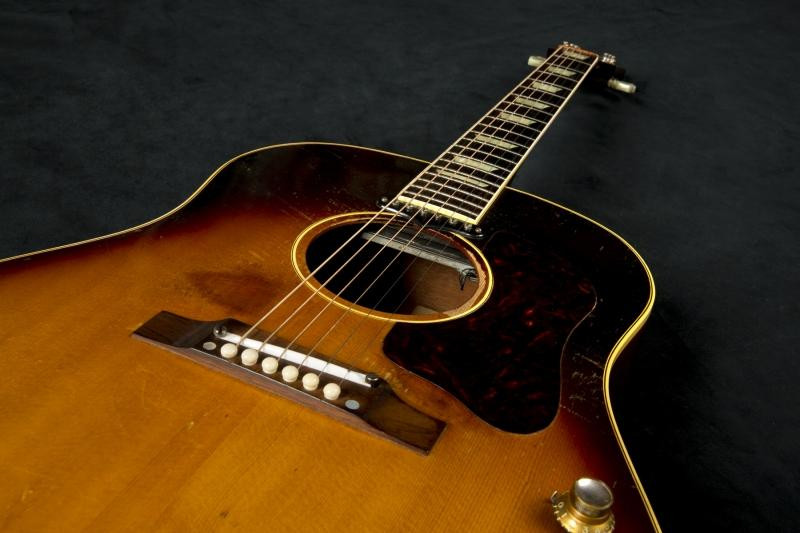 208909_0.jpg
208909_0.jpg
 73157
73157
Lennon’s first J-160E was switched with Harrison’s after purchase. The guitar in Harrison’s estate had Lennon’s serial number, meaning Harrison’s jumbo was stolen, not Lennon’s. Lennon bought two more J-160Es after the loss. Julien noted Lennon often wished he still had the “lost” guitar, used on “Love Me Do” and in early Beatles’ shows and writing sessions.
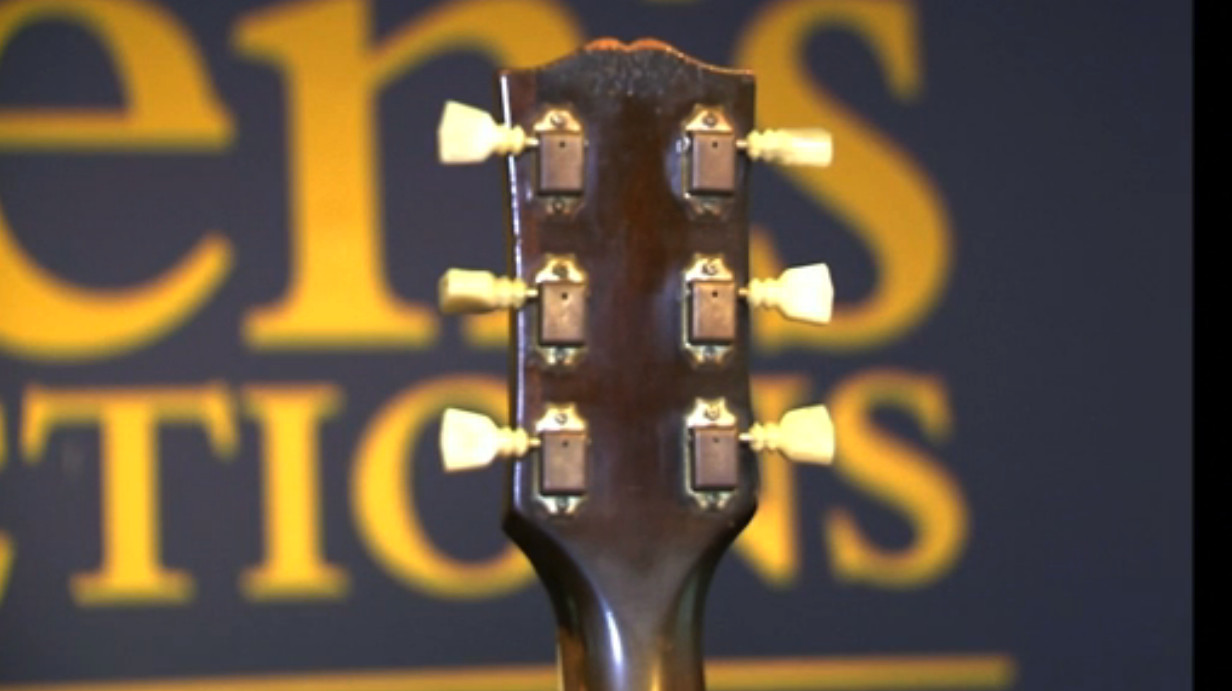 Snip20150604_1
Snip20150604_1
The guitar went missing in 1963 at the Beatles’ Finsbury Park Christmas Show and resurfaced after 50 years when John McCaw bought it at a US second-hand shop. Andy Babiuk authenticated it by matching serial numbers, wood grain, and scratches to photos and videos.
 imageslike.com-large-music-dig13762-007
imageslike.com-large-music-dig13762-007
Mal Evans, Beatles roadie, recalled losing Lennon’s “Jumbo” at the Finsbury Empire. Lennon mentioned it missing in a January 1966 Beatles Monthly interview. Evans admitted losing it; Lennon thought it “pinched.” Babiuk believes it was likely taken by another band playing at the Astoria Theatre, possibly traded, not necessarily stolen. No police report or insurance claim was ever filed; it was simply deemed lost.
 gettyimages-3167282.jpg
gettyimages-3167282.jpg
In a 2015 auction, John Lennon’s stolen acoustic guitar sold for $2.4 million, becoming one of the priciest rock and roll items. Half of the proceeds went to Lennon’s Spirit Foundation charity.
1964 Ramirez A-1 Classical Guitar “Segovia Model”
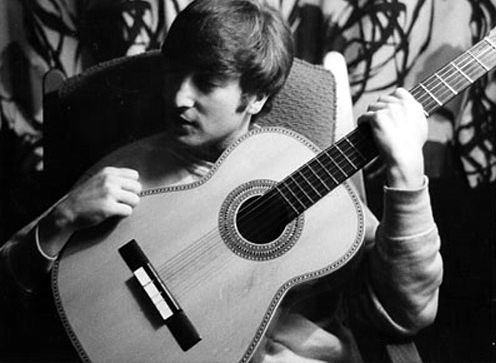 jlramirez
jlramirez
John F Crowley describes Lennon owning a 1964 Ramirez A-1 Classical Guitar “Segovia Model”, purchased around the same time George Harrison bought his Ramirez Studio model.
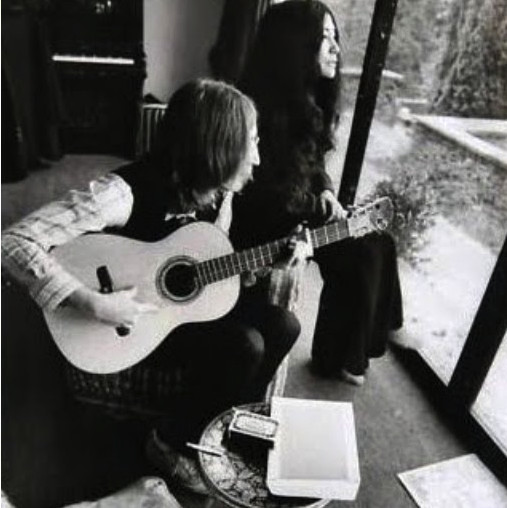 snip20161107_2
snip20161107_2
Lennon was photographed with Harrison’s Ramirez Studio Model at home in the 60s, and Harrison’s collection includes it in an iPad app.
 50775280_10215965584486541_6611407587260760064_n.jpg
50775280_10215965584486541_6611407587260760064_n.jpg
1964 Framus 5/024/12 Hootenanny 12 String: “Help!” and Movie Magic
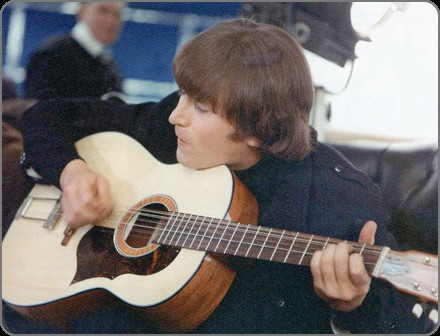 Hootananny
Hootananny
 lennon framus hootenanny
lennon framus hootenanny
The 1964 Framus 5/024/12 Hootenanny 12 String was prominently used by Lennon in The Beatles’ movie “Help!”. This acoustic Framus “Hootenanny” featured in recordings, sessions, and performances in 1965, including “Help!,” “You’ve Got To Hide Your Love Away,” and “It’s Only Love.”
A Framus Hootenanny, played by both Lennon and George Harrison, considered lost for 60 years, was auctioned in New York, potentially becoming the priciest Beatles guitar sold.
 john1.jpg
john1.jpg
 john2.jpg
john2.jpg
 john4.jpg
john4.jpg
Fender’s Foray: Strats and Teles
Despite initial reluctance from Fender to endorse The Beatles, Lennon eventually embraced Fender guitars, adding Stratocasters and Telecasters to his diverse collection.
The “Mysterious Black Stratocaster” – 1965 Donmar Warehouse
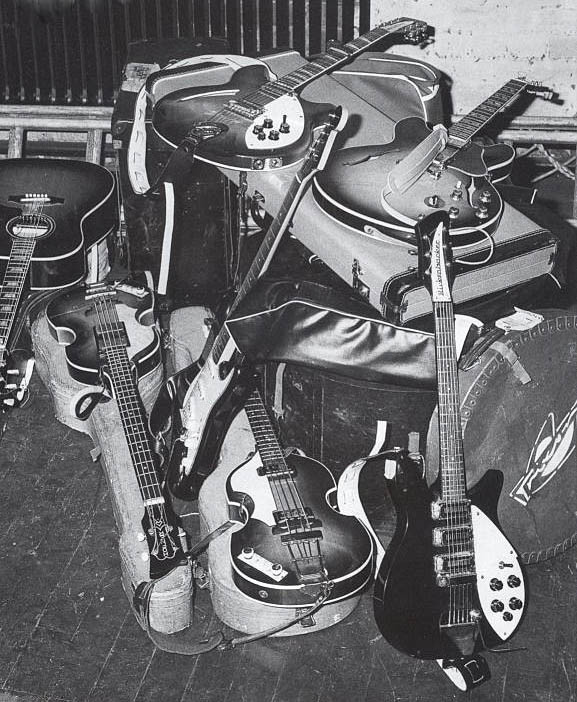 fabgear65
fabgear65
 snip20170308_3.png
snip20170308_3.png
The “Mysterious Black Stratocaster” emerged in photos from a 1965 rehearsal at Donmar Warehouse. These photos, taken by Robert Whitaker, puzzled many due to the black Fender Stratocaster with a matching black headstock. Fender claims they didn’t produce black Strats with black headstocks in 1964 or 1965.
 snip20170503_3.png
snip20170503_3.png
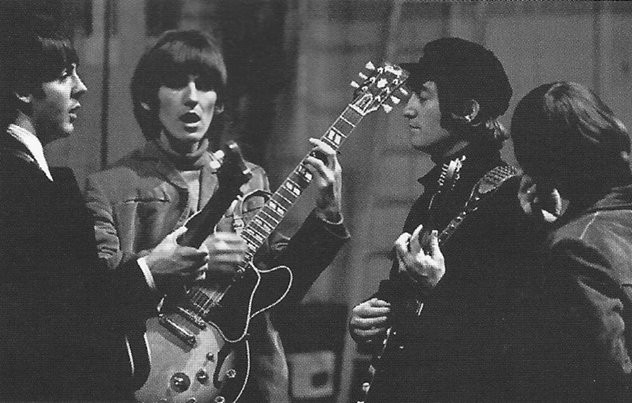 Black Stratocaster
Black Stratocaster
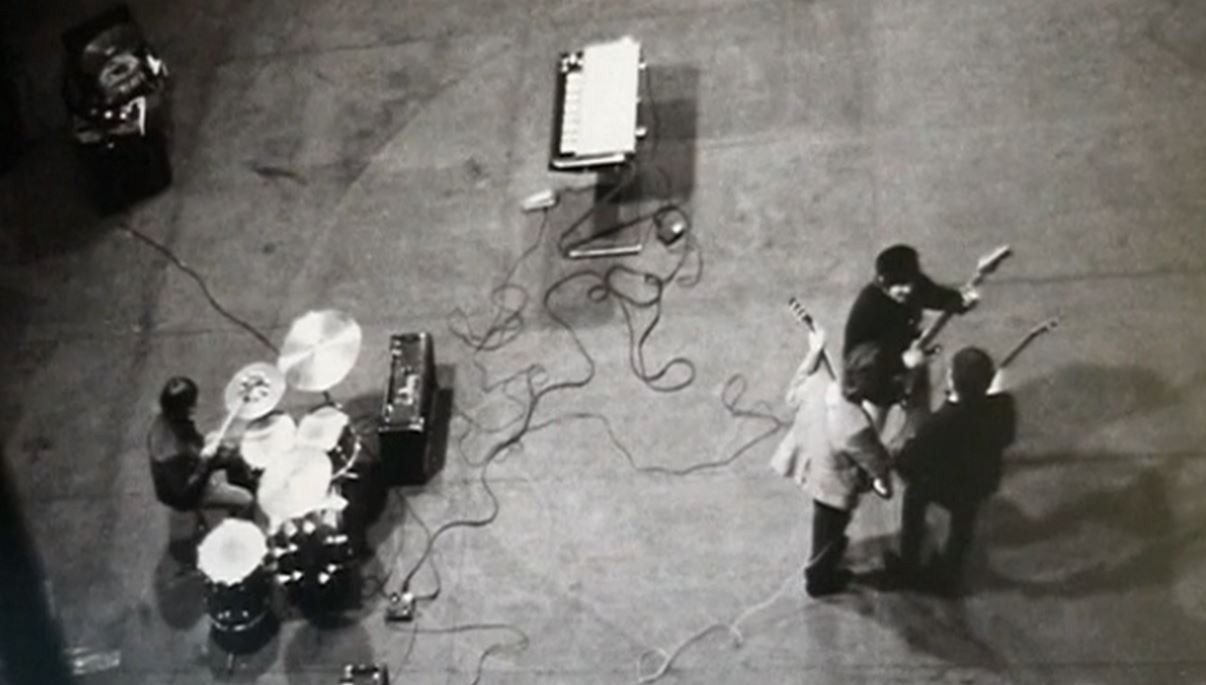 Black Stratocaster2
Black Stratocaster2
Tony Bacon and others speculate Ivor Arbiter, who had the Fender franchise in the UK, might have repainted it, as Arbiter was known for repainting Fenders in England with non-standard colors. Arbiter knew Lennon liked black guitars and might have painted it to encourage Fender sales if Lennon played it. The guitar’s current location remains unknown.
 15380287_1395739327105501_2416401292959664444_n.jpg
15380287_1395739327105501_2416401292959664444_n.jpg
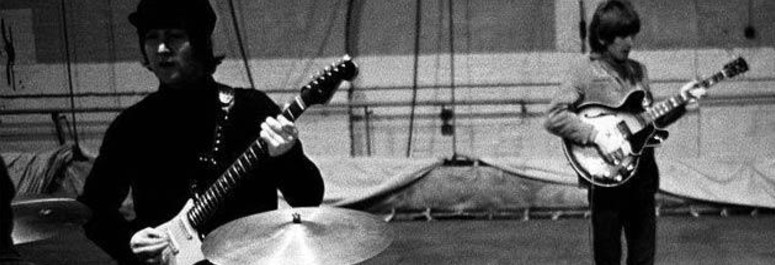 Blackstrat.png
Blackstrat.png
 Snip20160207_4
Snip20160207_4
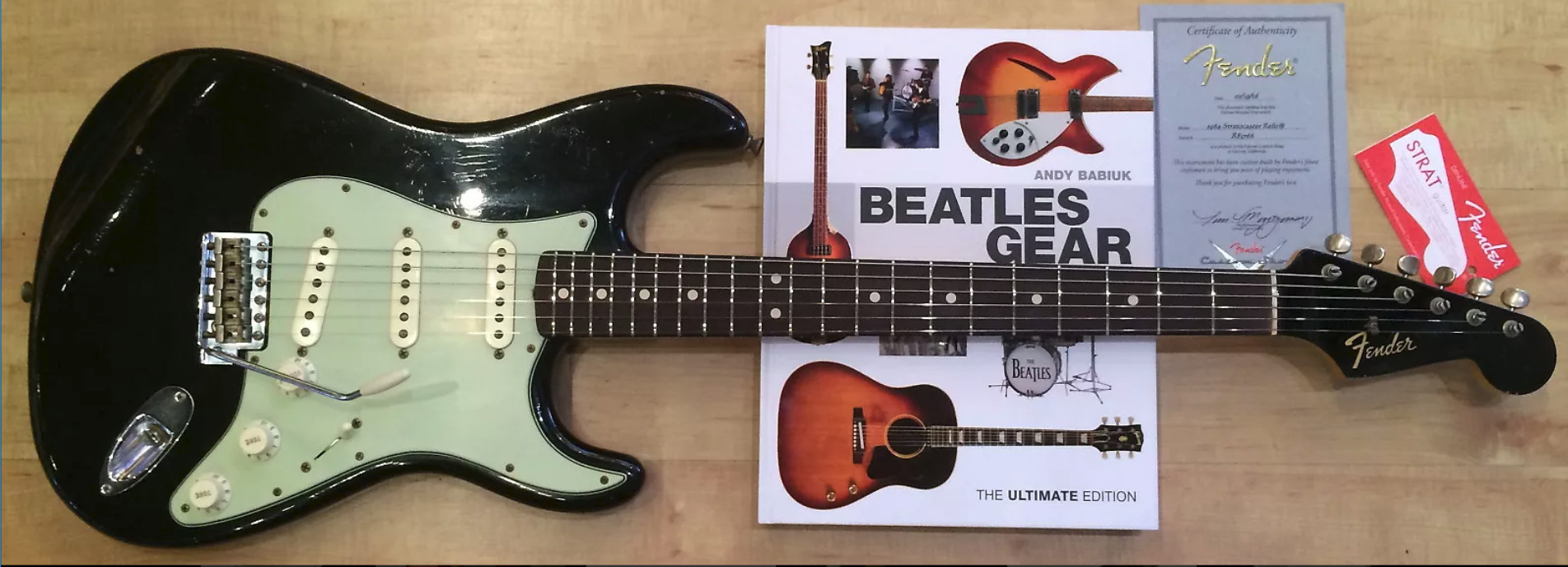 reissue.png
reissue.png
Fender initially missed endorsing The Beatles. Don Randall, Leo Fender’s partner, realized in 1964 that “Beatle guys” were hurting Fender sales. They offered The Beatles an endorsement deal, unprecedented for Fender, sending a rep to New York in 1964, 1965, and 1966, but failed to meet them due to miscommunication and mishaps.
The Donmar Warehouse rehearsal hall, the location where John Lennon was photographed playing the mysterious black Fender Stratocaster in 1965.
In 1968, Randall himself met McCartney and Lennon in London. While McCartney was enthusiastic, Lennon was initially dismissive, asking “Yeah, what do you want from me?” When Randall offered instruments, Lennon agreed, “Yeah, give us the instruments and we’ll play them. Are we done?” Fender provided instruments without payment, though The Beatles continued using their Epiphone Casinos as well.
1965 Epiphone E230TD Casino: A Beatles Staple
 CasinoLennon
CasinoLennon
The 1965 Epiphone E230TD Casino became a crucial guitar for Lennon. Purchased in London in 1966, it was used on The Beatles’ final tour in 1966 and classic albums like “Revolver” and “Sgt. Pepper’s Lonely Hearts Club Band.” Lennon used a stripped-down “Revolution” version for The White Album, “Abbey Road,” the “Let It Be” rooftop concert, and his early solo work with the Plastic Ono Band.
 32308846_223138168419021_5175215959937384448_n.jpg
32308846_223138168419021_5175215959937384448_n.jpg
 122506036_4479620315444753_5289116188602482708_n.jpg
122506036_4479620315444753_5289116188602482708_n.jpg
George and John often had matching guitars, influenced by The Shadows. They both had J-160Es, Rickenbacker 12-strings, and Strats. In 1966, they acquired Epiphone Casinos, likely influenced by Paul McCartney who already owned one. Casinos were lightweight, sounded good, and became their guitars for the ’66 tour and recordings.
 john.png
john.png
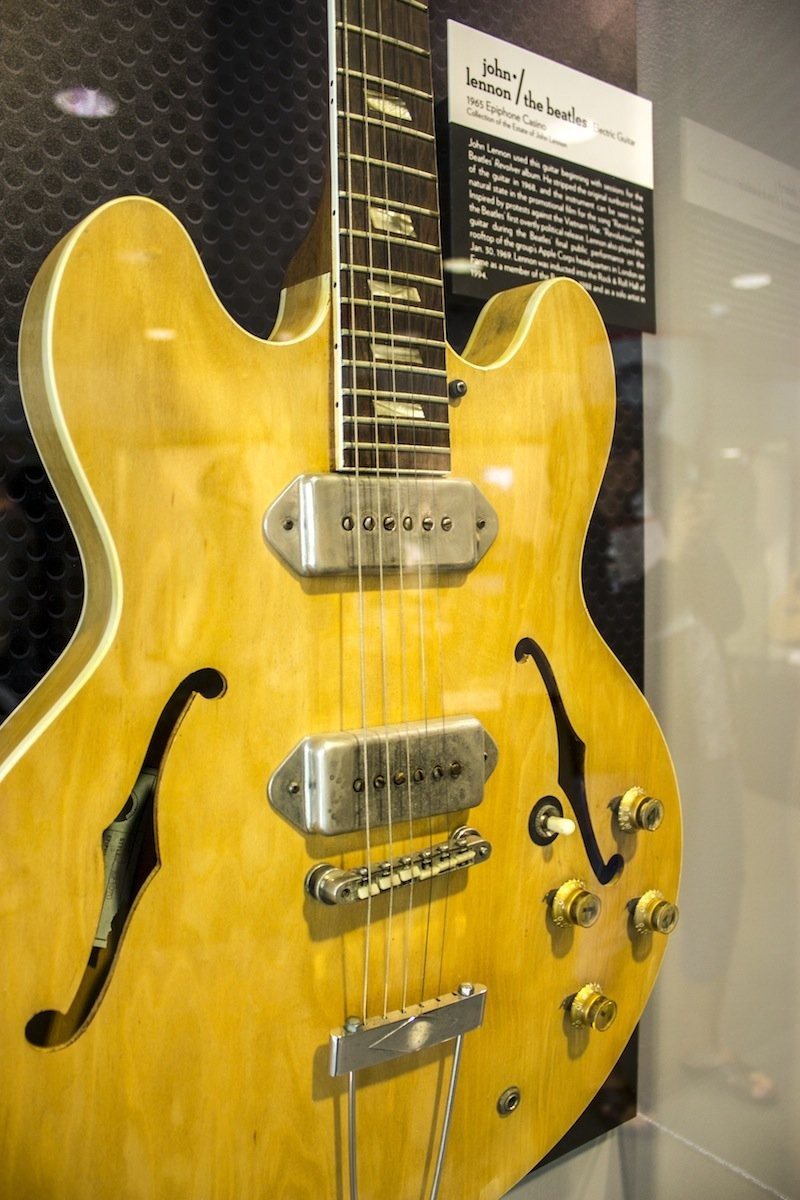 f0f95e4c676609ab.jpg
f0f95e4c676609ab.jpg
1964 Gretsch G6120DC (Nashville): “Paperback Writer” Session
 John_Lennon
John_Lennon
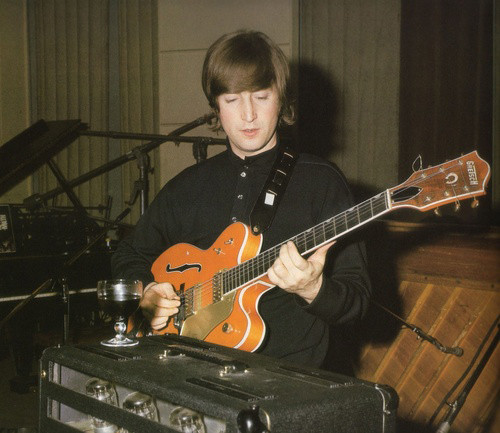 JohnLennongretsch
JohnLennongretsch
The 1964 Gretsch G6120DC (Nashville) SN#53940 was used by Lennon during the “Paperback Writer” recording session. “The Beatles Monthly Book” documented the April 13th session, noting Lennon’s new Gretsch Chet Atkins 6120. This early 1960s orange-finished double-cutaway hollow body had gold-plated hardware and a Bigsby vibrato.
Little is known about its origin, but it was used on “Paperback Writer” and then stored at Lennon’s home. In 1967, Lennon gifted it to his cousin David Birch, who also received a Hamburg-vintage Fender Vibroluxe amp from Lennon in 1963. Birch loaned the guitar to The Beatles Story in Liverpool in 2010 and still owns it.
1966 Guild Starfire XII: A Gift Unused in Studio
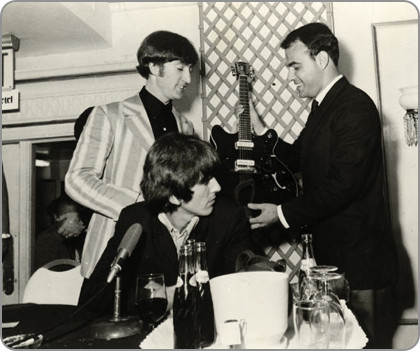 lennon-guild
lennon-guild
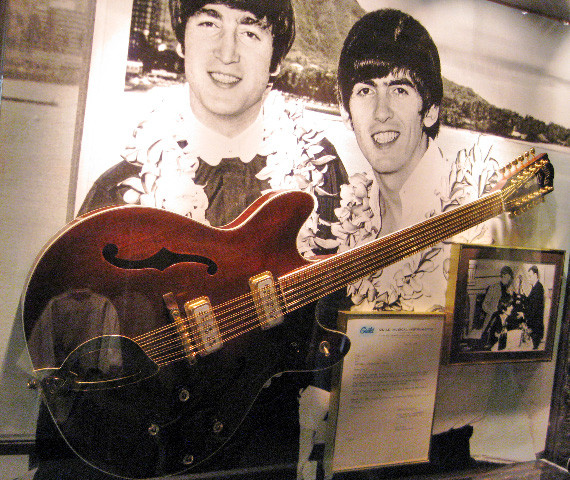 Lennon12string
Lennon12string
The 1966 Guild Starfire XII was gifted to Lennon by Guild in August 1966 but never saw studio use. It was likely used in his home studio and later ended up with Yoko Ono’s first husband, Tony Cox. It is currently displayed at the Hard Rock Cafe in Honolulu, Hawaii.
 The_Beatles
The_Beatles
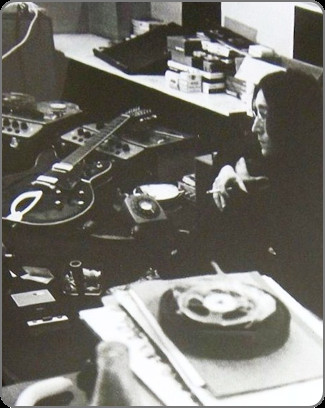 shapeimage_2
shapeimage_2
Mark Dronge, son of Guild’s founder, presented it to Lennon at a conference, mistakenly thinking John played electric 12-string, causing George Harrison to be “pissed” as he thought it was for him.
1965 Martin D-28: A Gift to Ronnie Hawkins (and a Switch?)
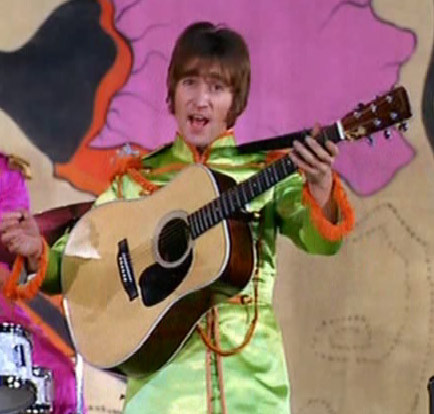 jlmartin02
jlmartin02
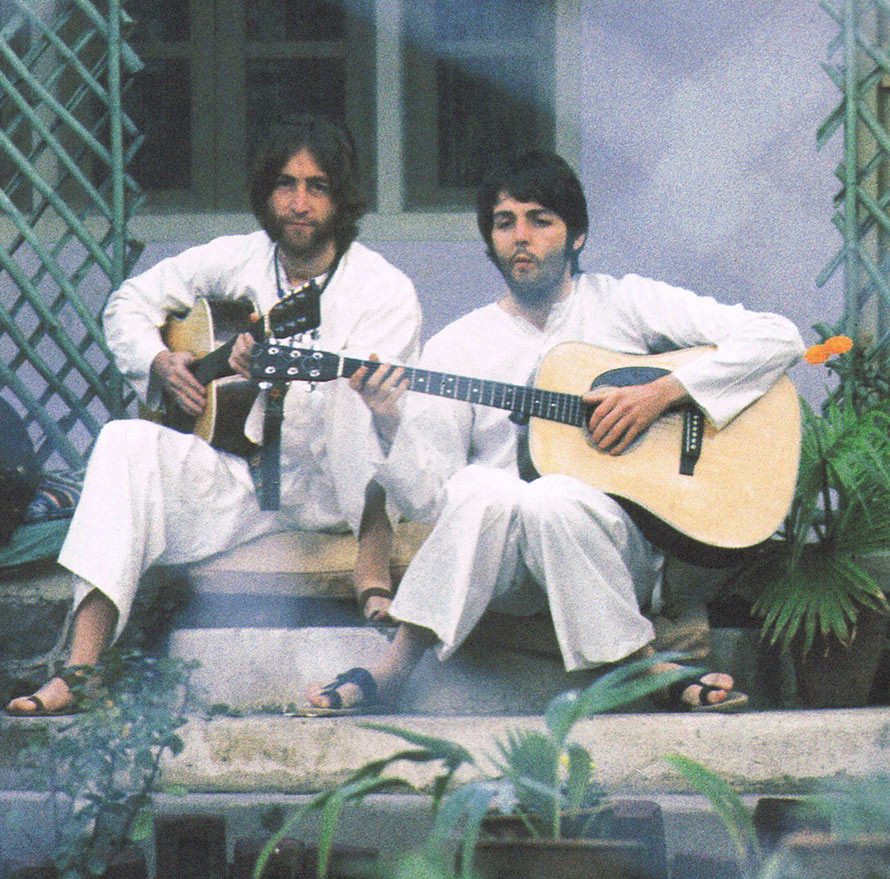 Reshekesh
Reshekesh
In December 1969, Lennon gifted a 1965 Martin D-28 to rockabilly musician Ronnie Hawkins. However, Hawkins’ guitar is now identified as a 1972 D-28, suggesting a possible switch. Hawkins mentioned Lennon’s gift was “exchanged” by someone he trusted.
John Lennon’s 1962 C.F. Martin D-28: Late Era Acoustic
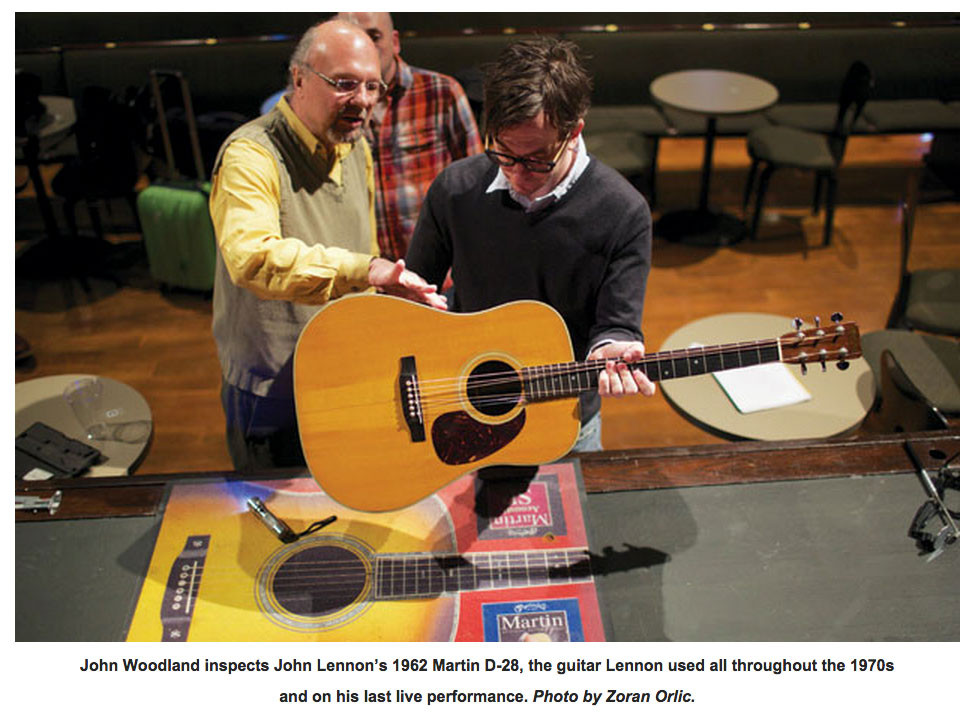 1962Martin
1962Martin
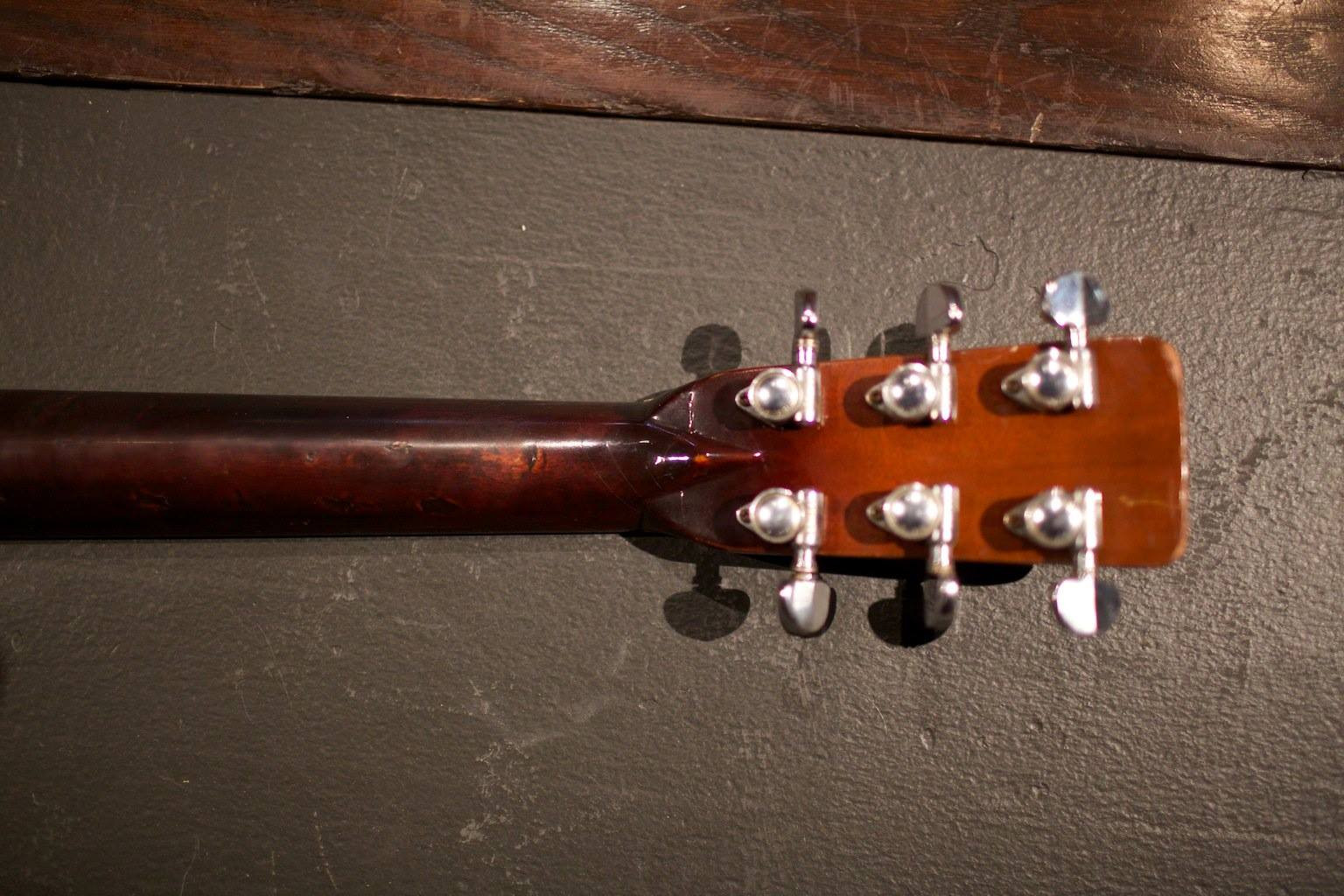 Johns Martin3
Johns Martin3
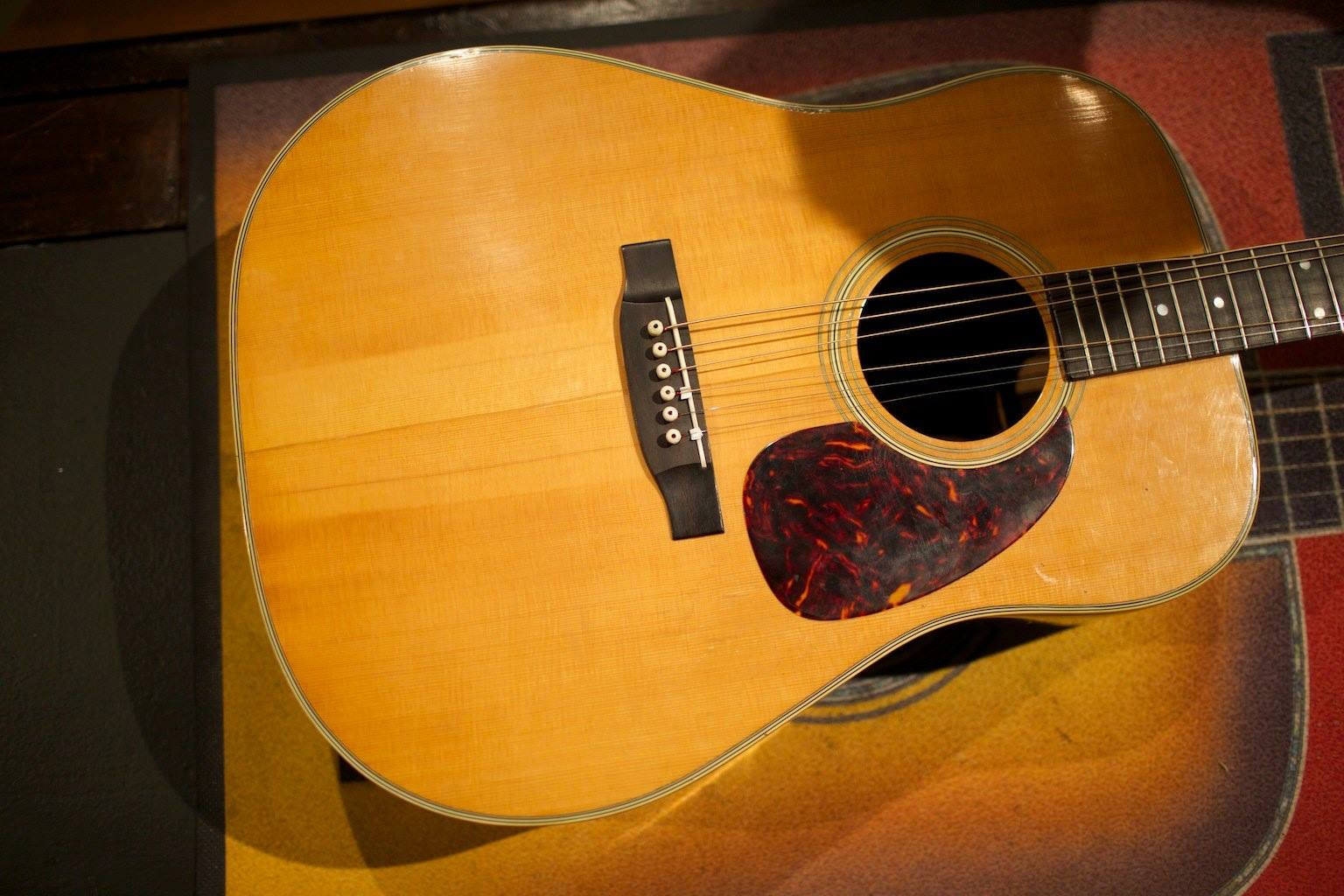 Johns martin1
Johns martin1
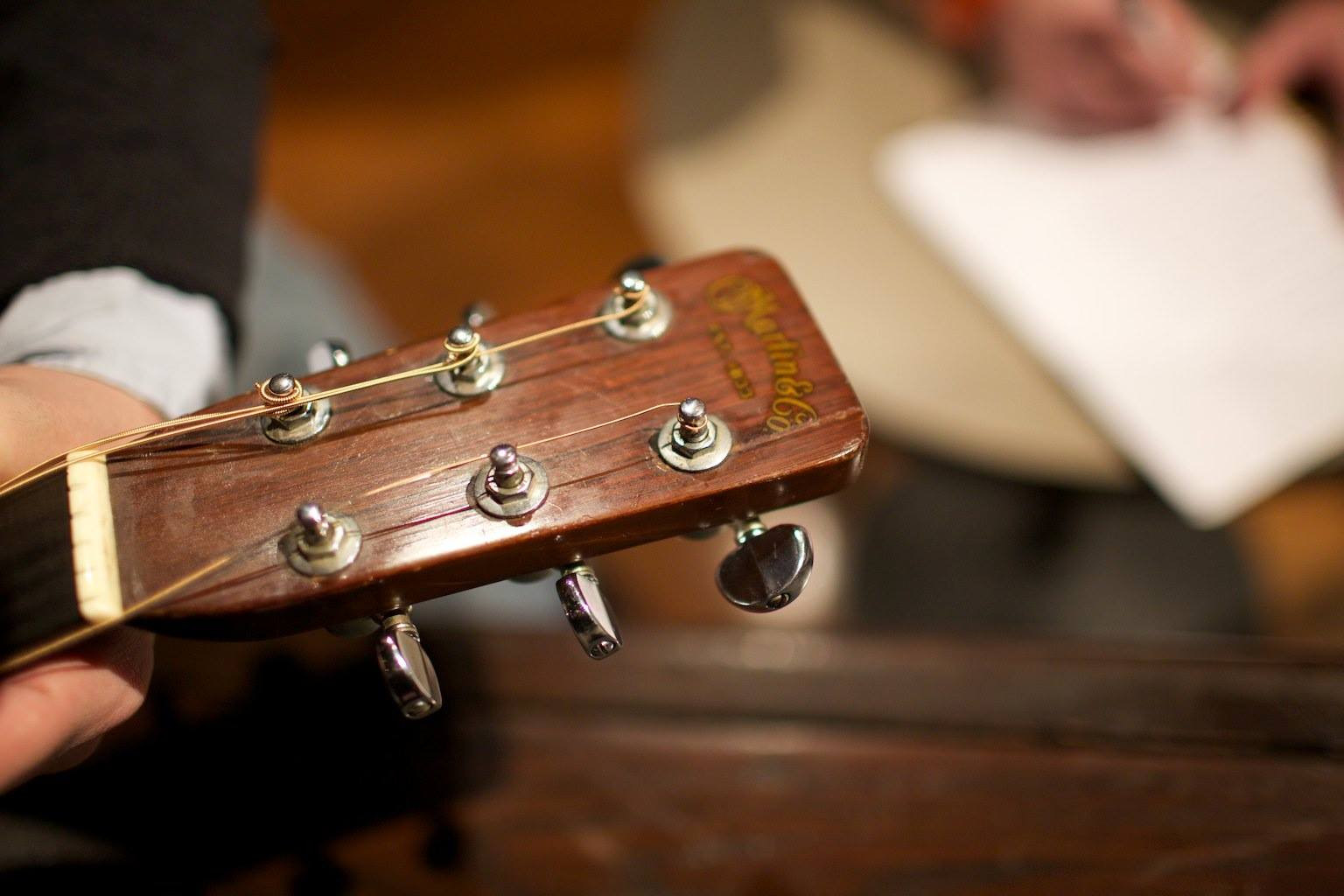 Johns Martin 4
Johns Martin 4
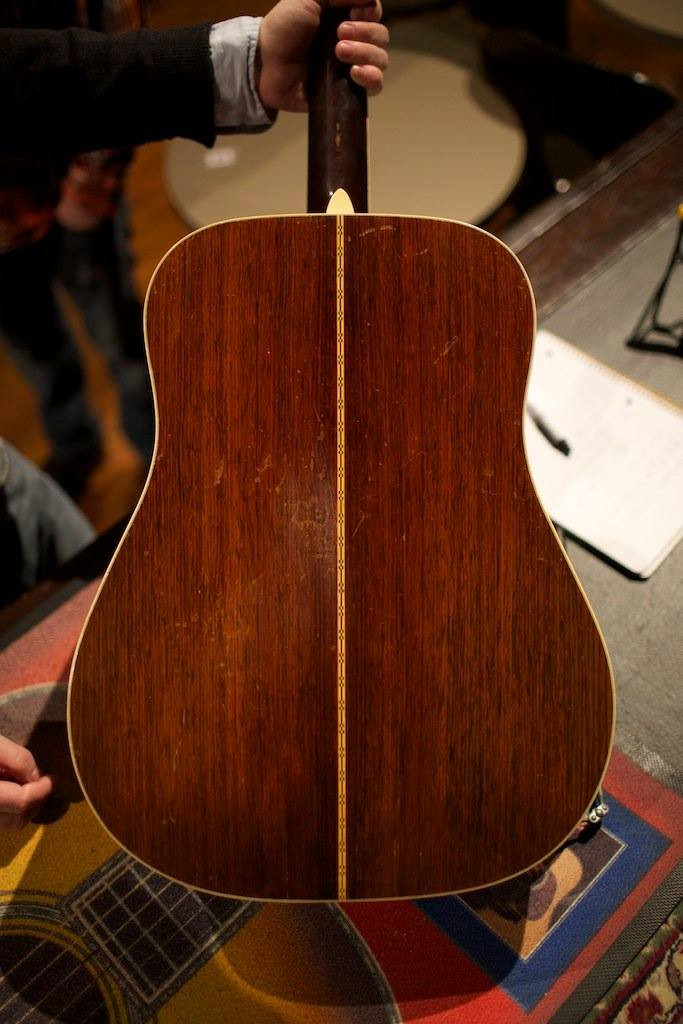 Johns Martin2
Johns Martin2
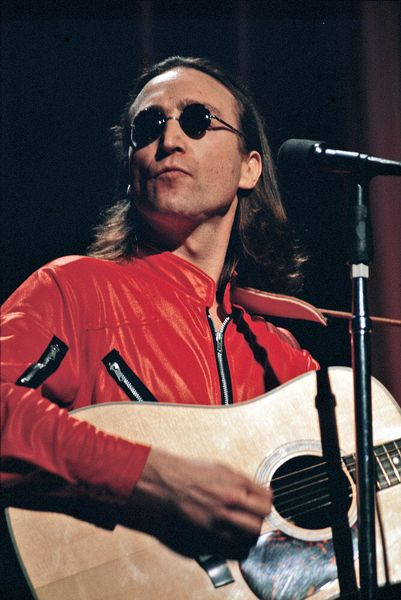 04-john_lennon_guitar_1975.jpg
04-john_lennon_guitar_1975.jpg
Fender Stratocasters: Sonic Blue and Beyond
Lennon’s foray into Fender Stratocasters brought a new dimension to his sound, particularly with the iconic Sonic Blue models.
1961 Sonic Blue Fender Stratocaster: Pepper Sessions
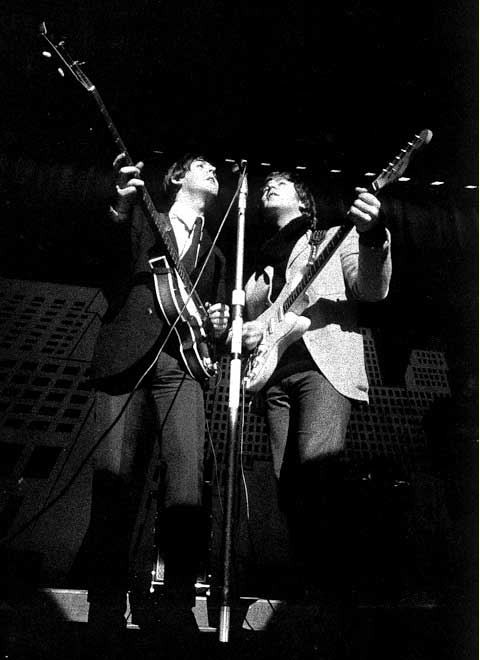 Strat
Strat
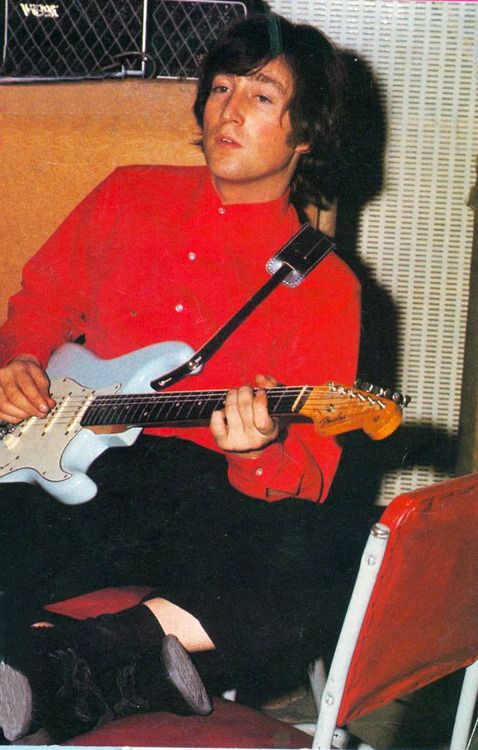 48c27ae22e23689a58057979ffc8dbe4.jpg
48c27ae22e23689a58057979ffc8dbe4.jpg
The 1961 Sonic Blue Fender Stratocaster was used by Lennon from 1965-68, notably during the “Pepper Sessions.” In 1965, Mal Evans purchased two Sonic Blue Stratocasters for John and George, both used. George’s “Rocky” Strat is dated late 1961, while John’s is listed as 1962, though its serial number is unknown.
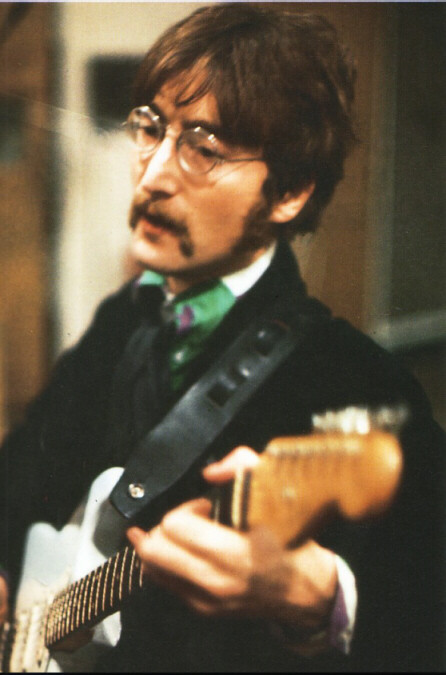 johnstrat67
johnstrat67
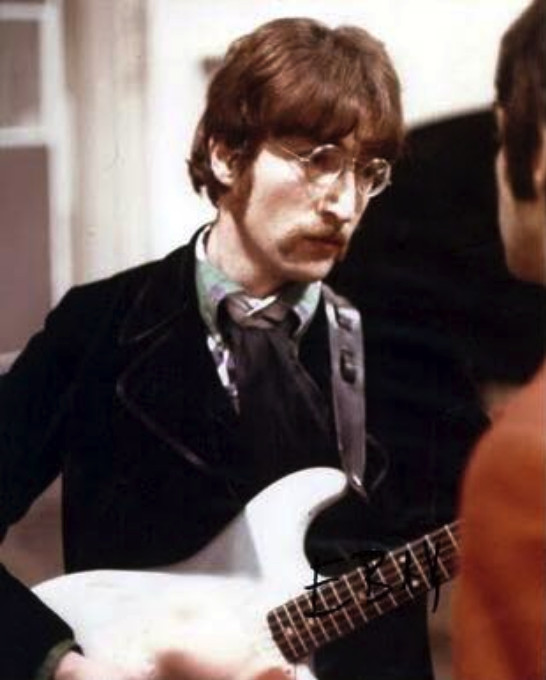 snip20181014_1.png
snip20181014_1.png
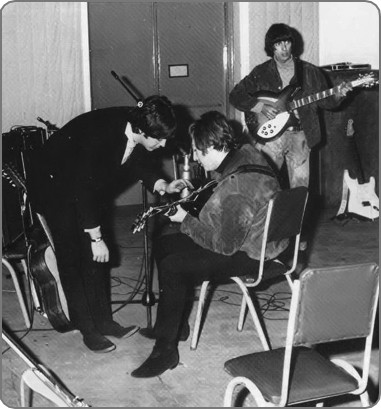 2Strats
2Strats
This is a rare photo of John and George’s Sonic Blue Strats together.
 29356967_1655281667925367_5012862502476709888_o.jpg
29356967_1655281667925367_5012862502476709888_o.jpg
 18557149_1354979337955603_5652447315860220801_n.jpg
18557149_1354979337955603_5652447315860220801_n.jpg
 18740159_1579686825377416_6112828729968678111_n.jpg
18740159_1579686825377416_6112828729968678111_n.jpg
Fender Custom Shop produced a Beatle Spec 1961 Relic Stratocaster in Sonic Blue, replicating Lennon and Harrison’s guitars.
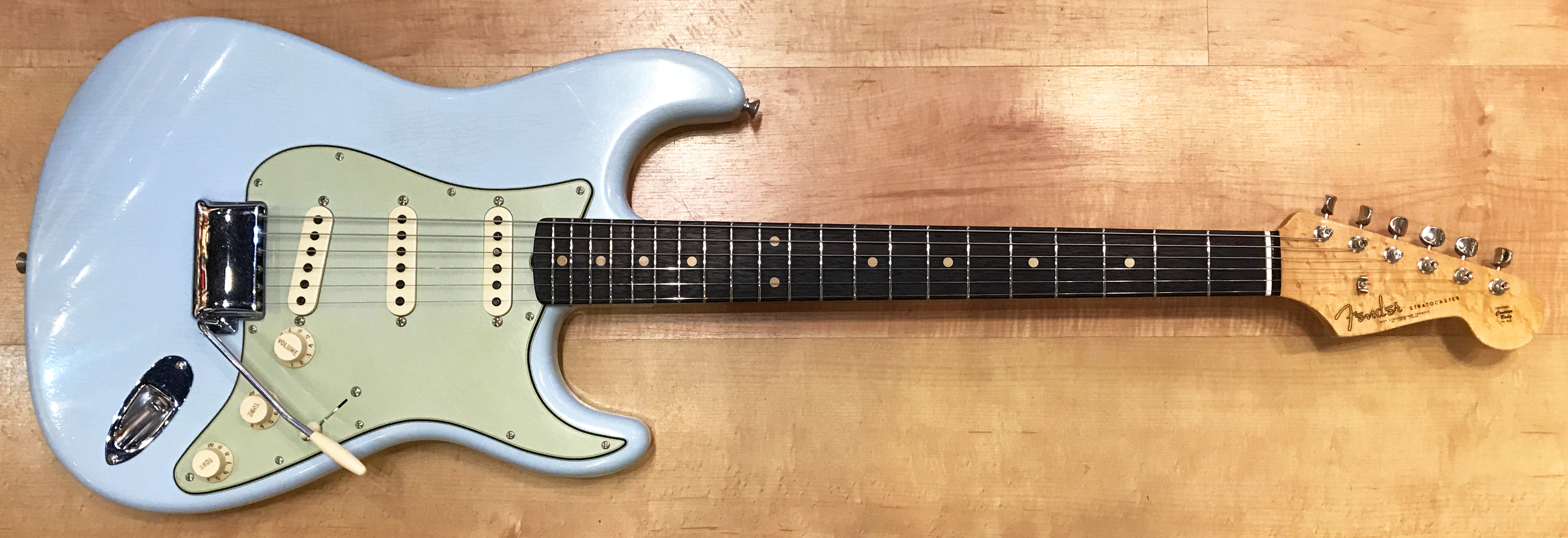 fender_custom_shop_beatle_spec_1961_relic_stratocaster_electric_guitar_sonic_blue_john_lennon_george_harrison_48543.jpg
fender_custom_shop_beatle_spec_1961_relic_stratocaster_electric_guitar_sonic_blue_john_lennon_george_harrison_48543.jpg
1966 Vox V251 Guitar-Organ Hybrid: An Experiment
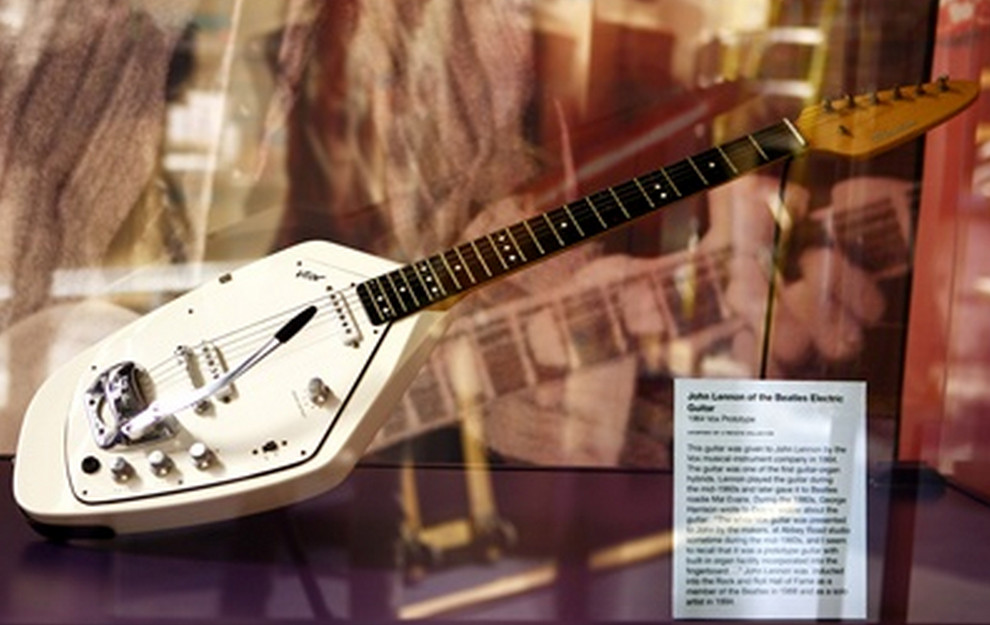 John
John
 john-lennon-j-160e-gibson-acoustic-guitar-auction-17.jpg
john-lennon-j-160e-gibson-acoustic-guitar-auction-17.jpg
The 1966 Vox V251 Guitar-Organ Hybrid was a prototype, an experimental Phantom VI guitar with internal organ electronics. Given to Lennon for endorsement, which didn’t materialize, it sold for $305,000 at a Sotheby’s auction in 2014.
Ovation 1651-7 Legend Acoustic Guitar: Recording Sessions
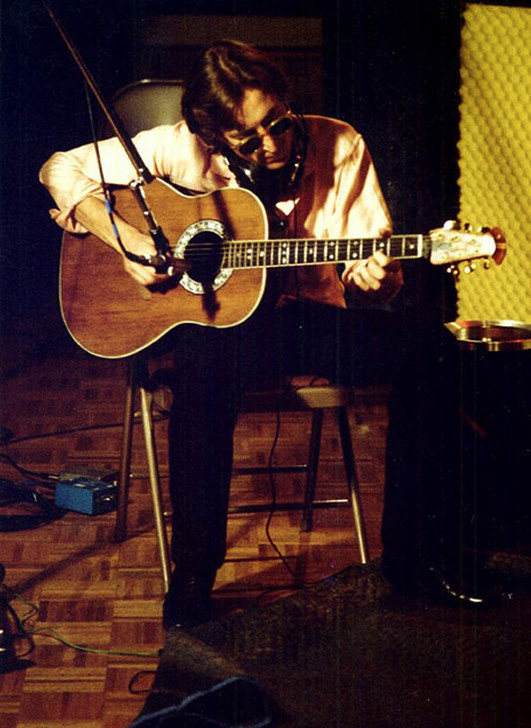 snip20161106_5
snip20161106_5
 john-lennon-600×450.jpg
john-lennon-600×450.jpg
The Ovation 1651-7 Legend Acoustic Guitar was played by Lennon in several recording sessions.
National Reso-Phonic TriCone Steel Resonator: Freedom Rally Stage
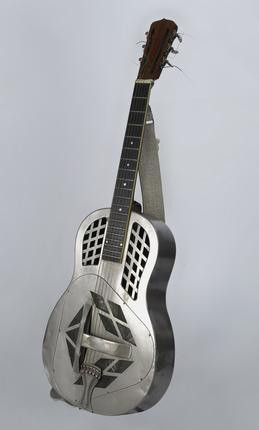 3526920093_5daa5ef42b
3526920093_5daa5ef42b
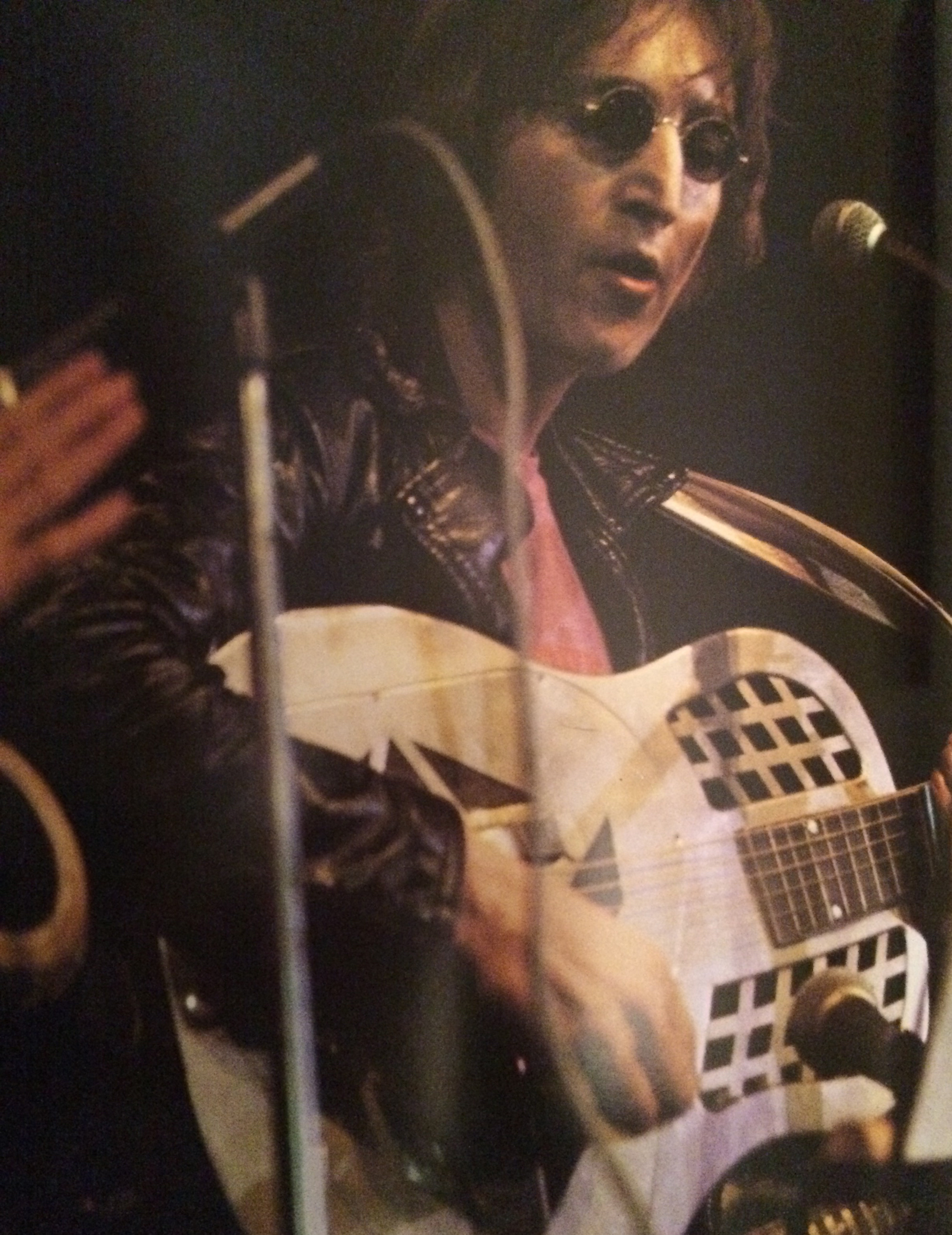 IMG_0989a
IMG_0989a
The National Reso-Phonic TriCone Steel Resonator was played by Lennon onstage at the John Sinclair Freedom Rally on December 10, 1972.
Hofner 5140 Hawaiian Standard lap steel guitar: “For You Blue” Slide
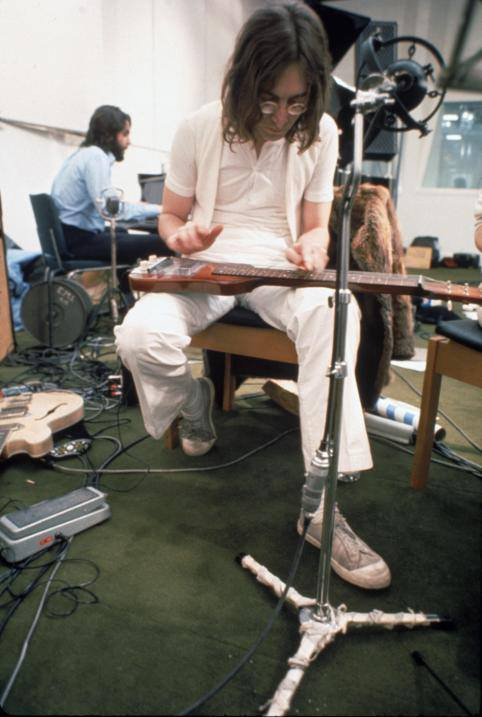 JohnSlide
JohnSlide
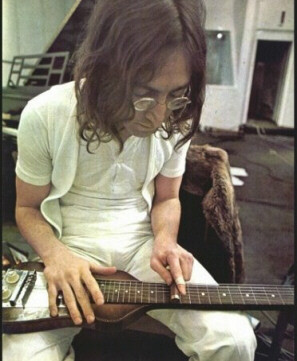 johnslide
johnslide
The Hofner 5140 Hawaiian Standard lap steel guitar was used by Lennon on George Harrison’s “For You Blue.” Unusually, Lennon used a shotgun shell as a slide. Harrison can be heard encouraging Lennon during his solo in the recording.
 34032585_10156379797119814_3177524467526008832_n.jpg
34032585_10156379797119814_3177524467526008832_n.jpg
1963 Black Fender Telecaster: Madison Square Garden Finale
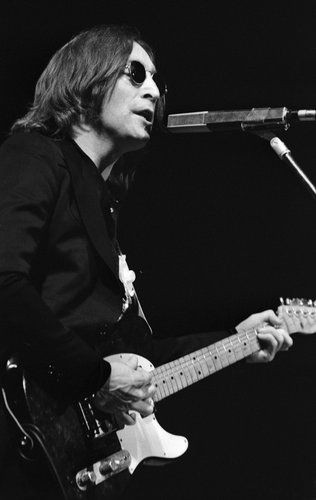 a87fe557b0003165f3e8360517dde07d.jpg
a87fe557b0003165f3e8360517dde07d.jpg
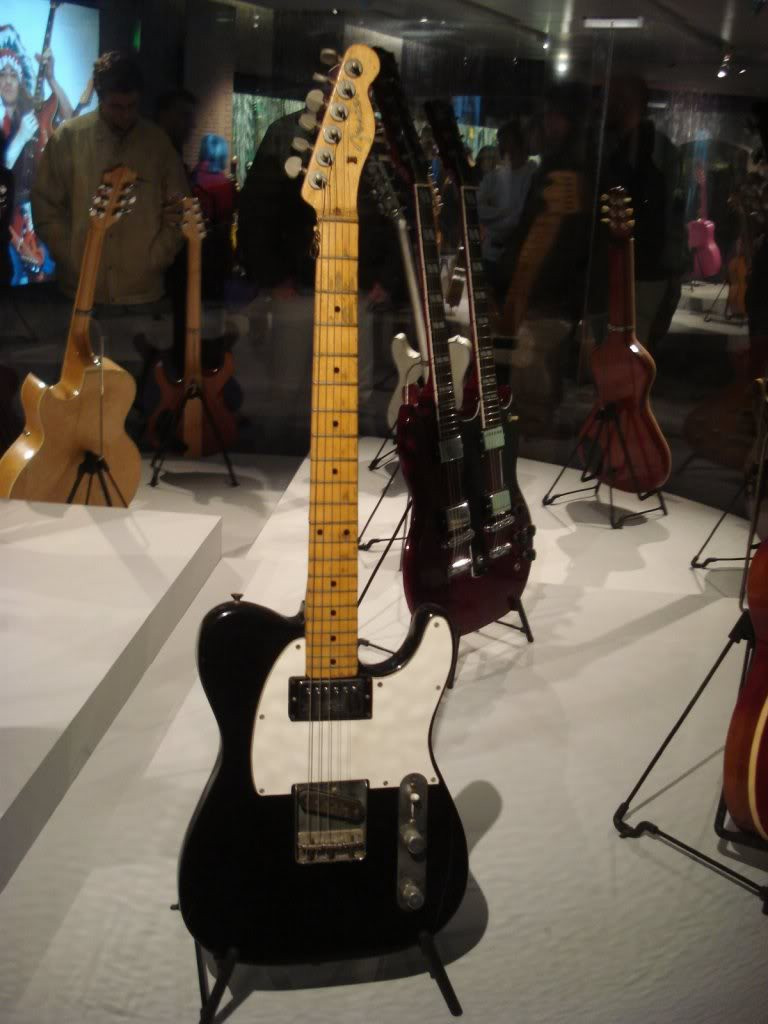 JohnLennonTelecaster
JohnLennonTelecaster
Lennon’s 1963 Black Fender Telecaster was last publicly played on November 28, 1974, when he joined Elton John onstage at Madison Square Garden for “Whatever Gets You Through the Night.”
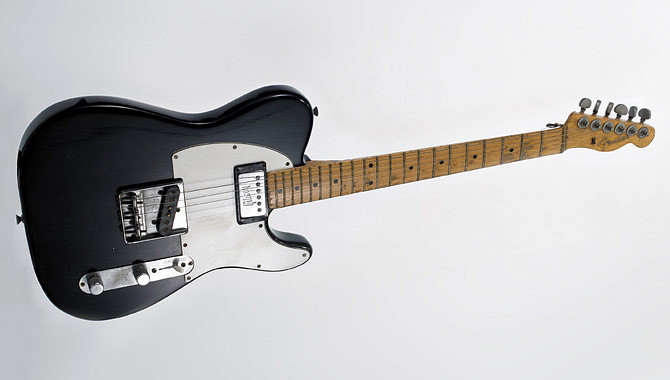 jlennon_4
jlennon_4
 1190
1190
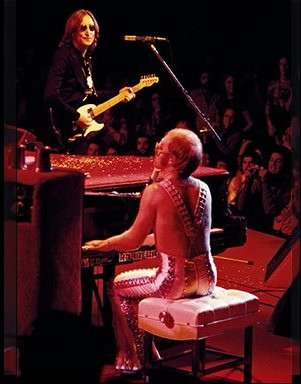 4592038819_64ca5a3799.jpg
4592038819_64ca5a3799.jpg
 Snip20160819_1.png
Snip20160819_1.png
Lennon also used a different black Fender Telecaster with a smaller neck pickup for the “Slippin and Slidin” promo video and in the “Stand by Me” video.
1956 Les Paul Junior: Stripped Down Rock
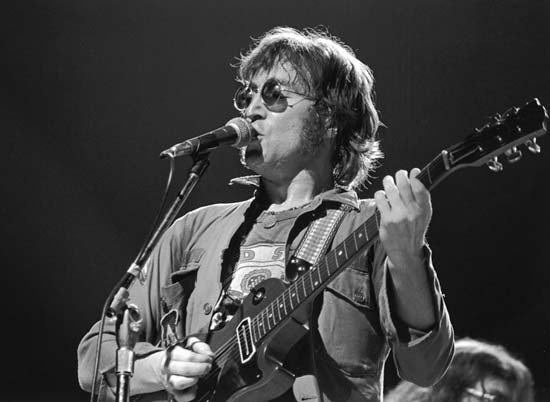 john-lennon-plays-come-together
john-lennon-plays-come-together
 38851108_162697651290746_1571063088000532480_n.jpg
38851108_162697651290746_1571063088000532480_n.jpg
The 1956 Les Paul Junior was purchased by Lennon in the early 70s. Ron DeMarino installed a Charlie Christian pickup in the neck position and later stripped the sunburst finish. Lennon played it on the 1972 Mike Douglas Show and at Madison Square Garden.
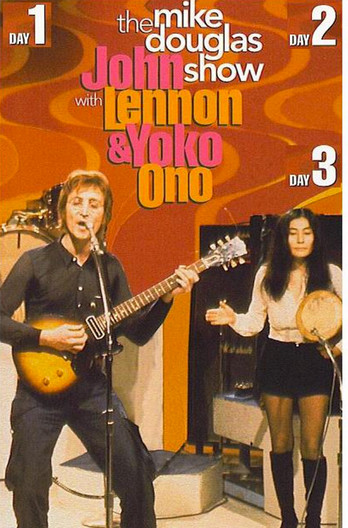 LespaulJR
LespaulJR
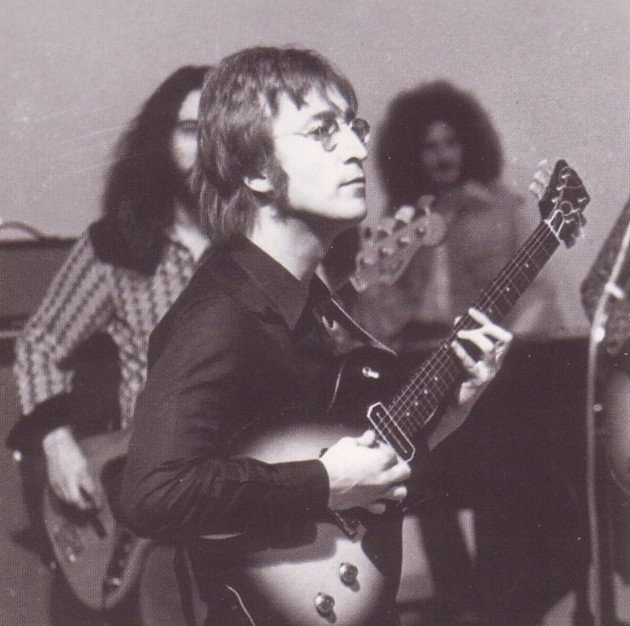 LesPaulJROriginal
LesPaulJROriginal
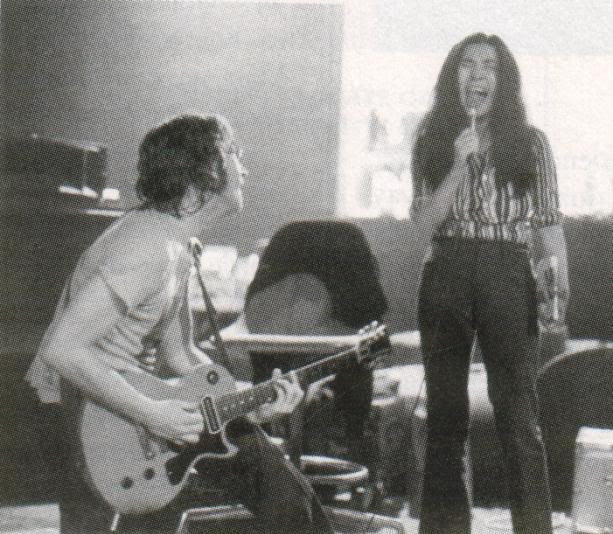 JohnLennonLesPaulJr
JohnLennonLesPaulJr
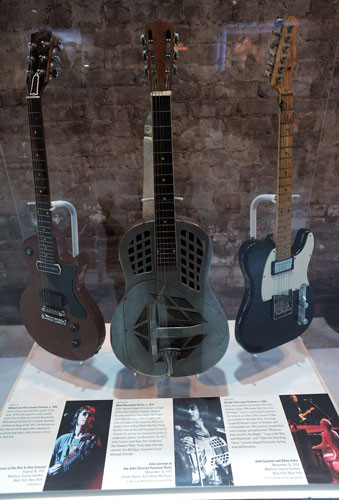 John-Lennon-exhibition-Jo-008
John-Lennon-exhibition-Jo-008
1960 Les Paul Standard: Record Plant Collaboration
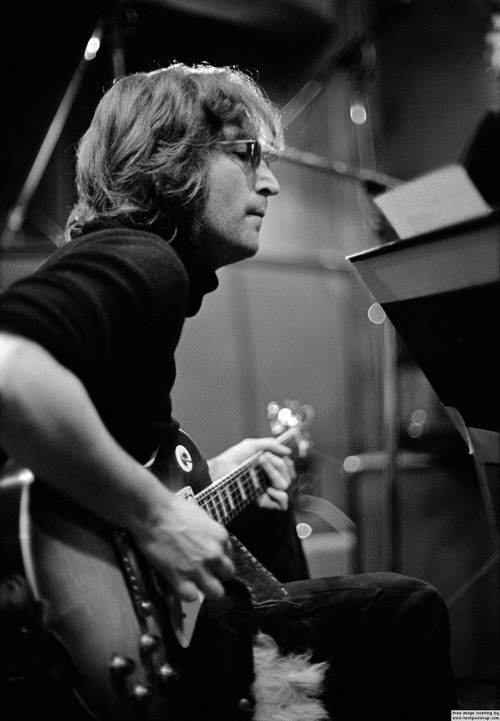 johnlennon.jpg
johnlennon.jpg
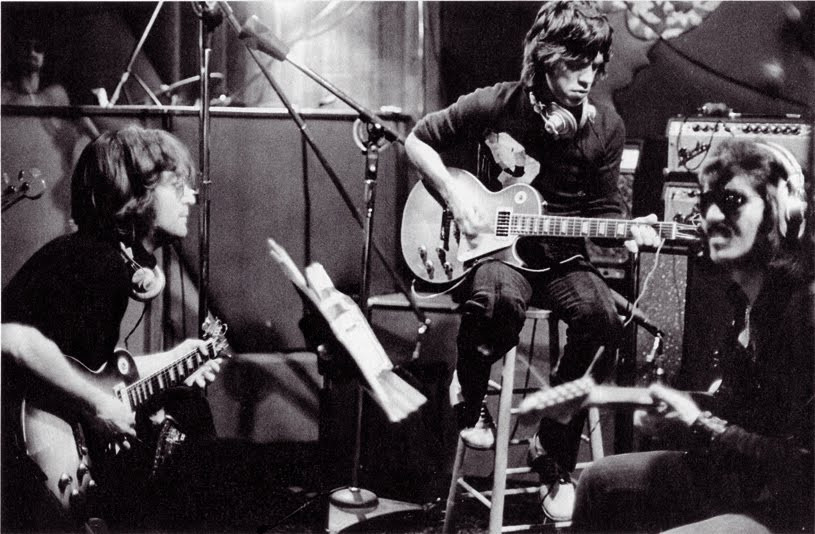 Too-many-cooks
Too-many-cooks
The 1960 Les Paul Standard was used by Lennon in November 1972 at the Record Plant in New York, during a collaboration with Mick Jagger and Wayne Gabriel on the Japanese “Winter song” “Too Many Cooks (Spoil the Soup).” Ron DeMarino’s receipt from August 30, 1972, documents Lennon’s Les Paul acquisition.
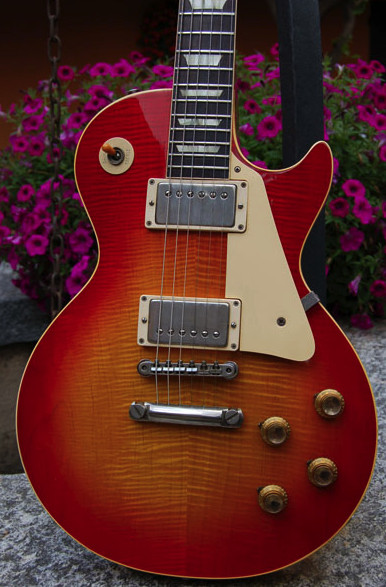 snip20161106_6.png
snip20161106_6.png
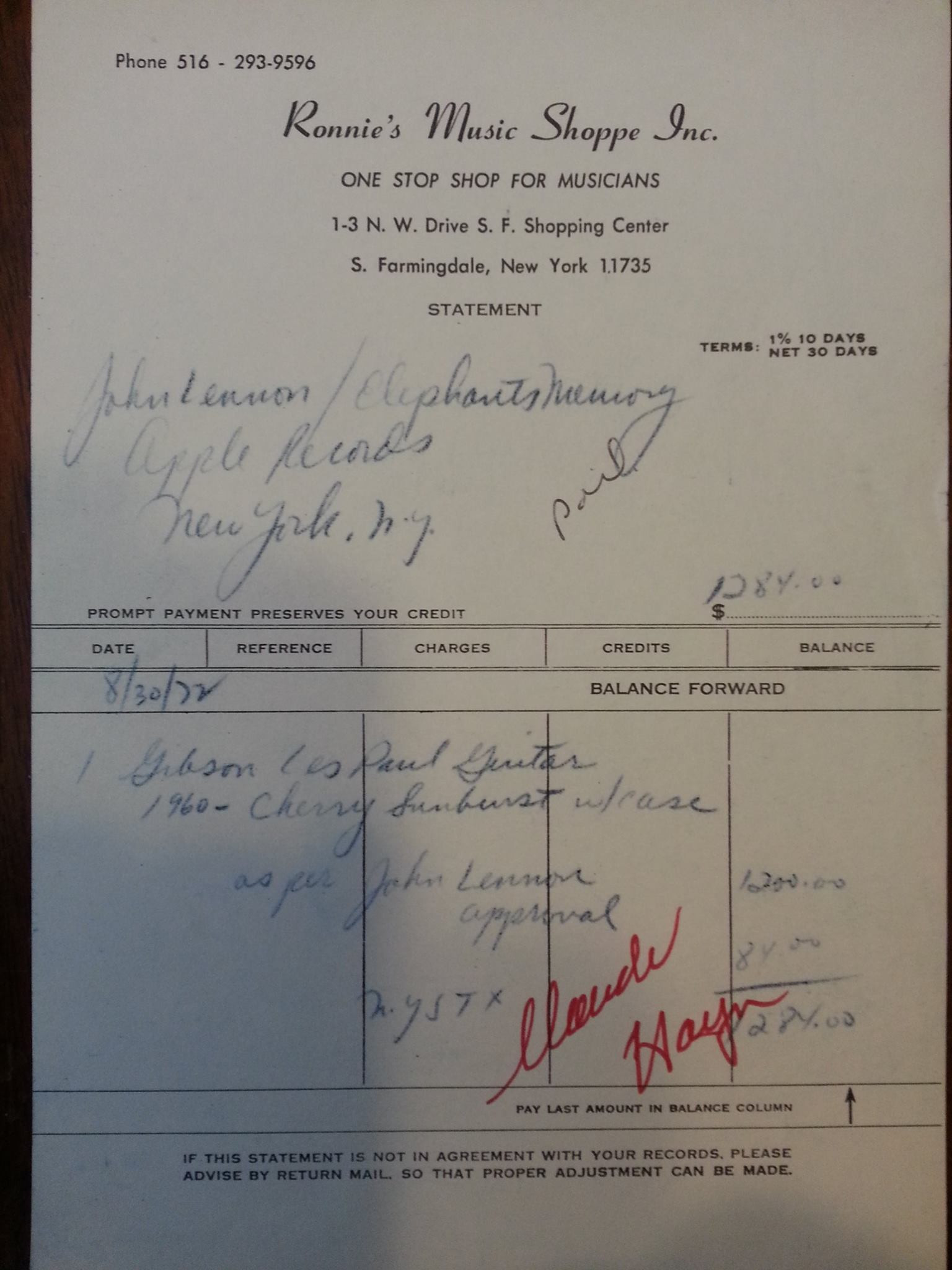 1960LesPaul
1960LesPaul
Sardonyx 800 DII Guitar: Double Fantasy Sound
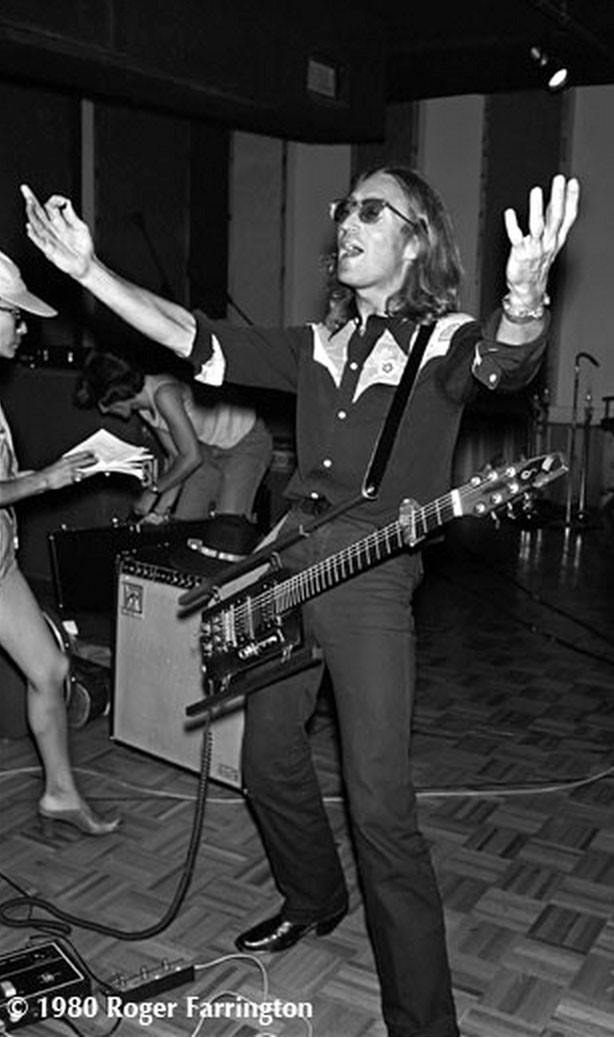 Sardonyx-guitar
Sardonyx-guitar
The Sardonyx 800 DII Guitar, a rare model built by Ken Schaffer, was played by Lennon on “Double Fantasy.” Only 15-20 were built.
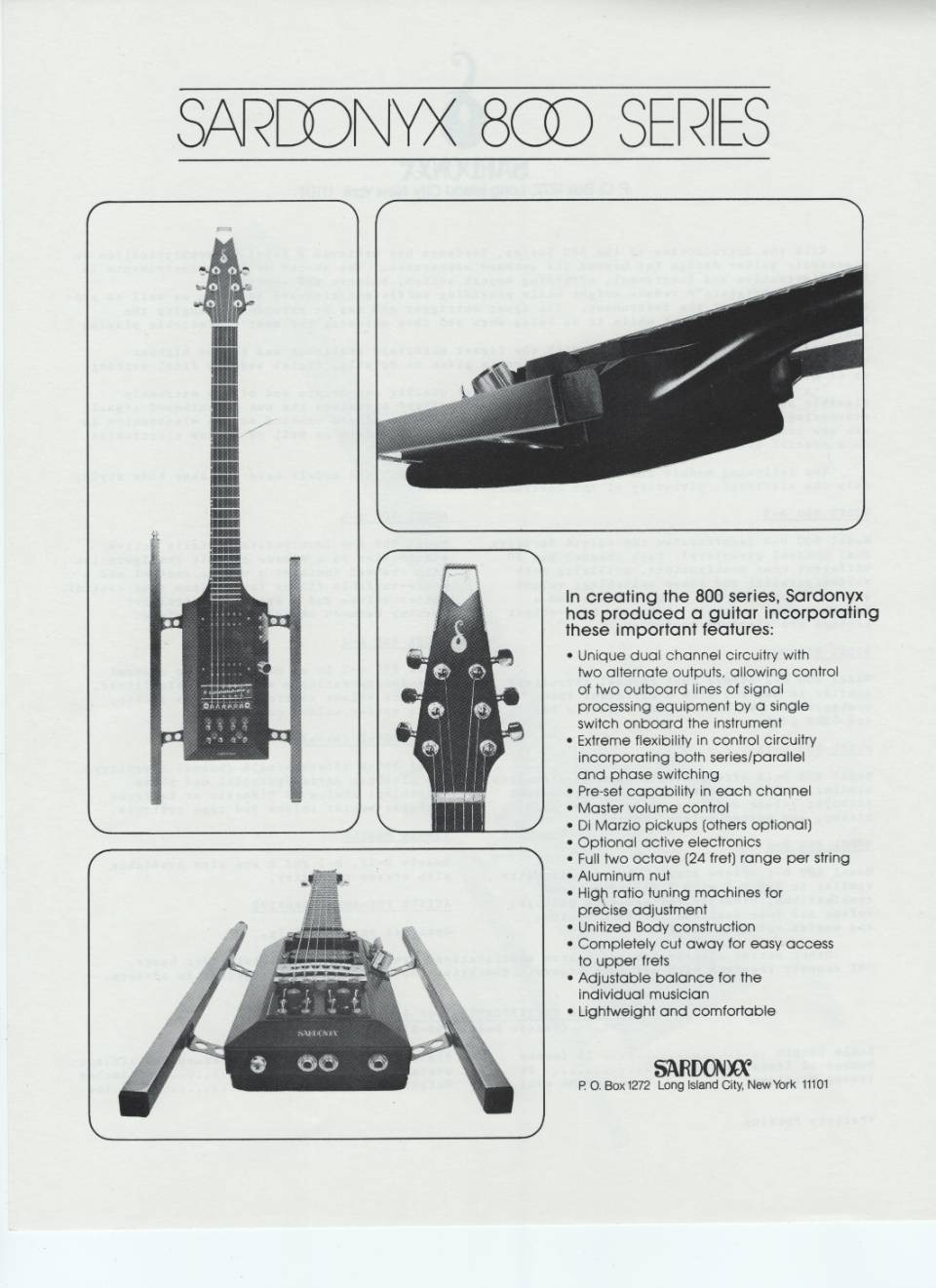 127814_5wku5zexjvrehz4n_58889.jpg
127814_5wku5zexjvrehz4n_58889.jpg
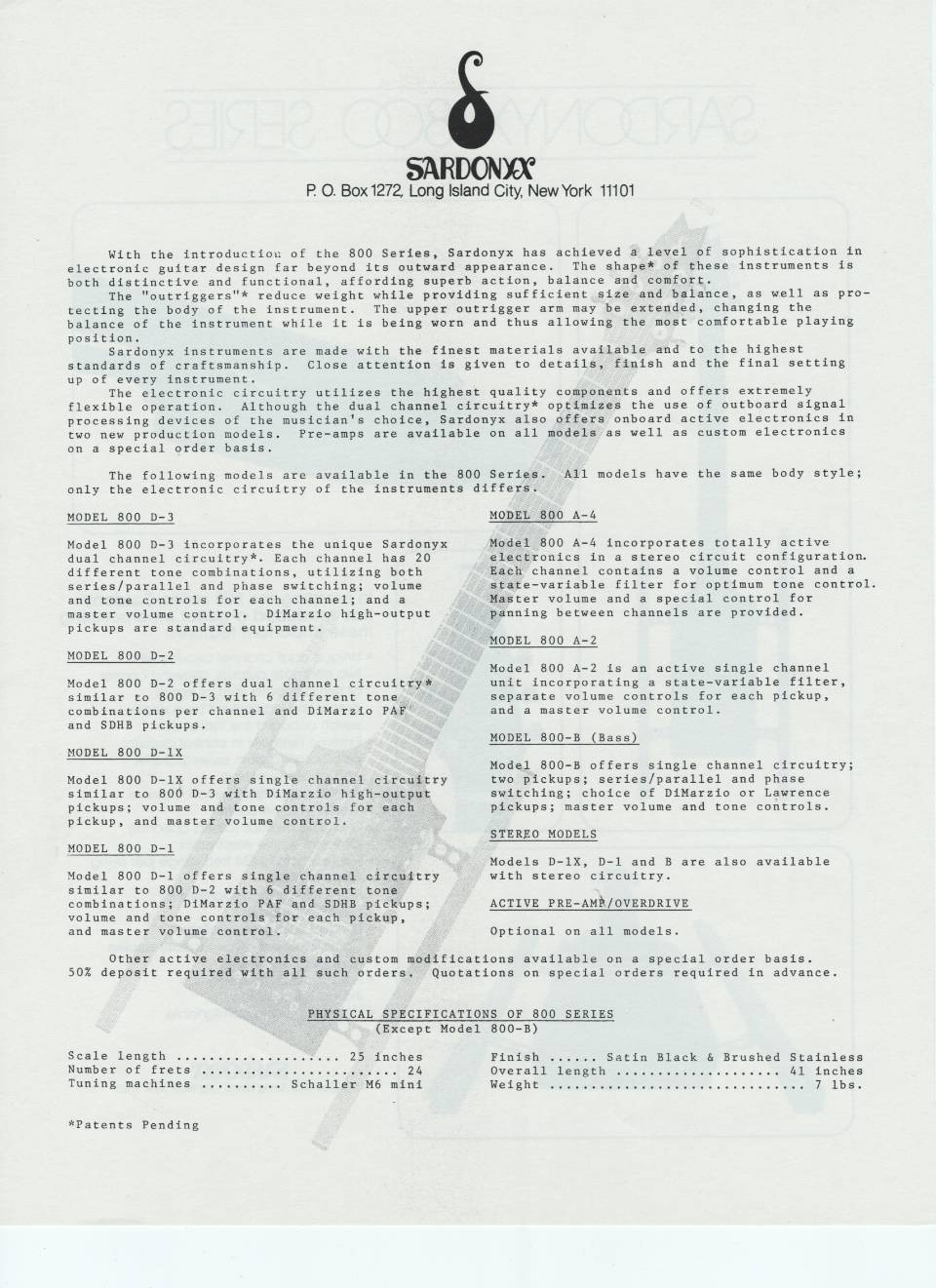 127814_5wku5zexjvrehz4n_58892.jpg
127814_5wku5zexjvrehz4n_58892.jpg
Hamer “Special”: A Gift from Rick Nielsen
 Hamer Special
Hamer Special
The Hamer “Special” was a custom guitar, a stock Hamer Special in white with a red stripe, gifted to Lennon by Rick Nielsen of Cheap Trick during the “Double Fantasy” sessions. “John Lennon” is written under Hamer, and “Rick N” is inscribed on the truss rod, a play on Rick Nielsen + Hamer = Rick N Hamer, referencing Lennon’s Rickenbacker use. It is currently displayed at the Rock and Roll Hall of Fame.
 16684233_1459829537363146_4211002947521131016_n.jpg
16684233_1459829537363146_4211002947521131016_n.jpg
1980 Red Fender Stratocaster: The Last Photo
 Lennon with red strat 1974
Lennon with red strat 1974
The 1980 Red Fender Stratocaster was a Candy Apple Red Strat with 22-carat gold electroplated brass hardware. Annie Leibovitz photographed Lennon playing it in bed, the last professional photos of him, used for promo and the inner sleeve of “The John Lennon Collection” album.
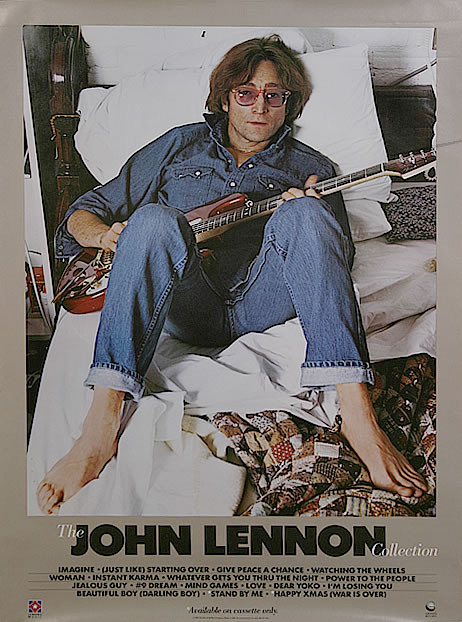 John-Lennon-The-John-Lennon-C-456109
John-Lennon-The-John-Lennon-C-456109
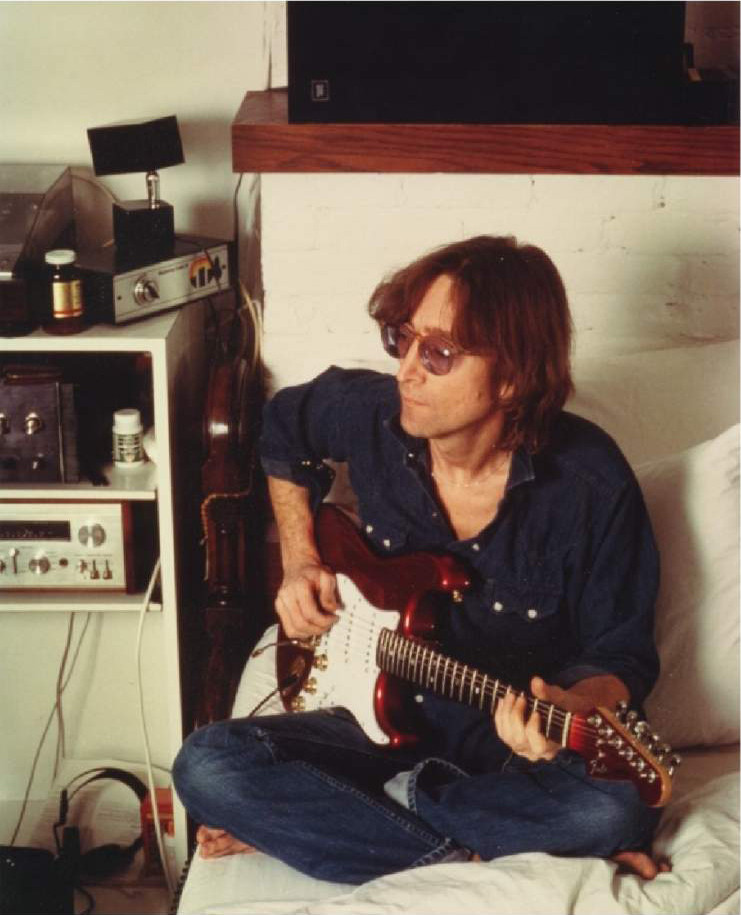 RedStratLastDay
RedStratLastDay
Cream Fender Telecaster with Bigsby: Imagine Sessions
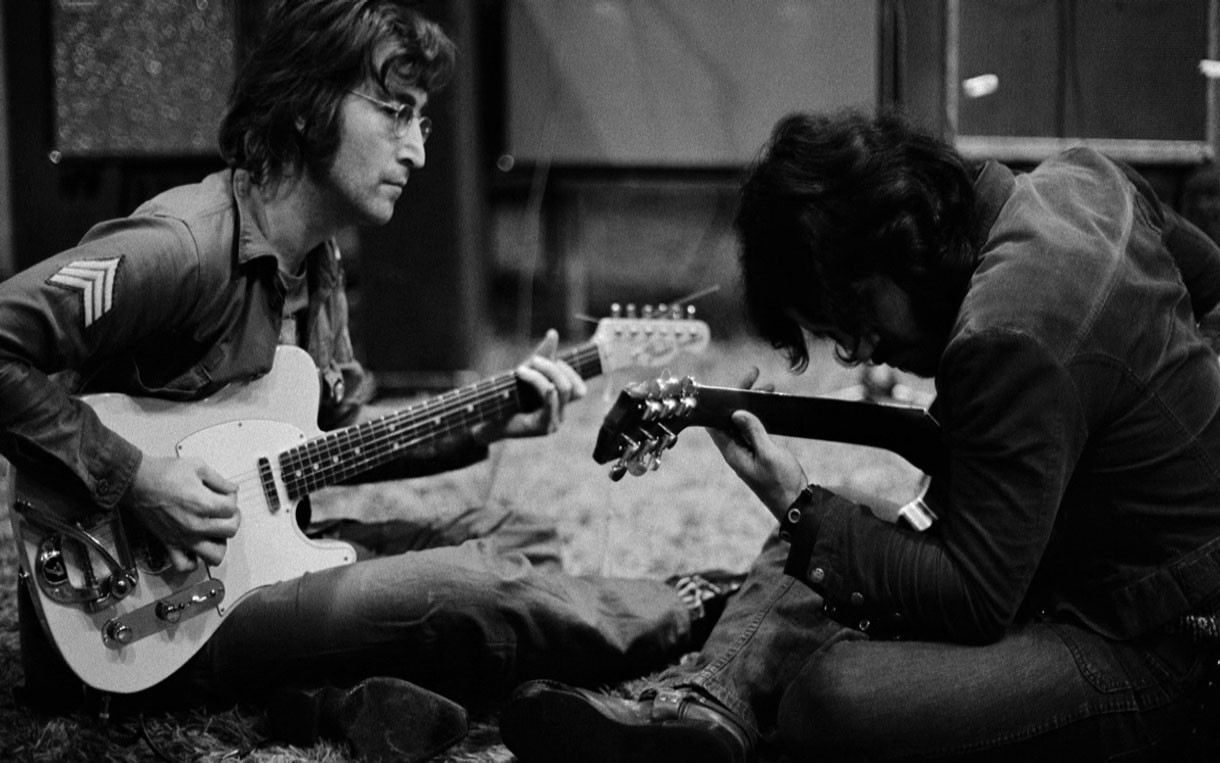 1465355A
1465355A
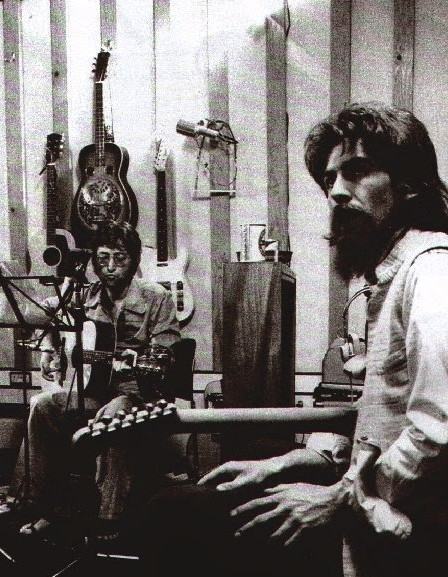 White Tele
White Tele
The Cream Fender Telecaster with a Bigsby style Tailpiece is seen in photos from the “Imagine” recording sessions, though no record confirms Lennon owned one.
 John Lennon Imagine sessions with Casino and Tele bigsby on the wall
John Lennon Imagine sessions with Casino and Tele bigsby on the wall
 54515049_806115626413212_2853108996200464384_n.jpg
54515049_806115626413212_2853108996200464384_n.jpg
Yamaha CJ-52 Dragon Acoustic Guitar: Japanese Craftsmanship
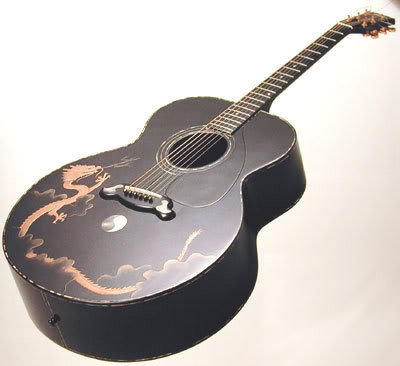 G9bYamahaDragon
G9bYamahaDragon
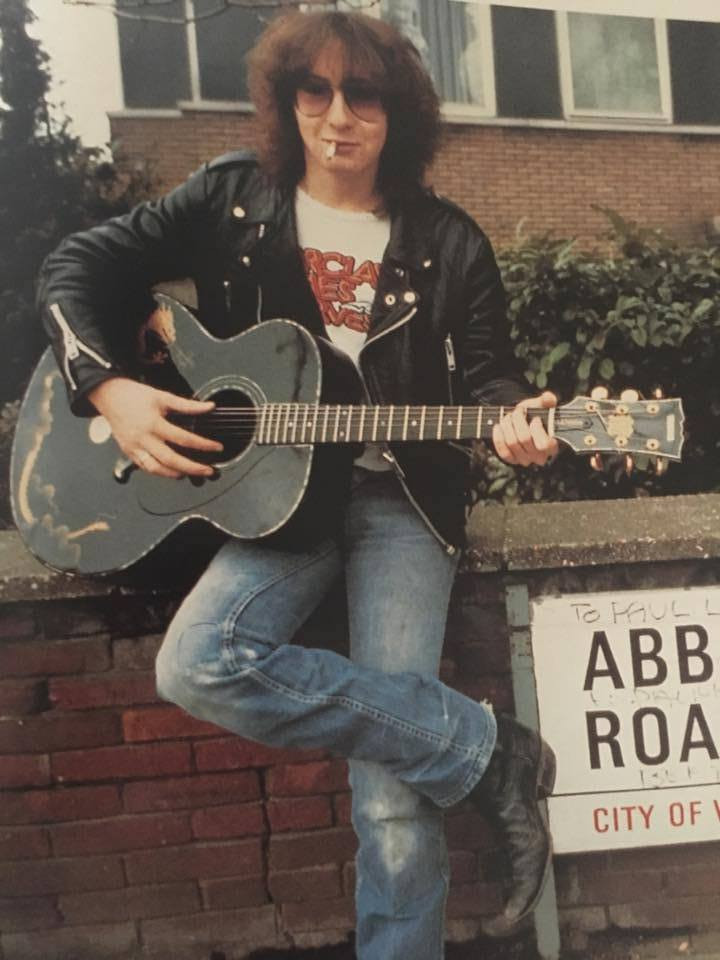 19398134_10155405991919814_1456526667_n.jpg
19398134_10155405991919814_1456526667_n.jpg
The Yamaha CJ-52 Dragon Acoustic Guitar was custom-made for Lennon in 1977 after he admired Paul Simon’s Yamaha “Central Park” acoustic. During a Japan holiday with Yoko, Lennon met with Yamaha to request a guitar, choosing the CJ-52 model with a Dragon motif in Maki-e, traditional Japanese art. Julian Lennon reportedly favored this guitar from his father’s collection.
 snip20161106_3.png
snip20161106_3.png
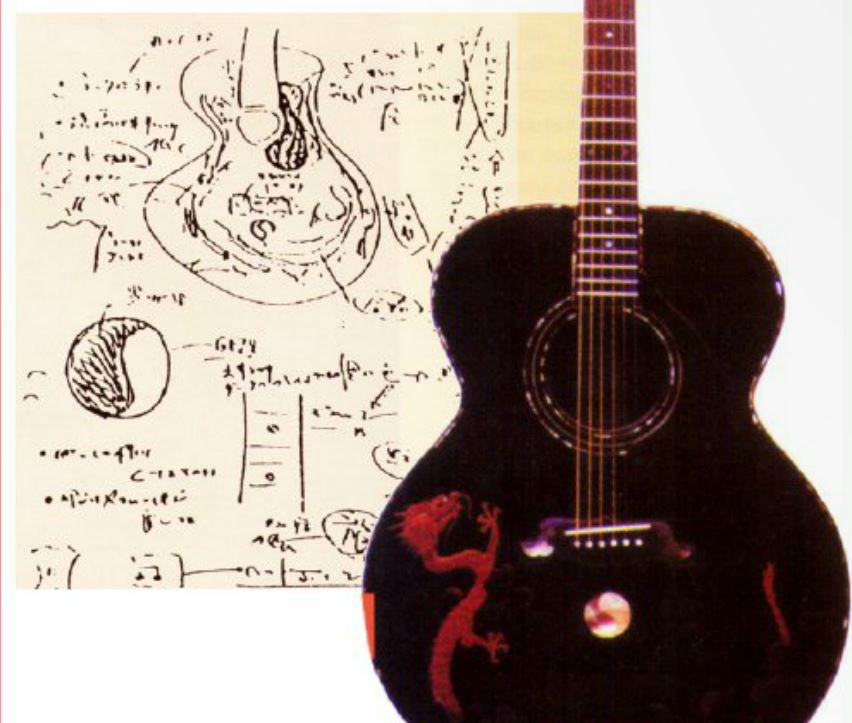 JLSketch
JLSketch
Yamaha CJ-52: Template for Signature Models
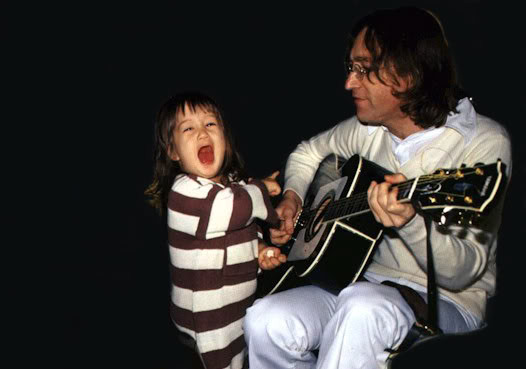 JohnSeanguitar
JohnSeanguitar
 julian_lennon_john_last_photo
julian_lennon_john_last_photo
The Yamaha CJ-52 model was used by John Lennon, Jimmy Page, and Paul Simon as a template for their signature Yamaha guitars. Yamaha considers it their most valuable guitar.
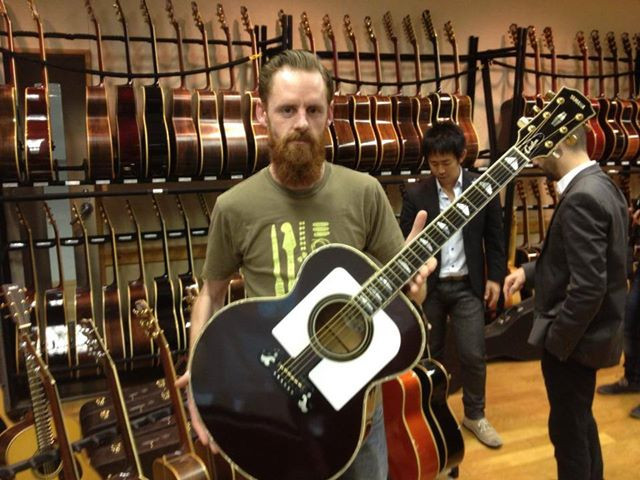 1450241_10151833347706056_307874162_n.jpg
1450241_10151833347706056_307874162_n.jpg
Assorted Guitars and Moments
Beyond the main instruments, Lennon’s guitar history includes various other models and memorable moments.
 133
133
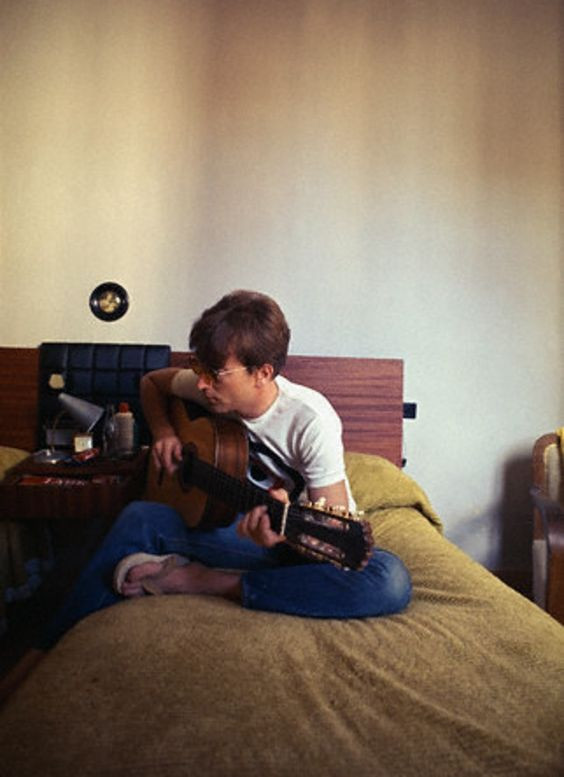 john-66.jpg
john-66.jpg
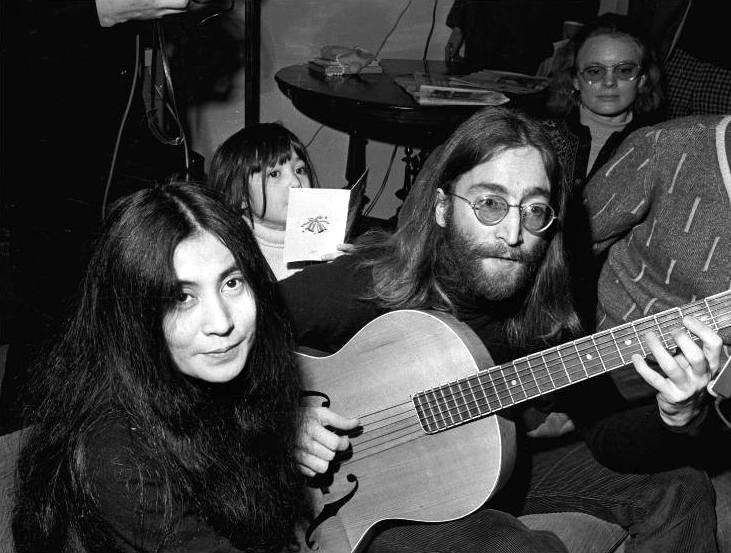 700104
700104
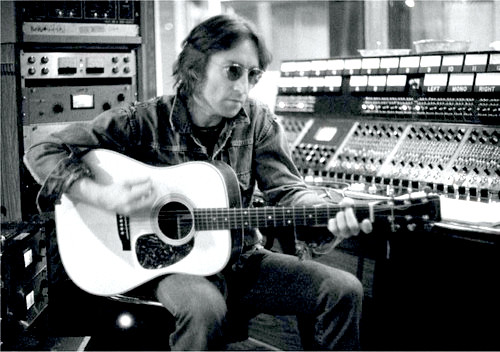 185
185
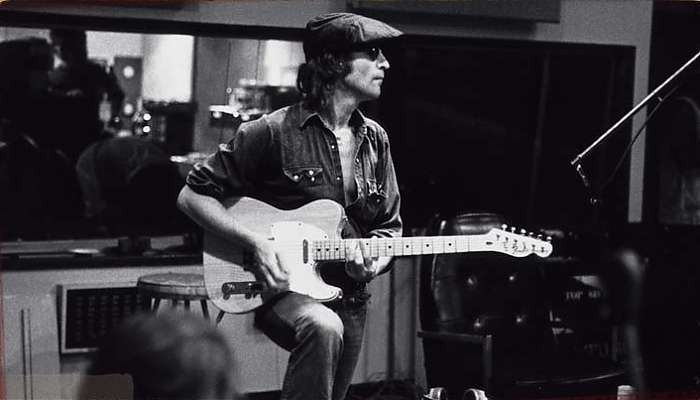 John Lennon Tele
John Lennon Tele
Lennon used a Fender Telecaster during the “Walls and Bridges” recording sessions in 1973.
 John Lennon and Yoko Ono File Photos – 1971
John Lennon and Yoko Ono File Photos – 1971
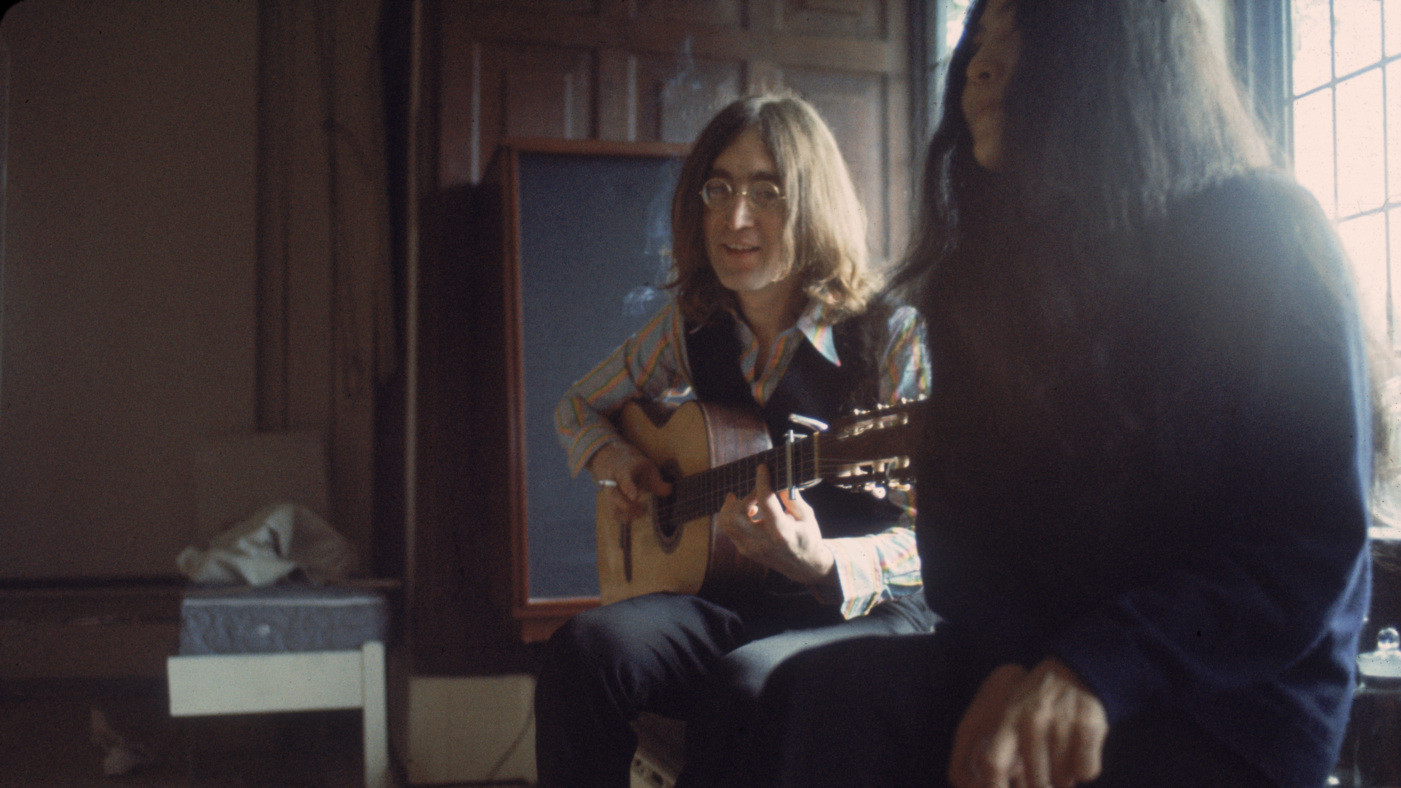 British musican and artist John Lennon (1940 – 1980) plays guitar next to his future wife, Japanese-born artist and musician Yoko Ono, December 1968. (Photo by Susan Wood/Getty Images)
British musican and artist John Lennon (1940 – 1980) plays guitar next to his future wife, Japanese-born artist and musician Yoko Ono, December 1968. (Photo by Susan Wood/Getty Images)
Fender VI 6 String Bass Guitar: “Helter Skelter” Bass
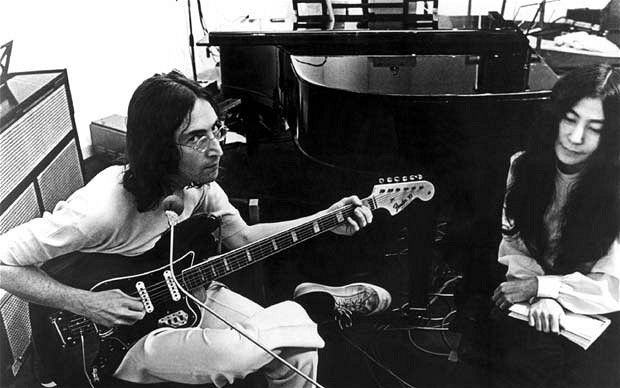 johnlennon_2043699i
johnlennon_2043699i
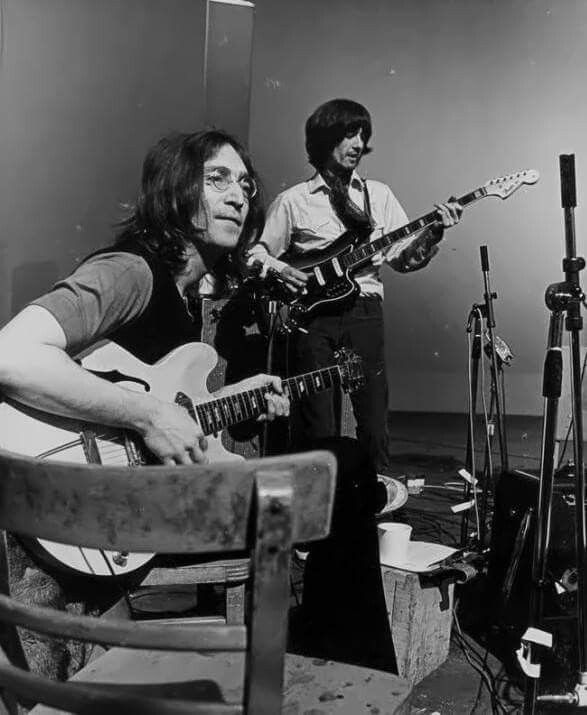 v12.jpg
v12.jpg
The Fender VI 6 String Bass Guitar was used by Lennon on “Helter Skelter.” George Harrison played it in the “Hey Jude” video. Released in 1961, the Fender VI is a six-string bass tuned E to E, an octave below a standard guitar, related to the Fender Jaguar.
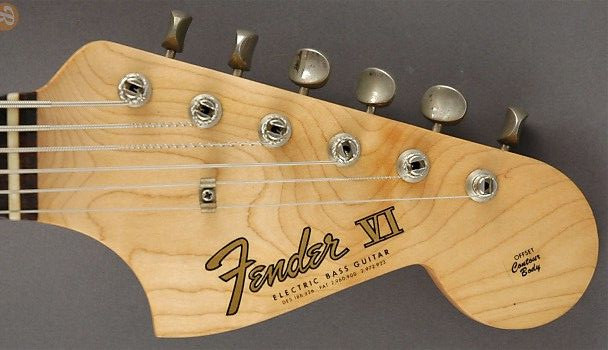 v1-1.jpg
v1-1.jpg
 John_Lennon__s_Guitar_by_minm01
John_Lennon__s_Guitar_by_minm01
Circa 1959-60 Hofner Presidents HOFNER Guitar SN 6689: Birthday Gift
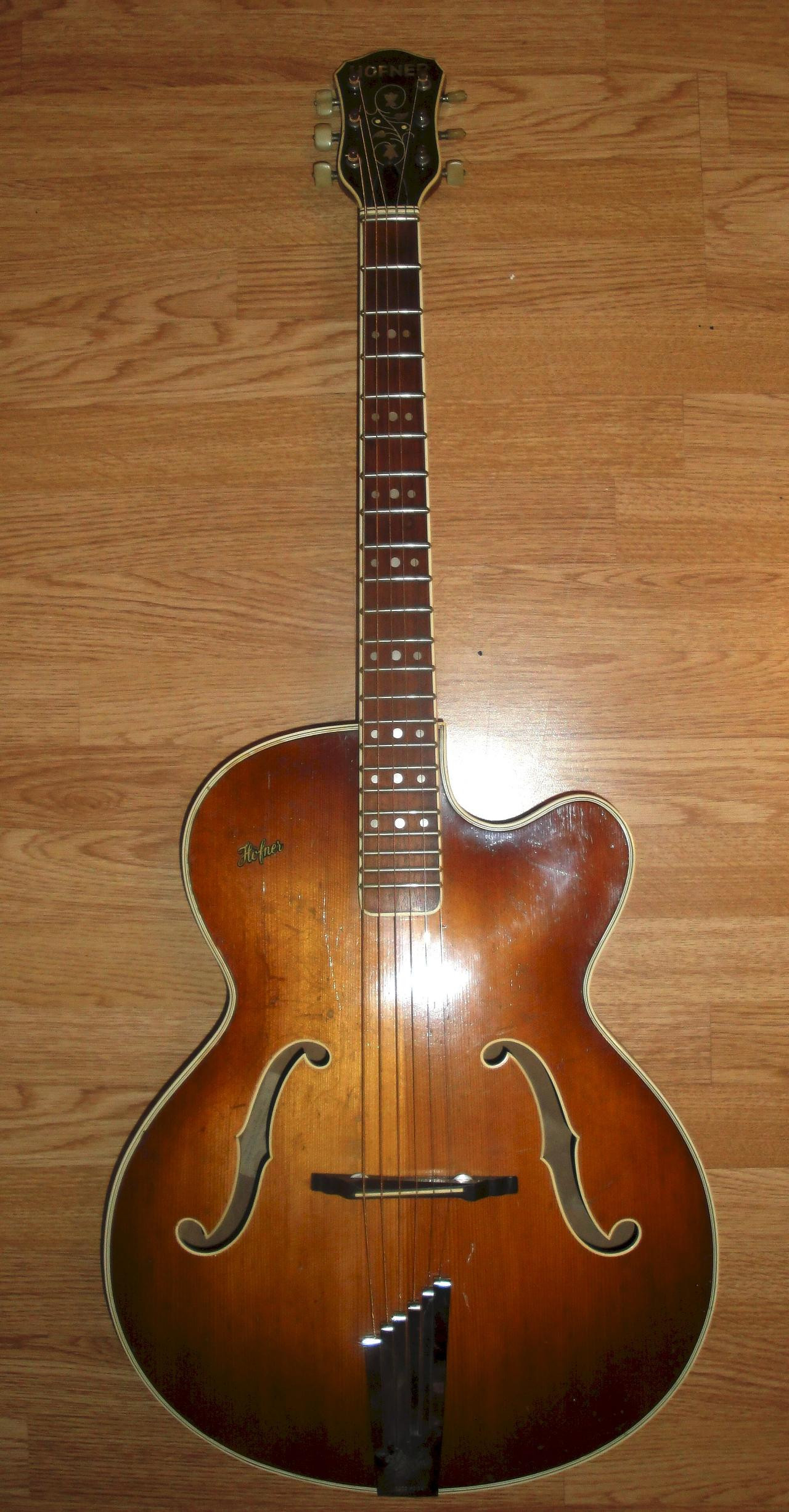 HofnerPresident
HofnerPresident
The Circa 1959-60 Hofner Presidents HOFNER Guitar Serial Number 6689 was gifted by Lennon to his roadie Tappy Wright for his 21st birthday. Tappy Wright’s book “Rock Roadie” documents their friendship. Lennon gave Tappy the guitar at his birthday party in December 1964, organized by The Animals.
No photos exist of Lennon playing this Hofner President, suggesting home use for songwriting during the early 60s, potentially used to write classics like “Please Please Me,” “Help,” and “Ticket To Ride.”
1963 Fender Duo-Sonic SN L22604: Early Fender Electric
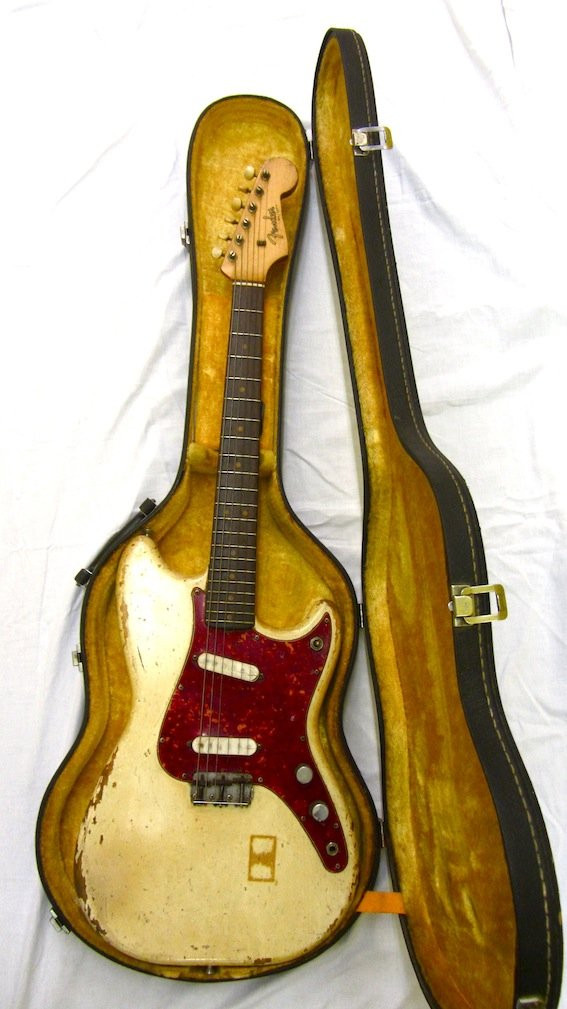 4598896107
4598896107
The 1963 Fender Duo-Sonic SN L22604, wrongly described as a Music Master in an auction, was an early 1960s Fender guitar owned and played by Lennon. It was auctioned in 2013 and offered for sale again by London Vintage Guitars in 2019.
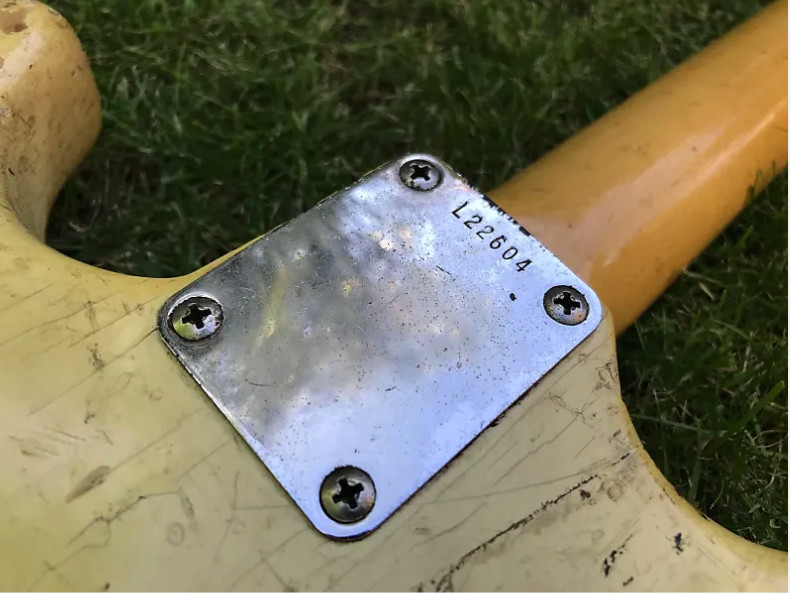 john-sn.png
john-sn.png
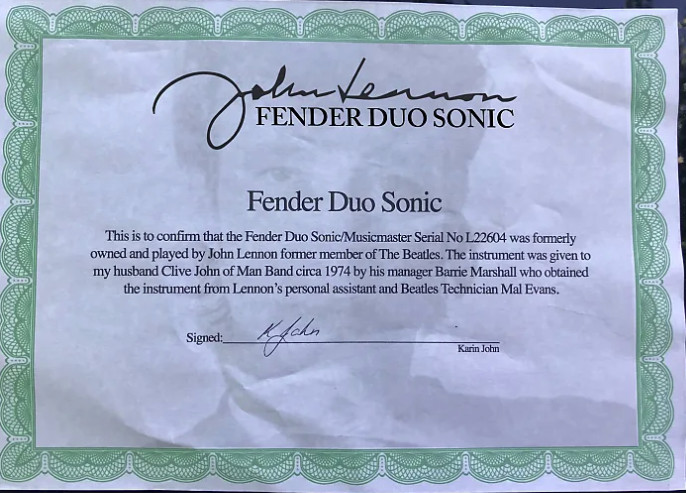 john-sn2.png
john-sn2.png
1966 VOX Kensington: Gift to Magic Alex
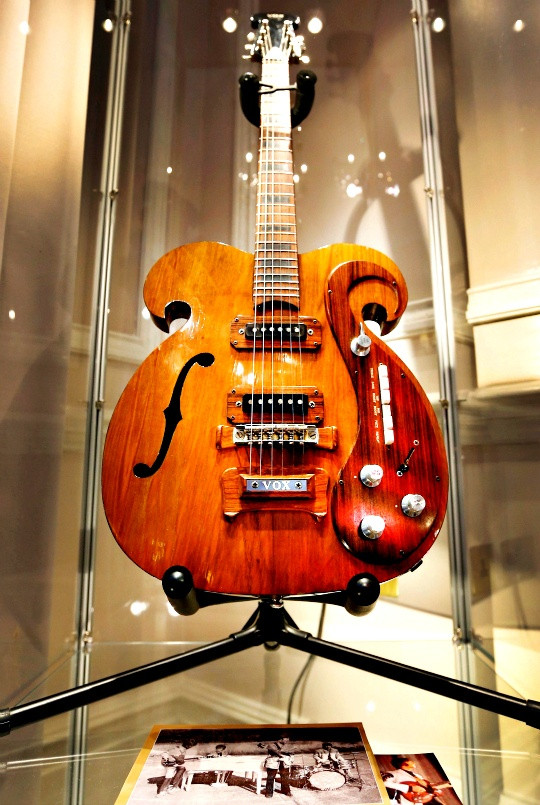 b_1368966111_540x540
b_1368966111_540x540
The 1966 VOX Kensington was used by George Harrison for “I Am The Walrus” in “Magical Mystery Tour” and by Lennon in the “Hello, Goodbye” video. The Beatles gifted it to Alexis “Magic Alex” Mardas in 1967 for his 25th birthday. It was sold at auction for $408,000 and is owned by Colts owner Jim Irsay.
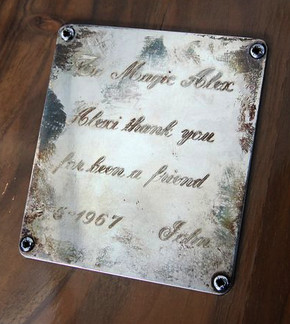 Snip20150222_2.png
Snip20150222_2.png
1957 Hofner Club 50: Julian Lennon’s Inheritance
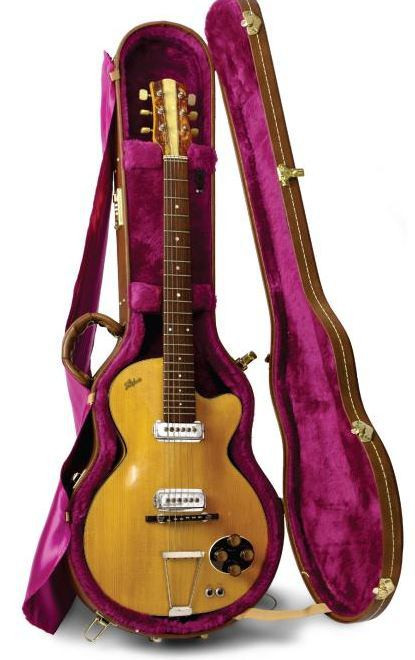 beatles-memorabilia5
beatles-memorabilia5
The 1957 Hofner Club 50 is owned by Julian Lennon. Randy Richardson gifted it to Julian at a Toronto concert, feeling it belonged to John’s son. The guitar came from Liverpool to Canada in the 60s with a Georgetown, Ontario family.
Randy intended it as a gift for John but gave it to Julian after his passing. Julian sent Randy a thank-you poster, signed “Thanks Valotte” your friend Julian.” Randy had almost met John in NY in March 1981, planning to give him the Hofner.
Conclusion: A Legacy in Wood and Wire
John Lennon’s guitars are more than just instruments; they are artifacts of music history, each with its own story, contributing to the soundtrack of generations. From the humble Gallotone Champion to the iconic Rickenbackers and versatile Fenders, Lennon’s guitar choices reflected his evolving musical journey and helped shape the sound of The Beatles and his solo career. These guitars remain symbols of his genius, creativity, and lasting impact on music.
